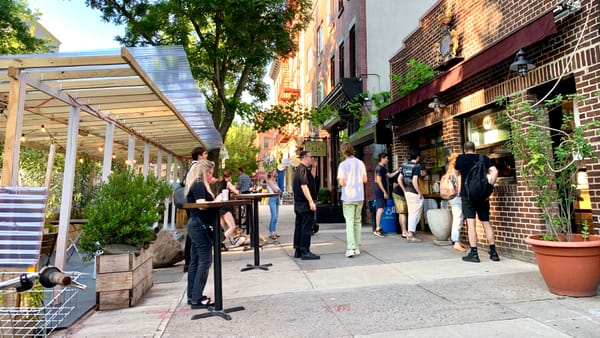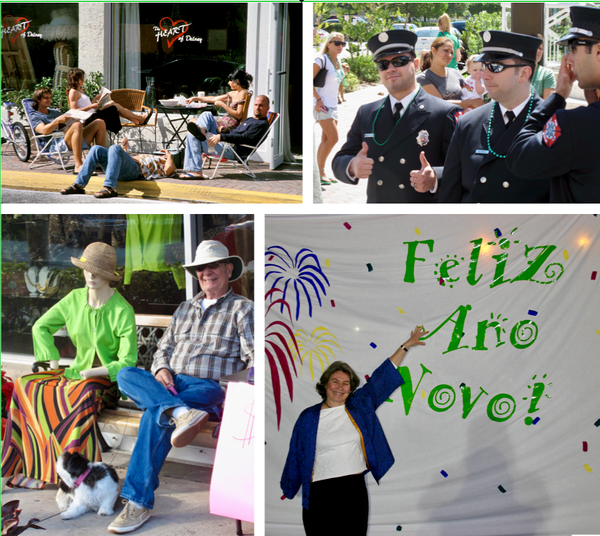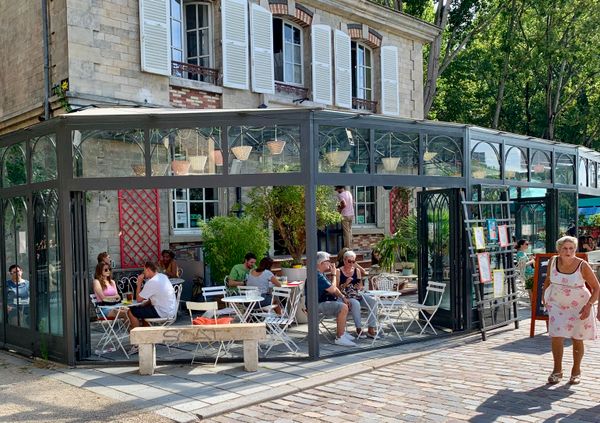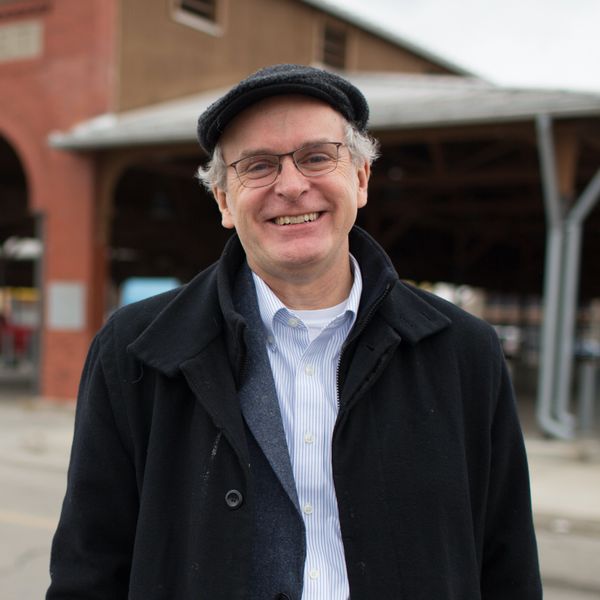Updated: July 10th, 2022
Over the past few years, we have been on a journey to rediscover the small towns and cities in New England. As people who grew up in small towns, we had first-hand experience with public spaces that date back to a time when social life was very different than it is today. We have watched the decline of small towns, especially because we also worked actively in Main Street revitalization for more than 40 years. We understand that it is only through the tireless efforts of locals that downtowns can be brought back to life.
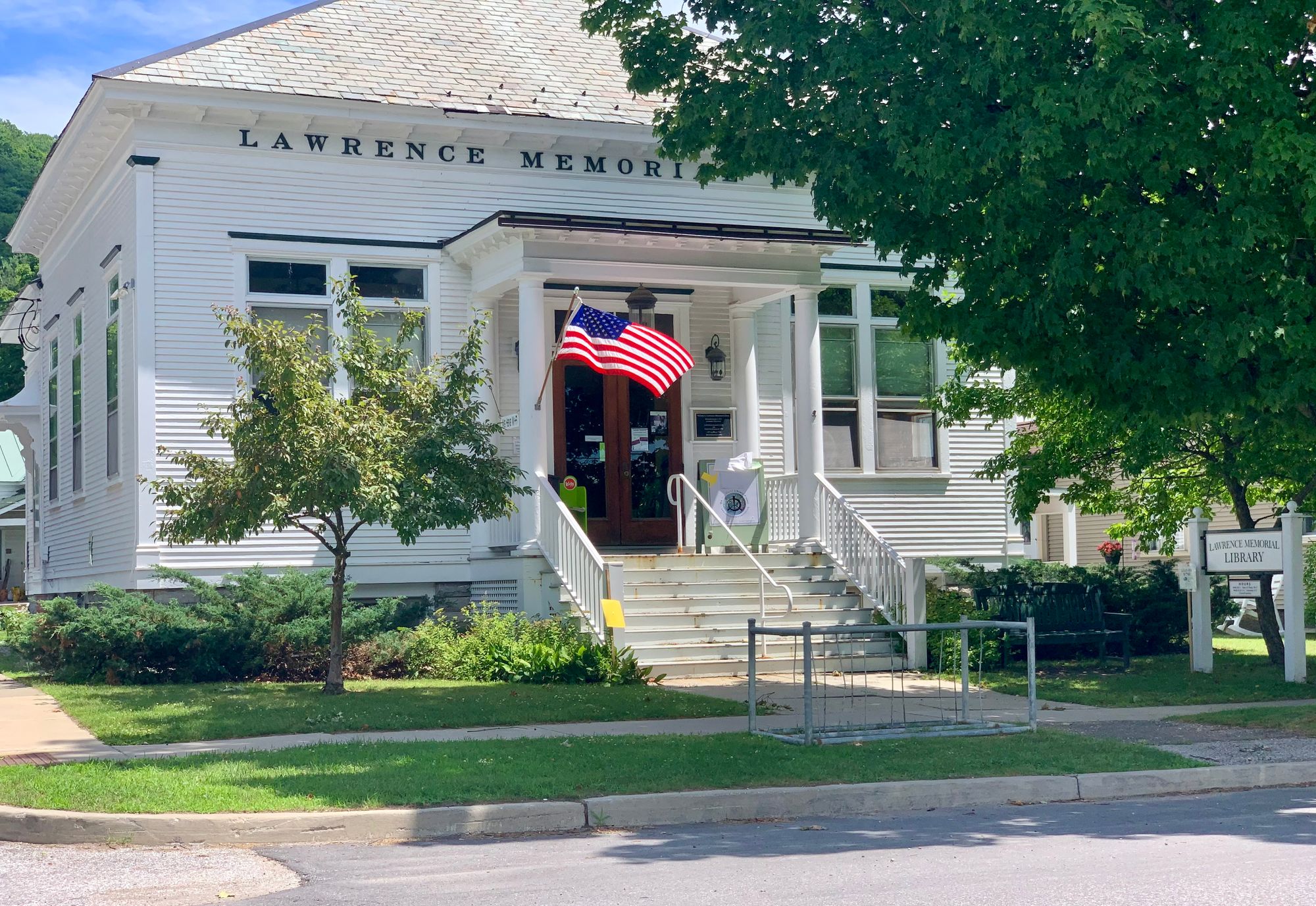



The real treasure of New England is in the small towns that created their own identity starting more than a century ago. They are coming back with a renewed interest in small-town living.


"How are small towns faring now?" we wondered. With most people staying nearer to home, we hoped to find out if small town life became more important and, if so, how could that new energy change their future?
While there’s some very good news, it’s spotty progress and we found it irresistible to start brainstorming among ourselves as to what could make these towns better places, recognizing that we were just visitors, but ones that could look at a town with experienced (and fresh) eyes.
In the pre-automobile and pre-digital age, sidewalks in small towns organically connected to the main street and other community assets such as schools, libraries, parks, ballfields, stores, markets, houses of worship, cemeteries, surrounding neighborhoods, and other essential community institutions. They were well used. Spontaneous encounters were what brought people out every day. People wanted porches on their house so they could interact with their neighbors and keep an eye on children as they played, often in the street. They went to their local stores not only to shop, but also to socialize.
We were surprised when we saw how much work was needed in order to bring this public life back. All but a few towns we visited had lost the natural connections that once defined them – eroded by decades, perhaps even a century, of decisions to foster the automobile and big-box sprawl. Finding thriving, neighborly small towns with ample social life on their sidewalks was harder to do than we had imagined. Luckily, we did find and learn from some truly wonderful examples of small-town social life, and it is these glimmers of hope that can lay the foundation for new attention to public spaces in smaller communities.
Five Core Strategies for Small-town Downtowns
We have boiled down what we learned during our travels to five core strategies that any town can implement:
1. Be Aware of the Impacts of Major Intersections, Narrow Sidewalks, and Overly Wide Streets.
The biggest obstacle to vital community life are auto-dominated streets and passive public places, including most parks and public buildings in the towns we visited. These are trends that speak to a broader pattern in many communities across North America. To make matters worse, the roads in most towns we looked at had been widened, along with the intersections.
2. Reclaim, Remake, and Reconnect Sidewalks as the Fundamental Backbone of Small Towns – and Give Less Space to Cars.
Major intersections dominate the center of most towns, and often in places where the perceived "center" of the town had once likely been. On top of that, sidewalks are often too narrow — a combination that makes for un-walkable, inaccessible places. Capturing space back from cars can be done DIY-style with a paint brush or a temporary café, as we have learned during the pandemic. Ideally, as communities invest in better infrastructure it becomes more and more possible to make these experiments permanent.
3. Create a Critical Mass of Activity by Starting with the Power of 10+
Creating a network of special, small public places – like the benches in front of an ice cream shop or the steps of the public library — is going to be key for small-town recovery. Communities need a center (or multiple centers) and a series of places to make them livable, dynamic, and downright fun. Towns can start with ideas like the Power of 10+, and use this to guide the creation of clusters of destinations. This can range from squares to markets, all of which can help create the critical mass of activity that makes a place feel exciting. It can also mean the activation of small spaces that collectively create a dynamic whole.
4. Focus Energy on Making Town Greens, Parks, and Other Spaces Multi-use, Multi-purpose, and Less Passive.
People are drawn to lively spots, where there is a mix of things to do and other folks with whom to socialize. Bringing back the public square as a new opportunity for small towns means they'll have common ground where people can connect as friends and neighbors. Today, we need to reinvent community anchors to rouse vital public interaction. The best squares—which can take the form of parks, markets, even shopping streets or plazas—become sources of civic pride, sites of protest and conversation, and social hubs.
5. Public Buildings can become strong anchor institutions by expanding their role in their communities.
Historically, City Halls, had opera houses or fire stations as part of their building. But bringing the inside out and diversifying what they offer can dramatically change how people use their community. Other public buildings, especially libraries, post offices, schools, even banks are all anchor institutions and can expand their impact dramatically.
Camden, Maine - The Town that Tells it All
A waterfront community with a long history, Camden is a popular destination on the Maine Coast. Being a tourist town, as well as a second home and retirement community, means that there are a lot of people around who want to explore, and will gladly take up new reasons to walk, eat, shop, or hang out on a daily basis. The Camden waterfront, library, and park, as well as the Main Street and its connections mix together to create a steady flow of people and foot traffic. And of course, we couldn't forget the two ice cream stands that are such valuable local destinations.
The best towns are layered in their uses, with public spaces easily reached from Main Street. Here's why Camden works:
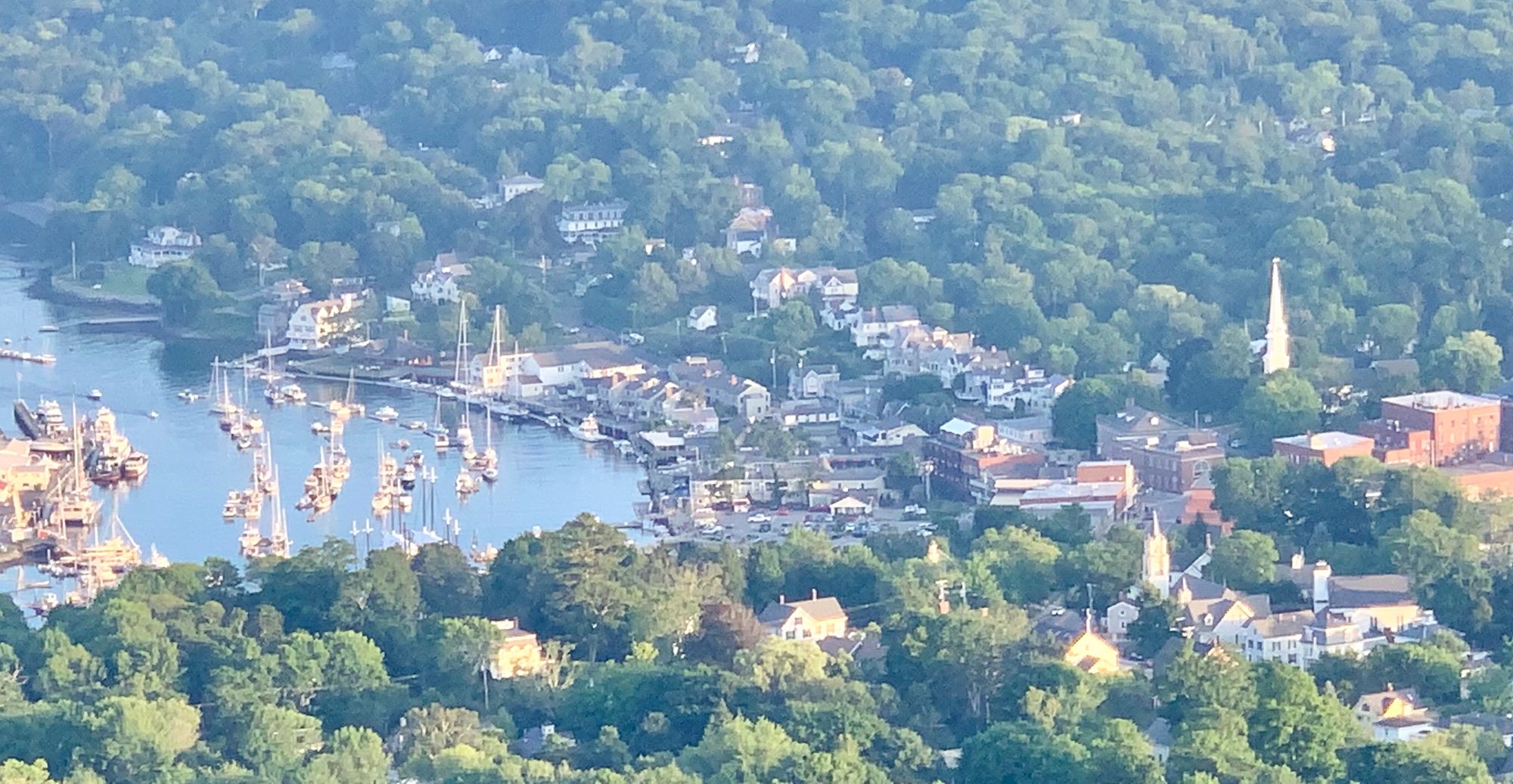
People-oriented Sidewalks
The backbone of downtown Camden is its Main Street, with a nice balance of space for cars and people. Because of this thoughtful allocation of space, cars don't drive too quickly and sidewalks remain social places for people to shop and hang out.
Every storefront matters in Camden and many businesses go out of their way to make them friendly and inviting. Even where sidewalks are narrow, they are usable. More places to sit (possibly by removing a few parking spaces) would make it even better.

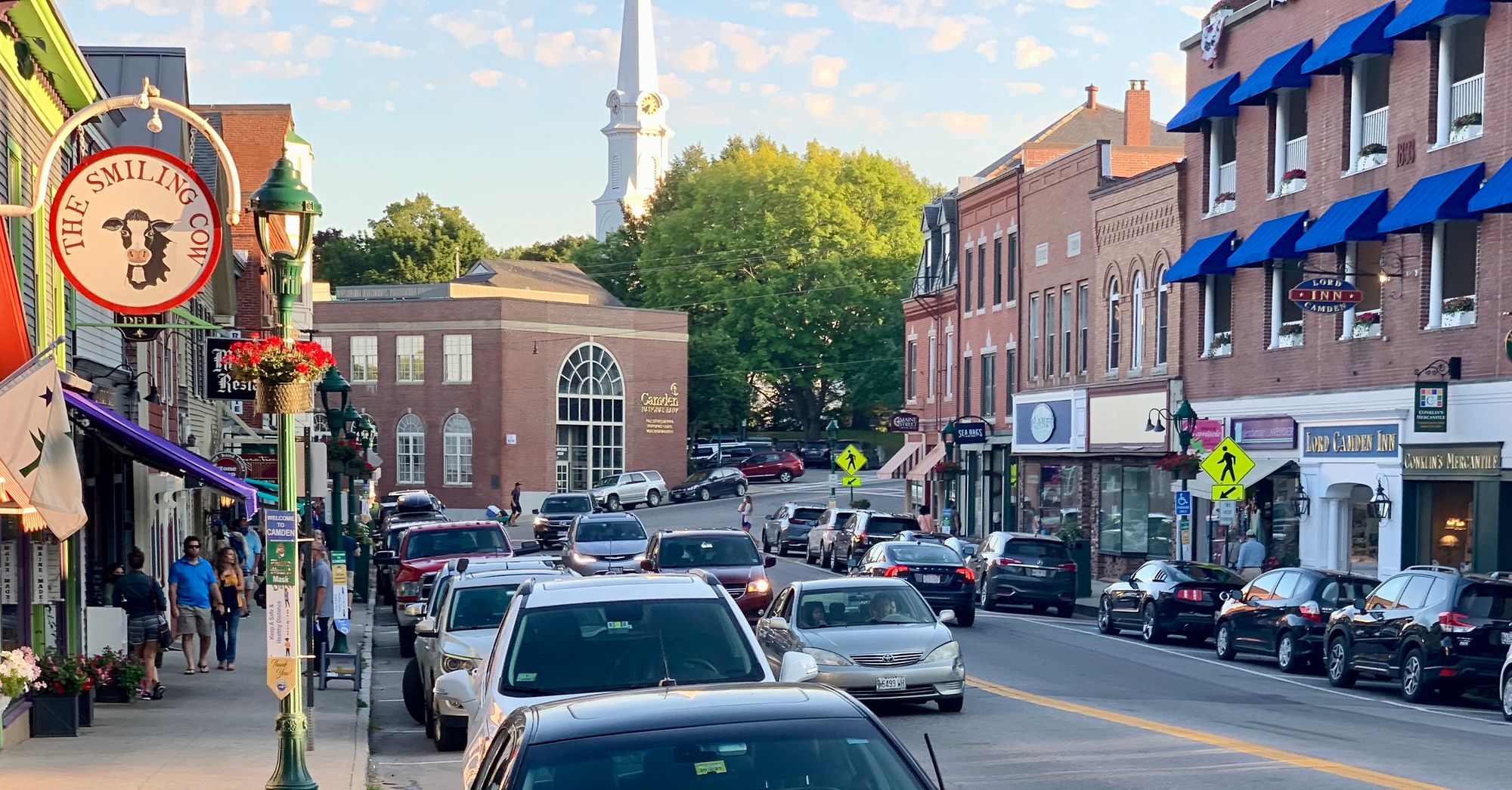
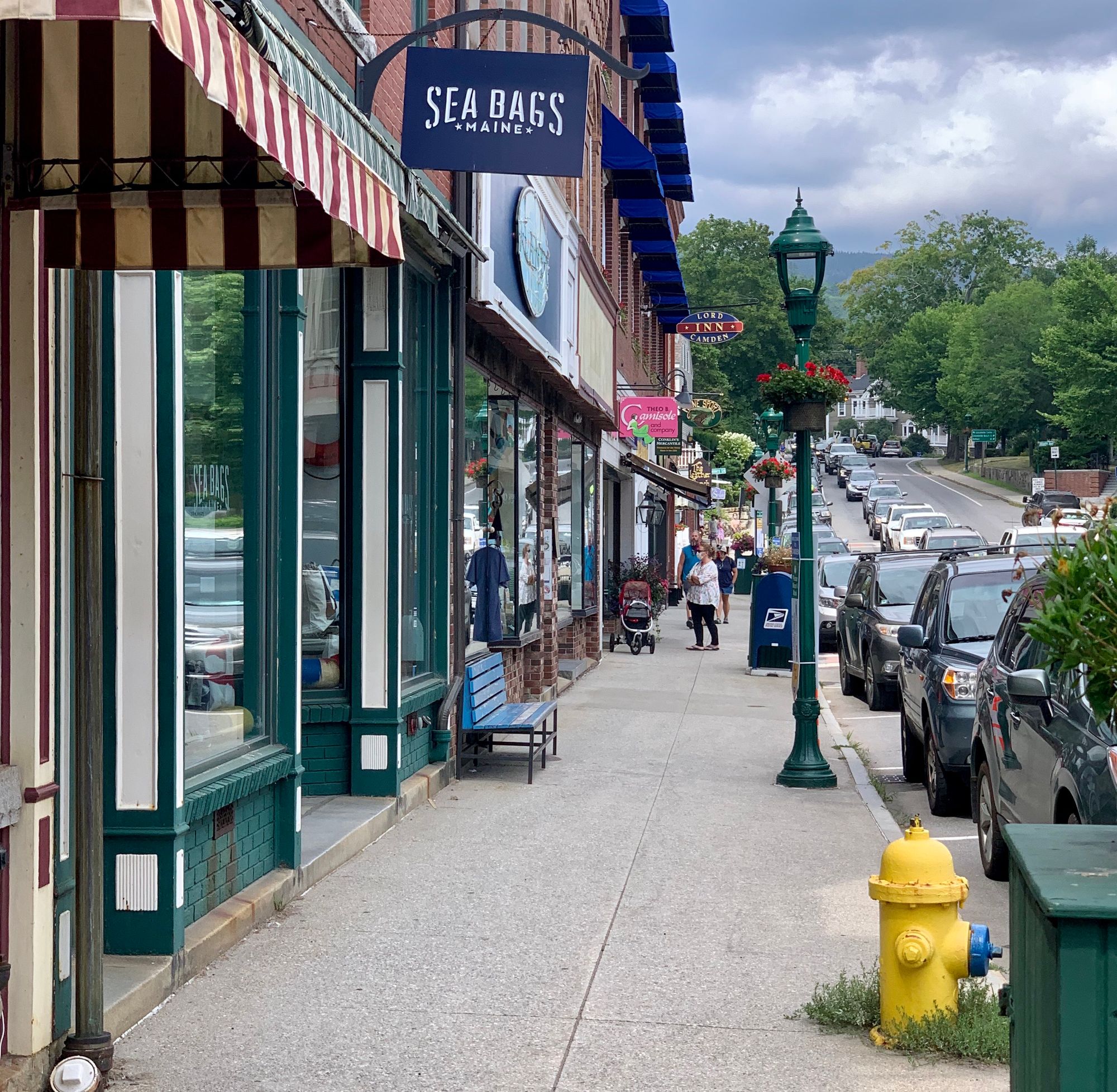
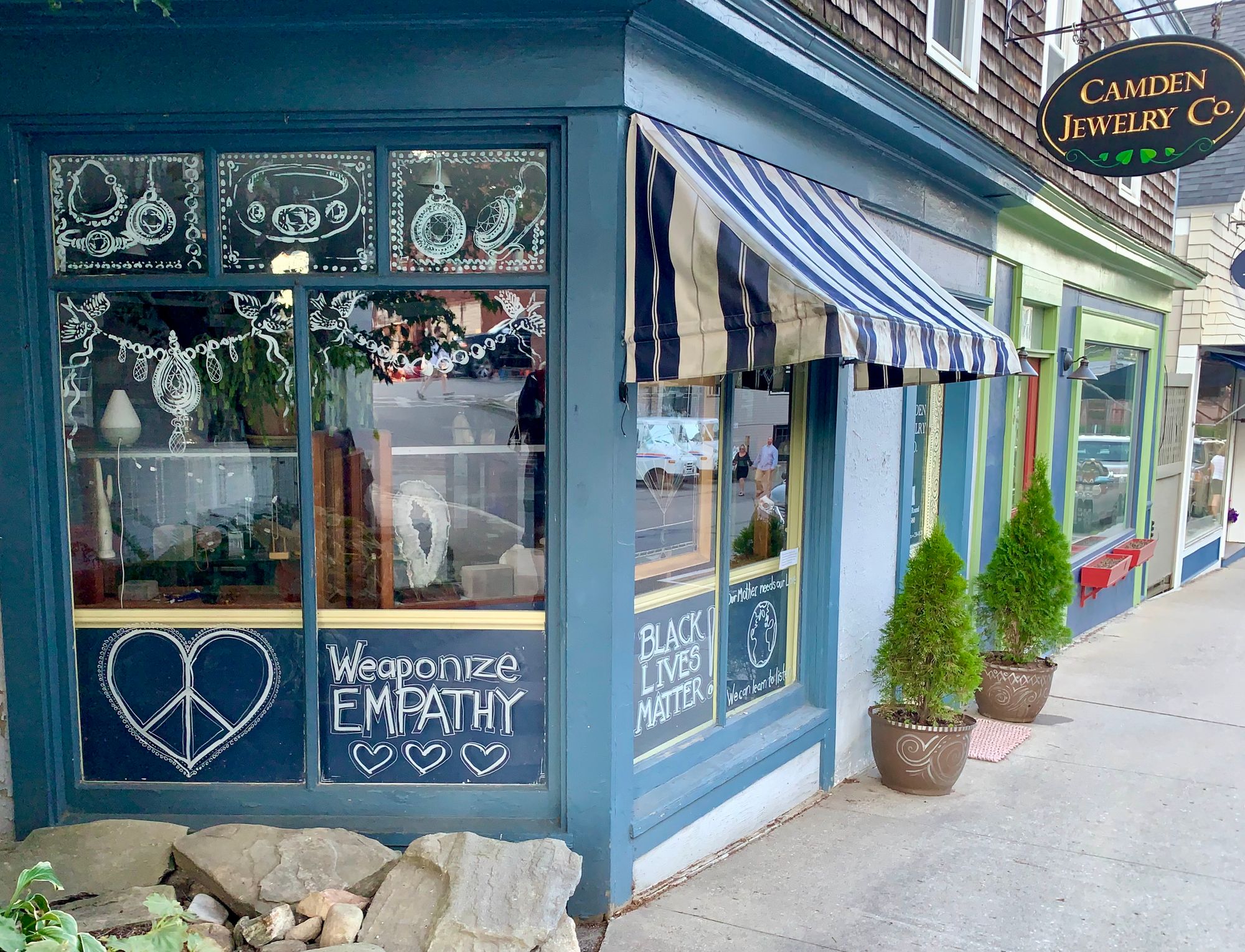
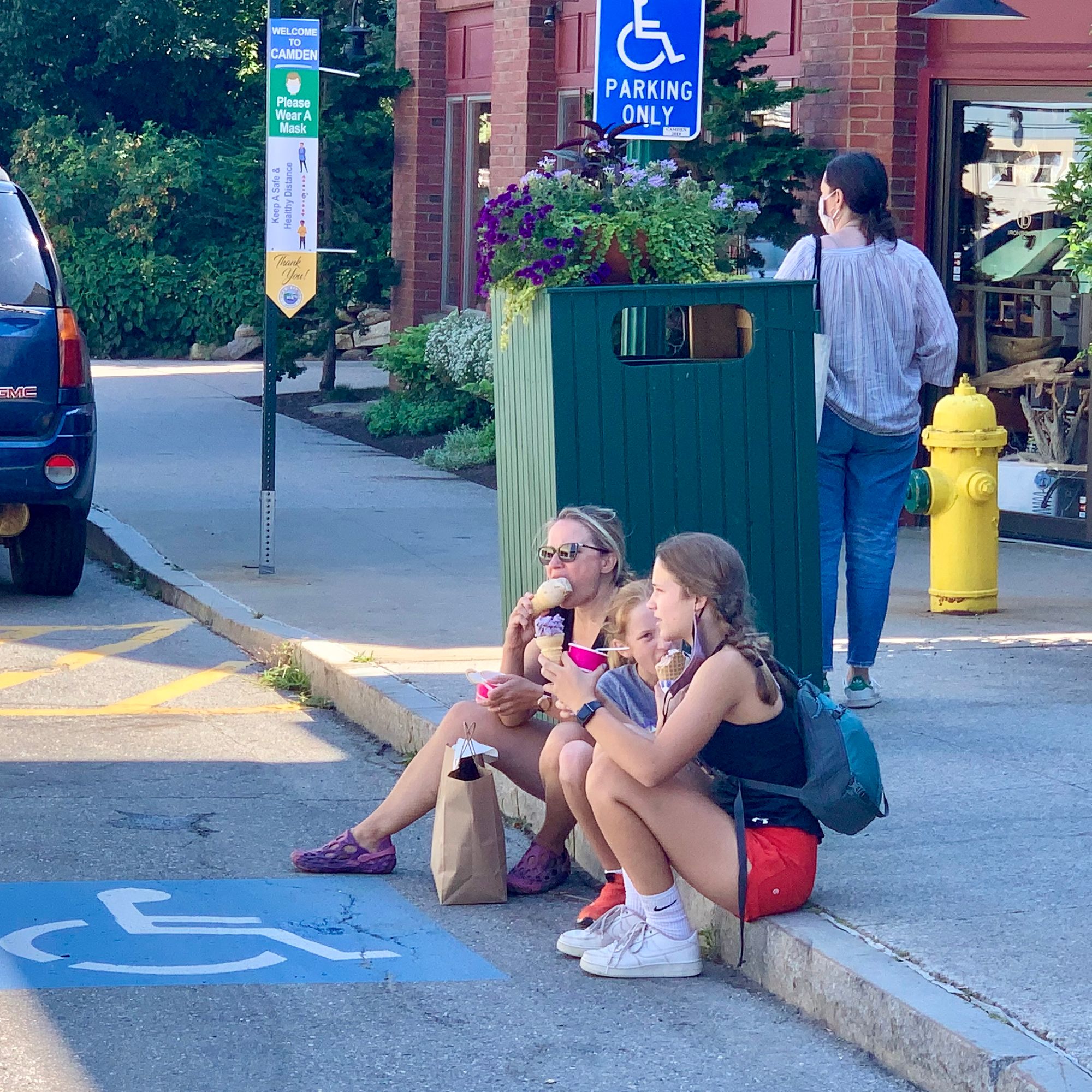
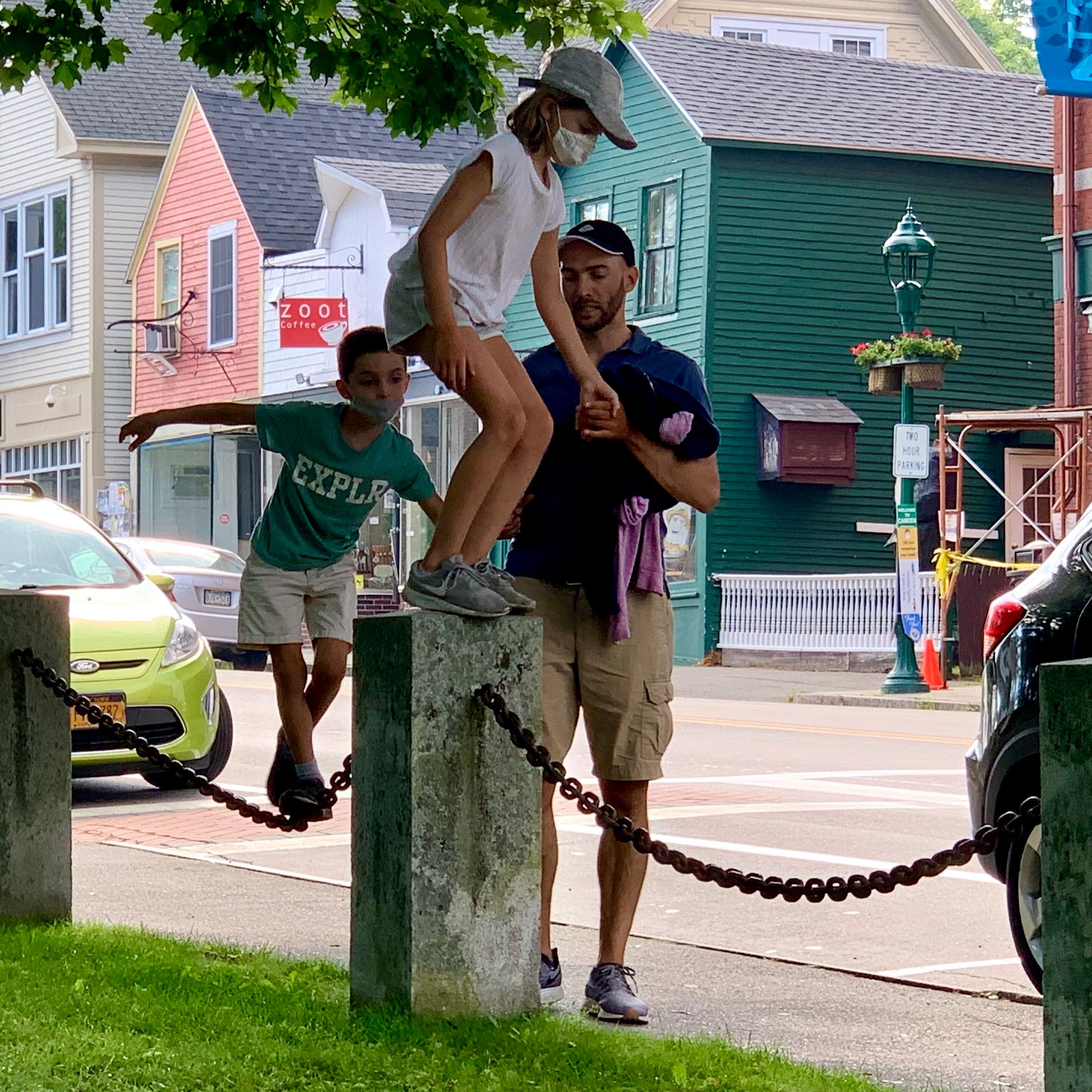
Connected Waterfront
Camden's waterfront is accessible and connected to the Main Street. Waterfronts need a variety of attractions to become popular destinations, and Camden has one of the best. One of the nice features along the waterfront are streets designed to provide shared spaces with pedestrians — something that could be tried elsewhere in downtown.


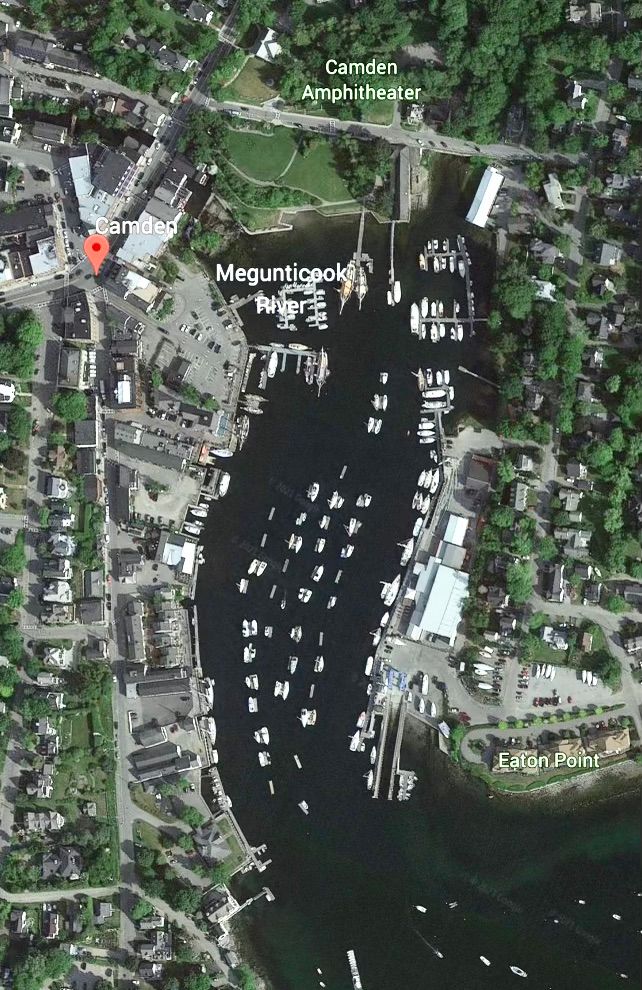

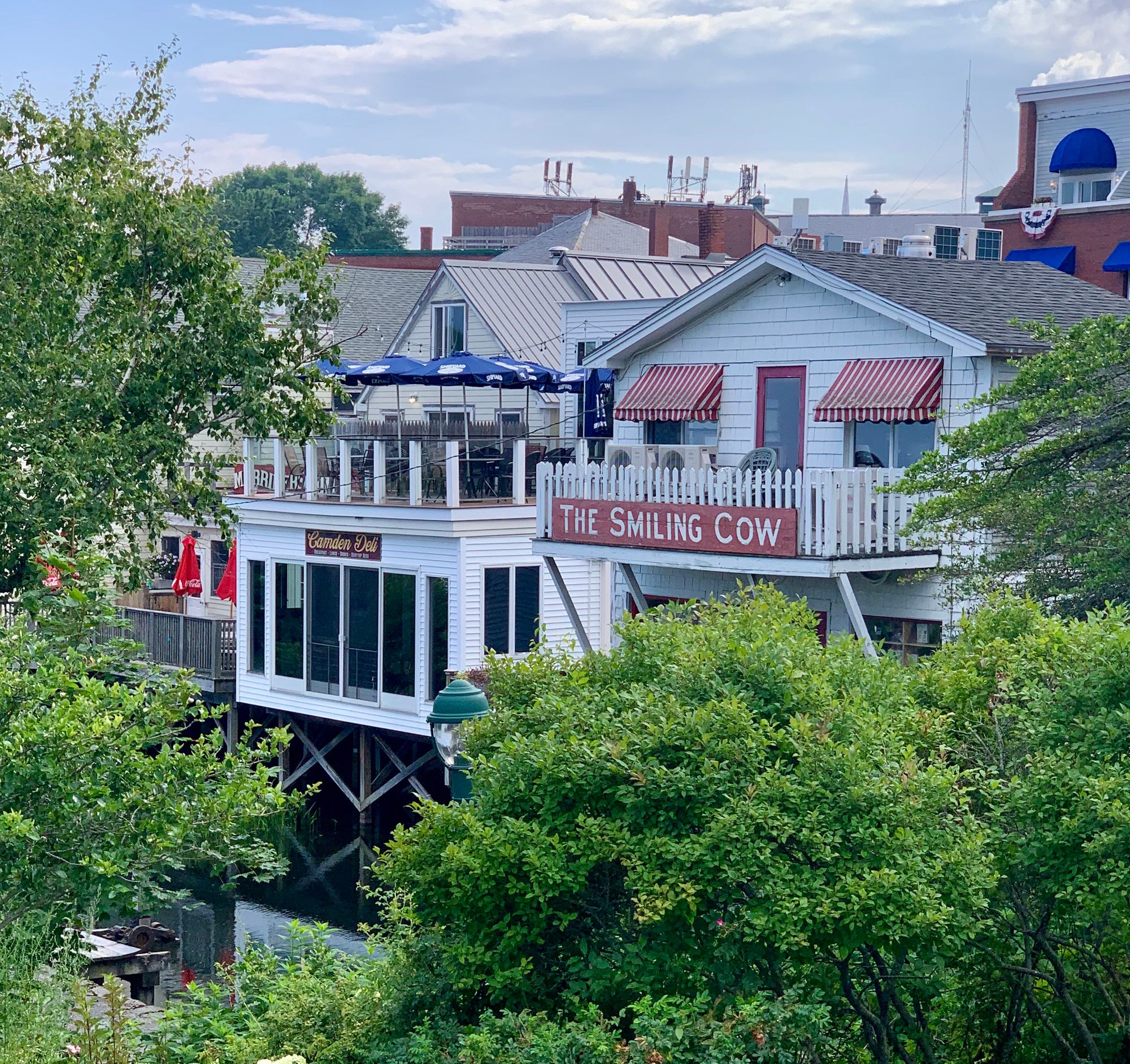


Ice Cream and a Book Store
Here's a wonderful example of a book store next to a tiny ice cream stand. Communities need a series of places like this — inviting and complementary to one another. If the book store rolled out books and added seating for their coffee window as well as for the ice cream shop, the two businesses could have 12-hour activation of their storefronts. From early-morning coffee drinkers to folks looking for an after-dinner treat at the ice cream shop, it would be even more of a go-to spot!




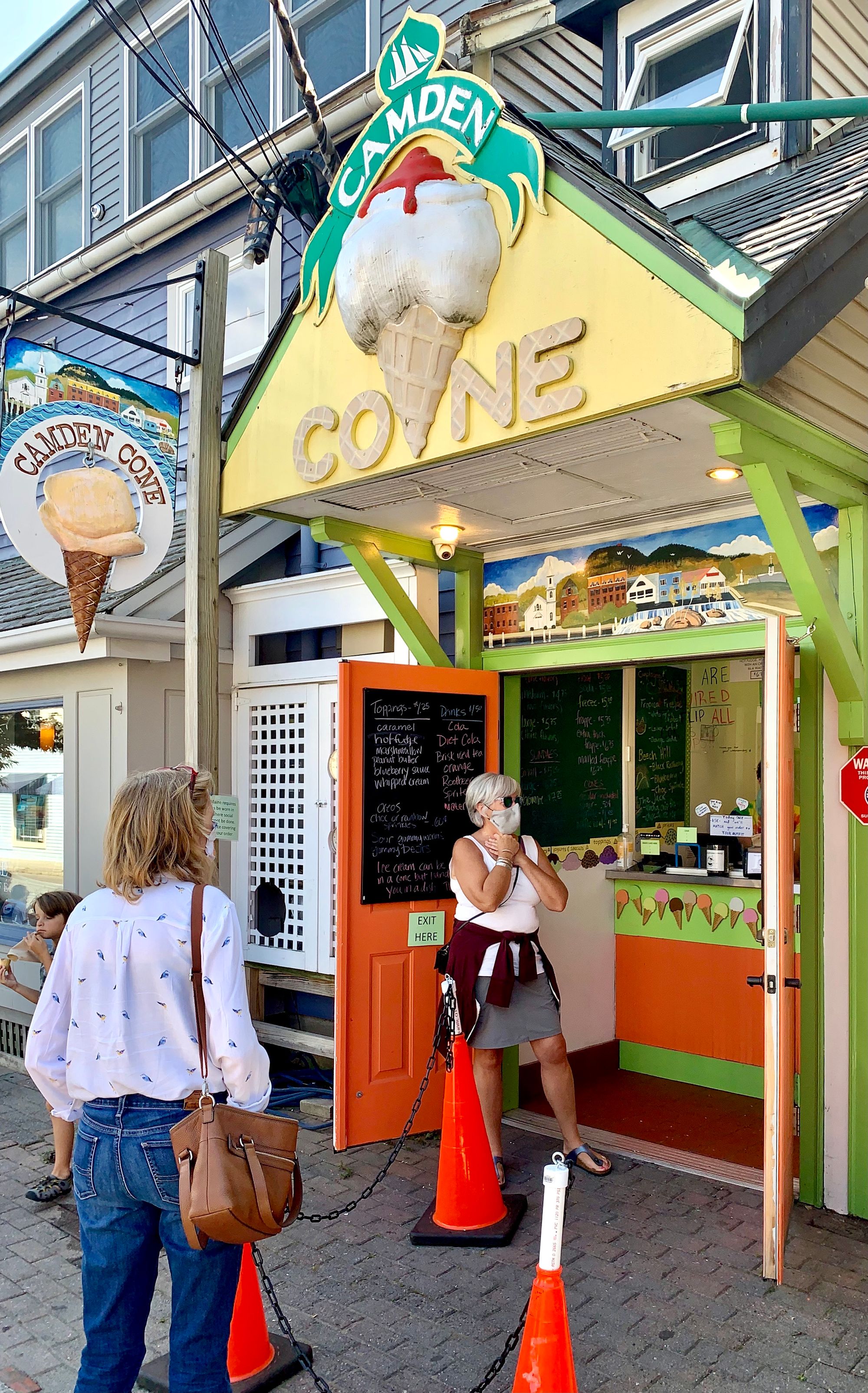

Multi-use Green and Library
Meanwhile, Camden Park and Library are lively spots where are a mix of things to do draws a mix of people.



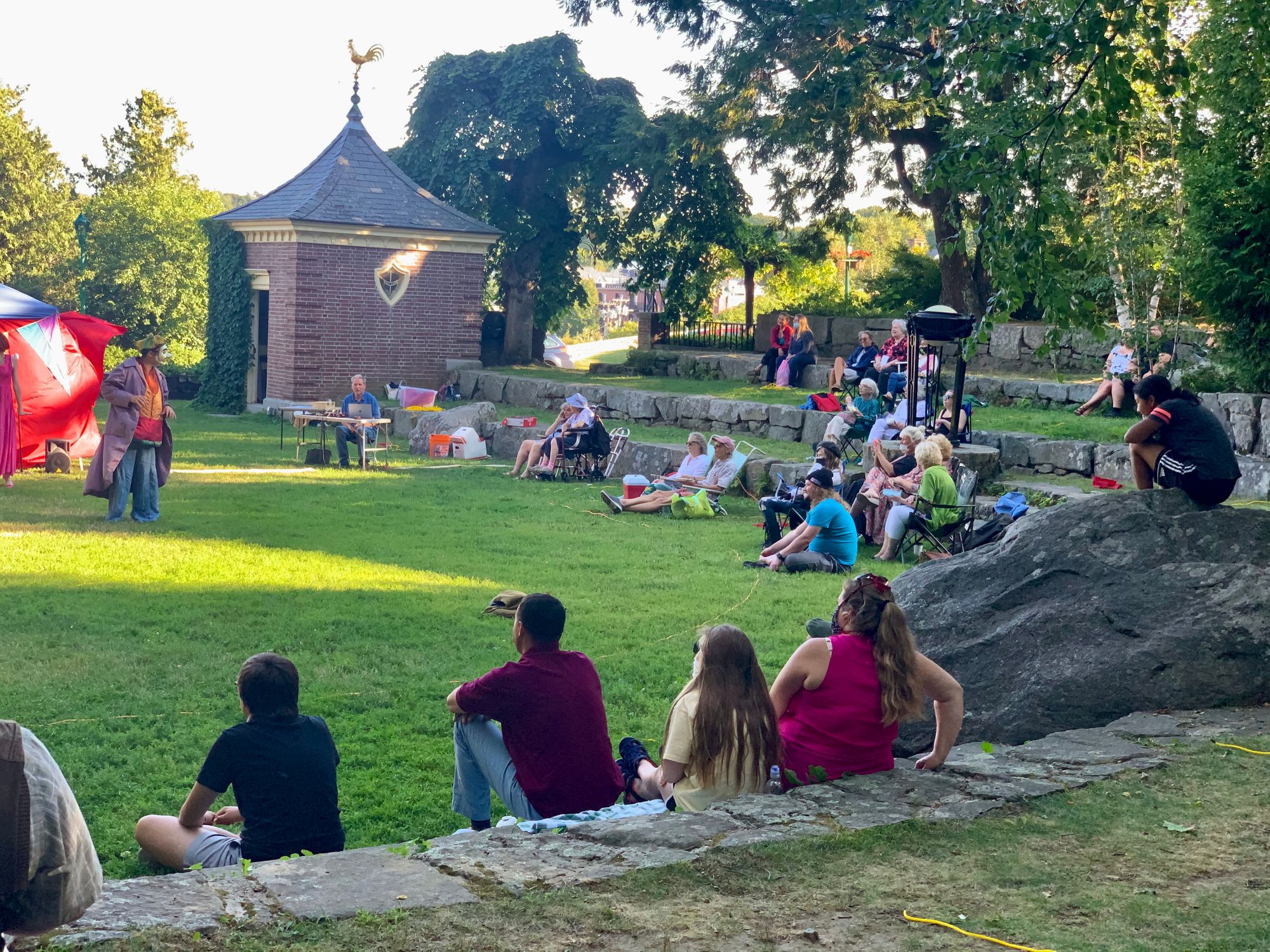


Porch Life
Porches are common in most of Camden's neighborhoods, including along the Main Street, and provide critical infrastructure for social life.
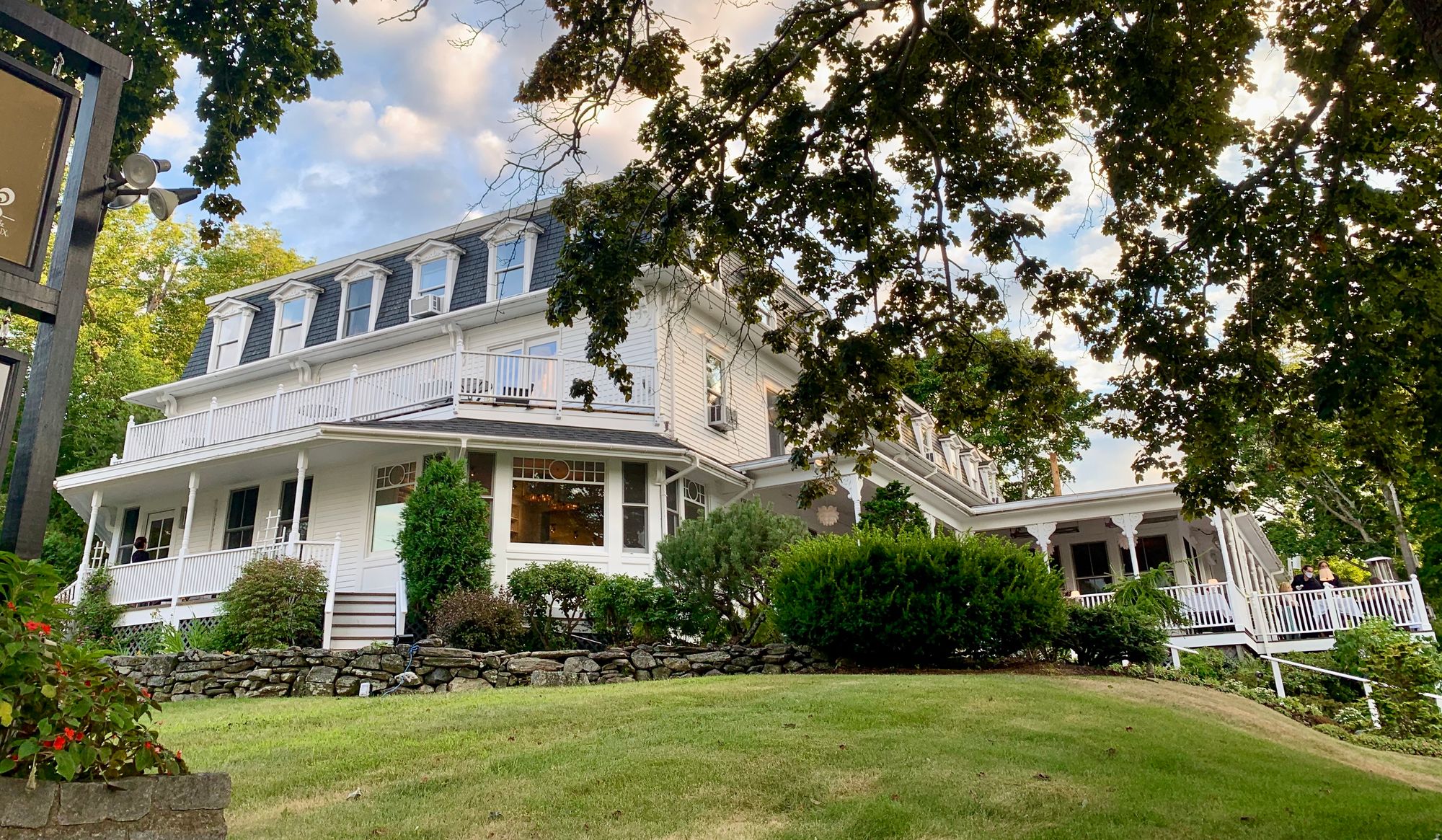


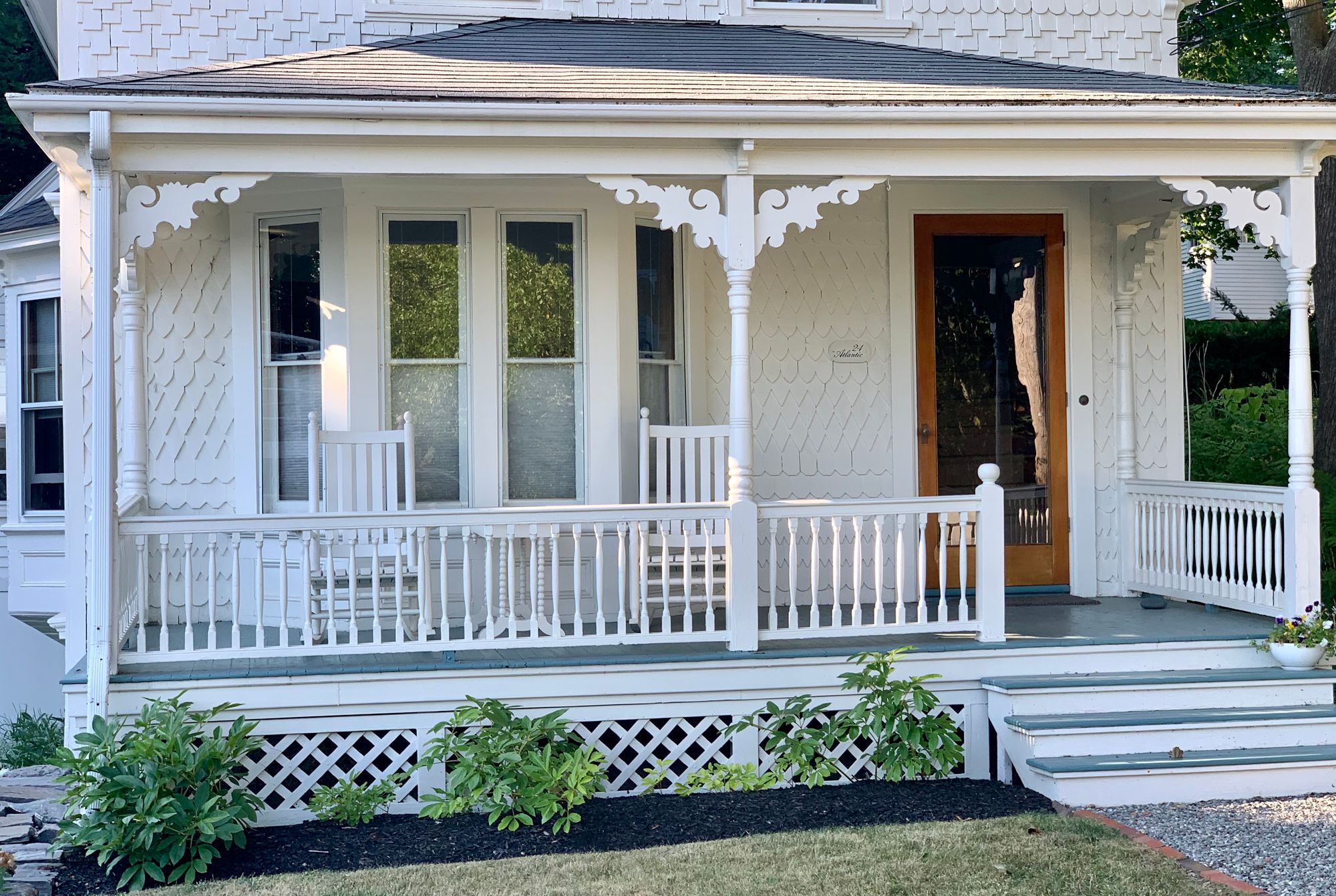
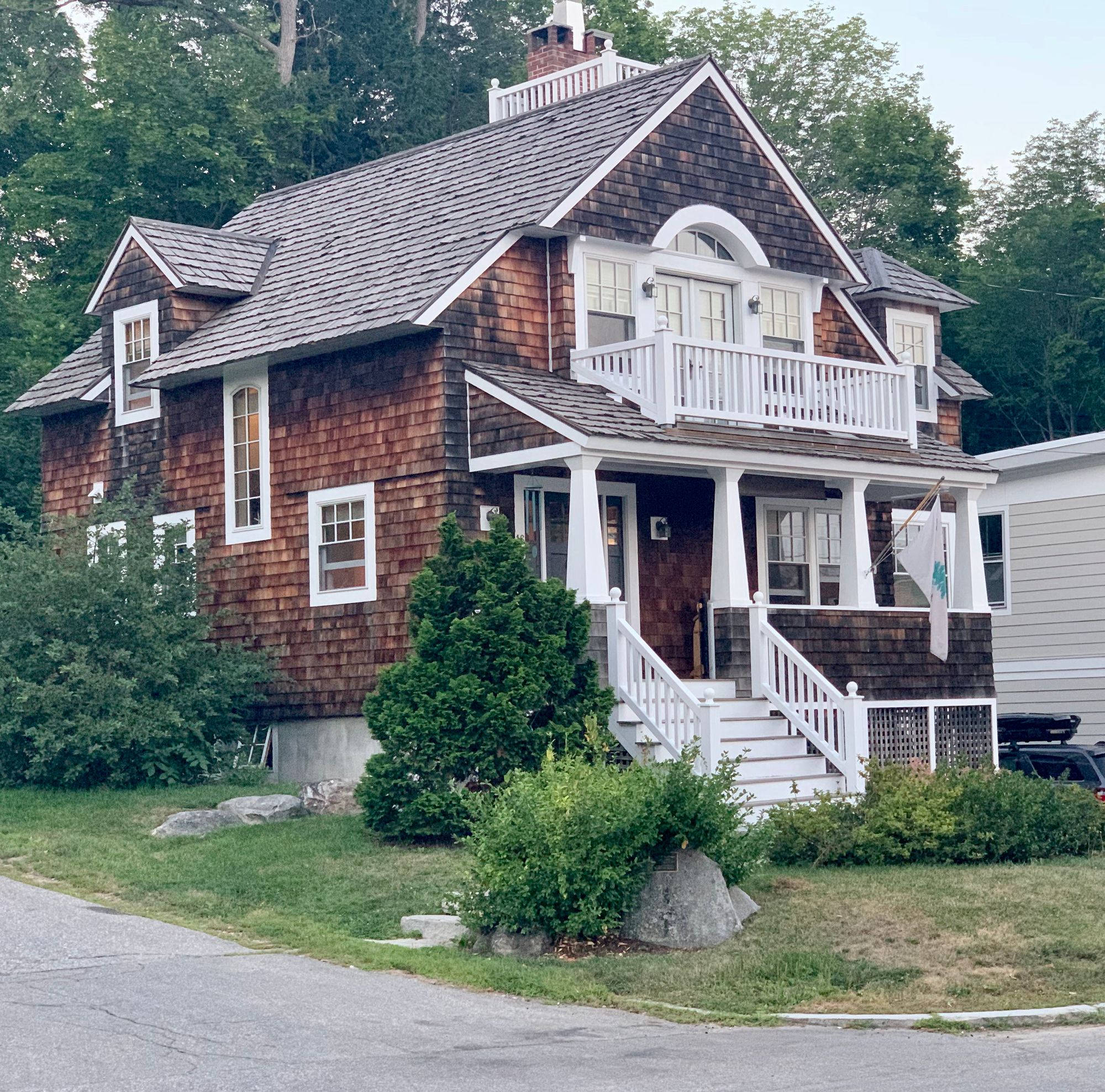
Many Camden residences are within an easy walk into the downtown and to the thriving waterfront
Wolfeboro, New Hampshire
Wolfeboro has one of the best waterfronts on any of the many lakes in New England. It is a natural harbor with a small connection to another lake where I (Fred) spent summers. It retains much of the same qualities it had when I was growing up. But, to put it simply, one is left with one question: "Where are the sidewalks? Where is the 'Town Center?'"
Opportunities: With so much asphalt and space for vehicles in the center of the town, widening the sidewalks and extending the curbs on the side streets (especially where Bailey's Ice Cream stand is) would fundamentally shift the balance from a town defined by vehicles in its heart to one favoring social life and shopping in the center. Also, extending a widened sidewalk up both ends of Main Street could expand the perception of the downtown considerably. I used to go to the movies in the city hall growing up, when it was part of the downtown area.

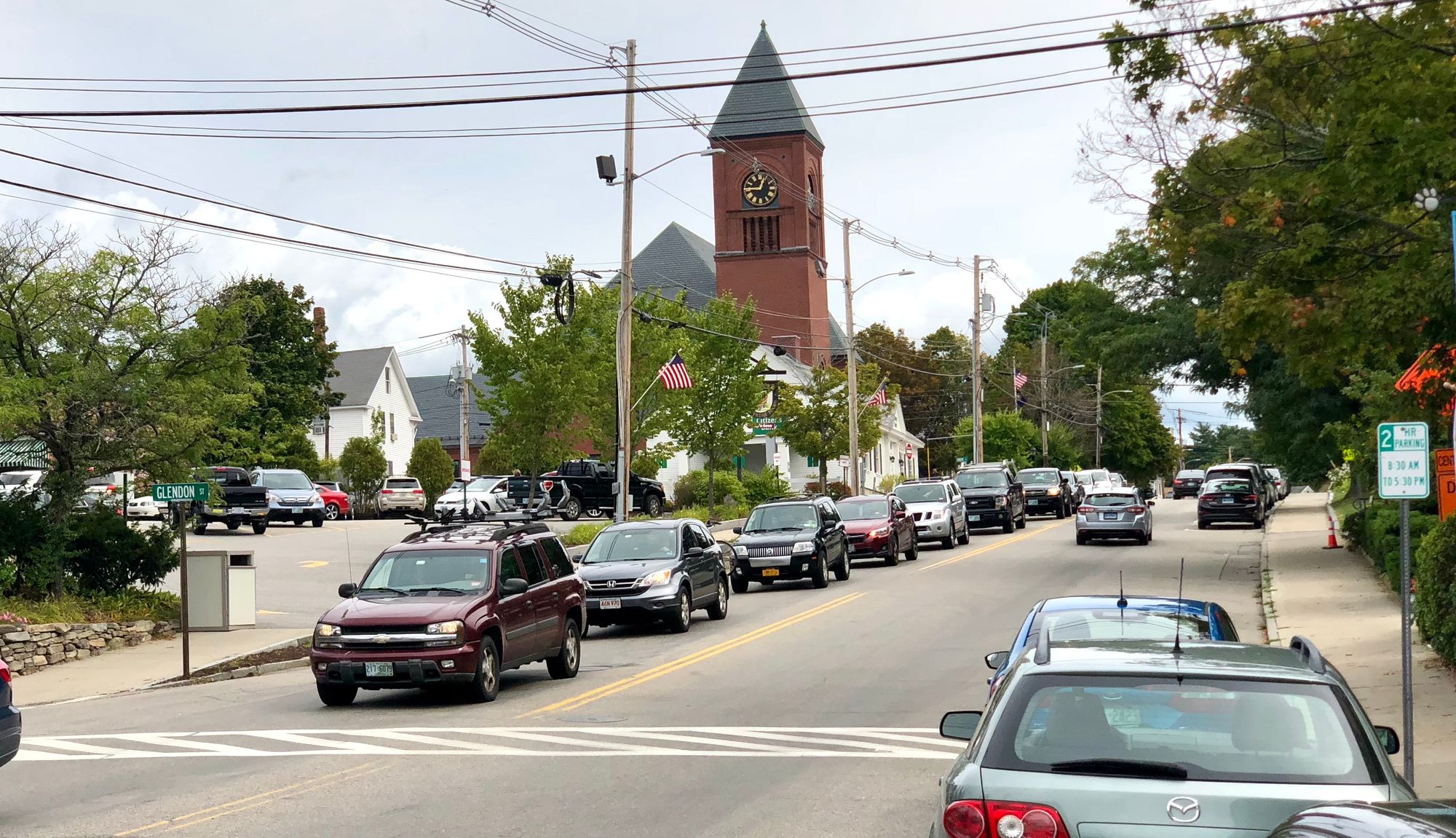



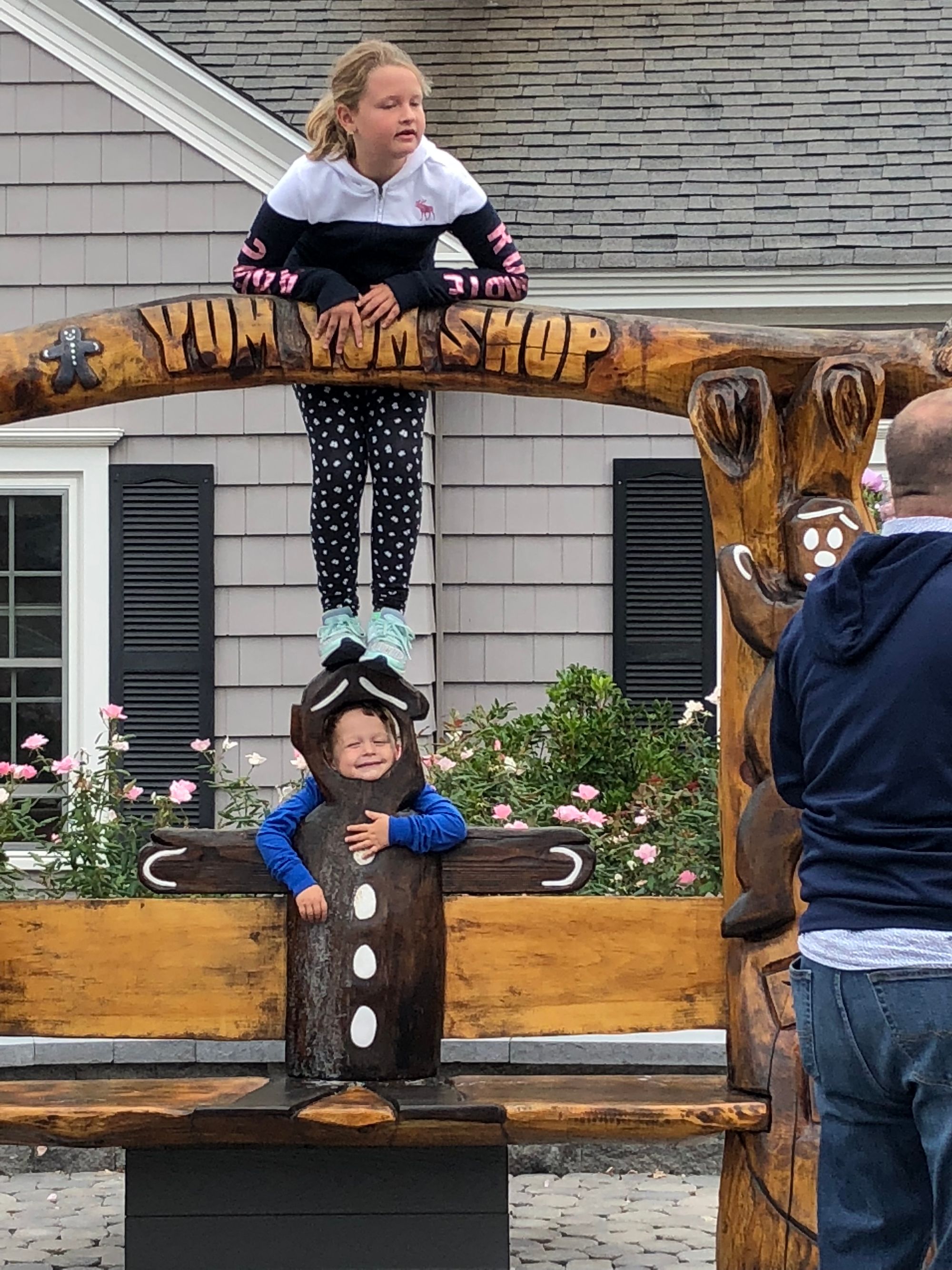



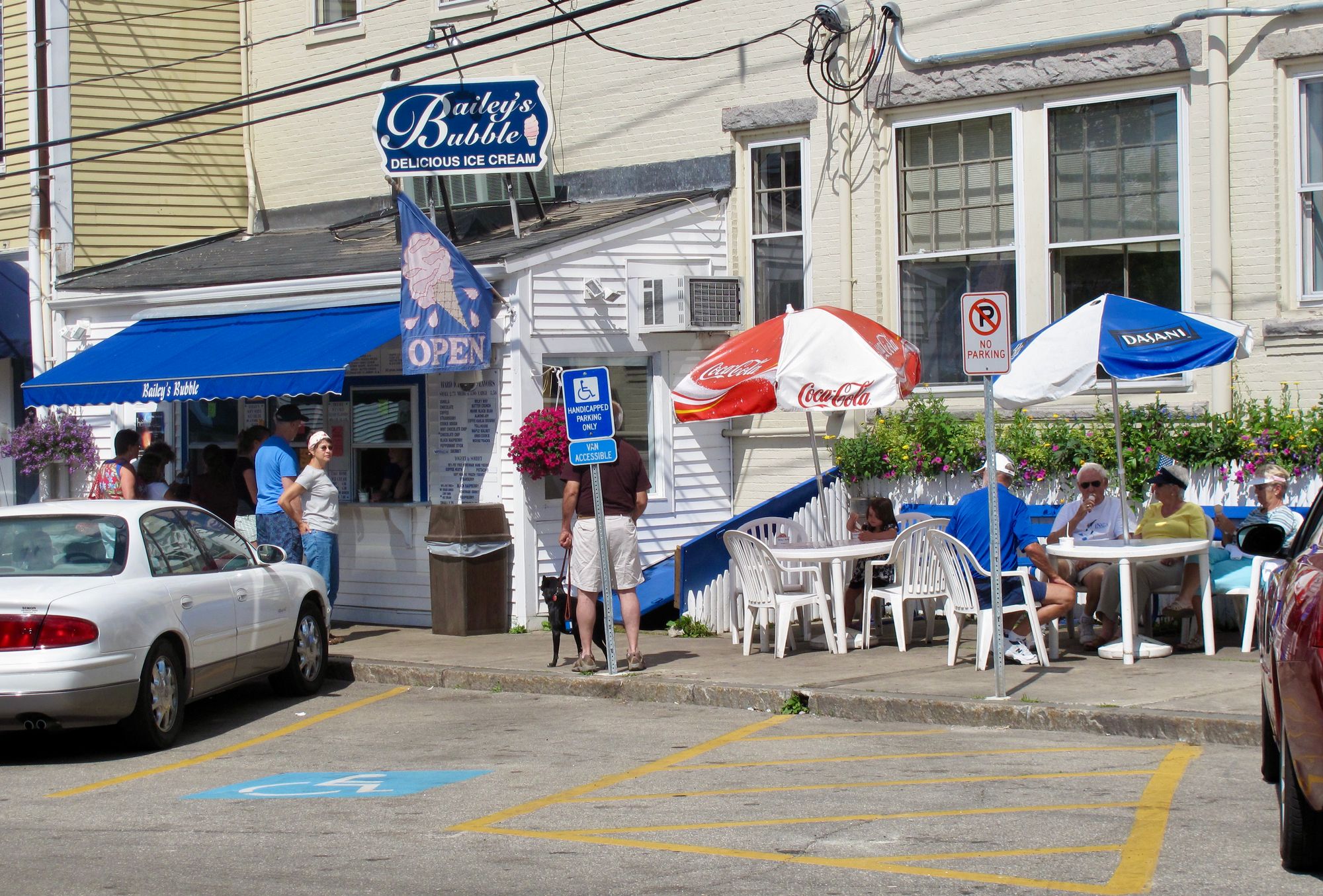
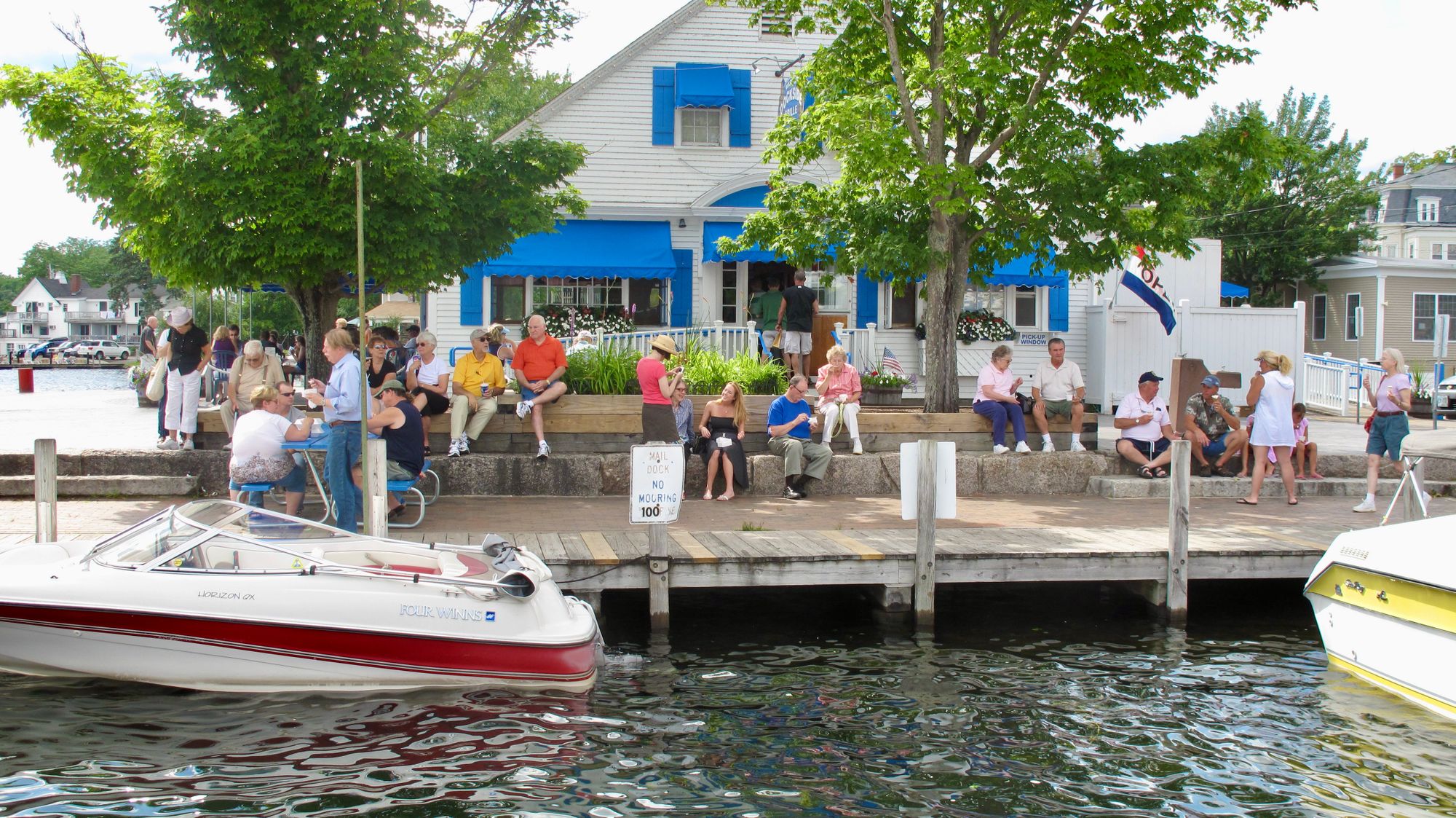

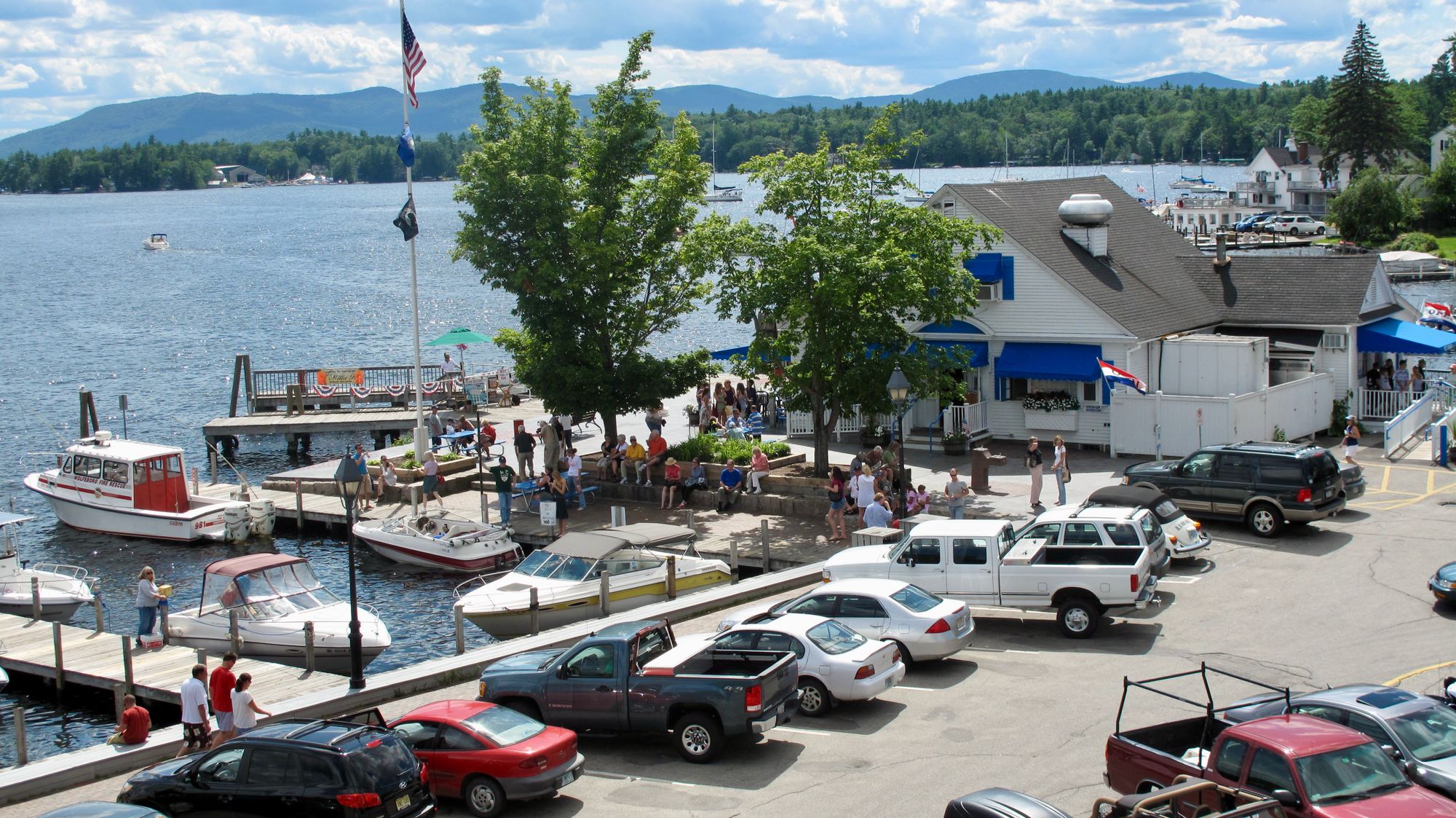
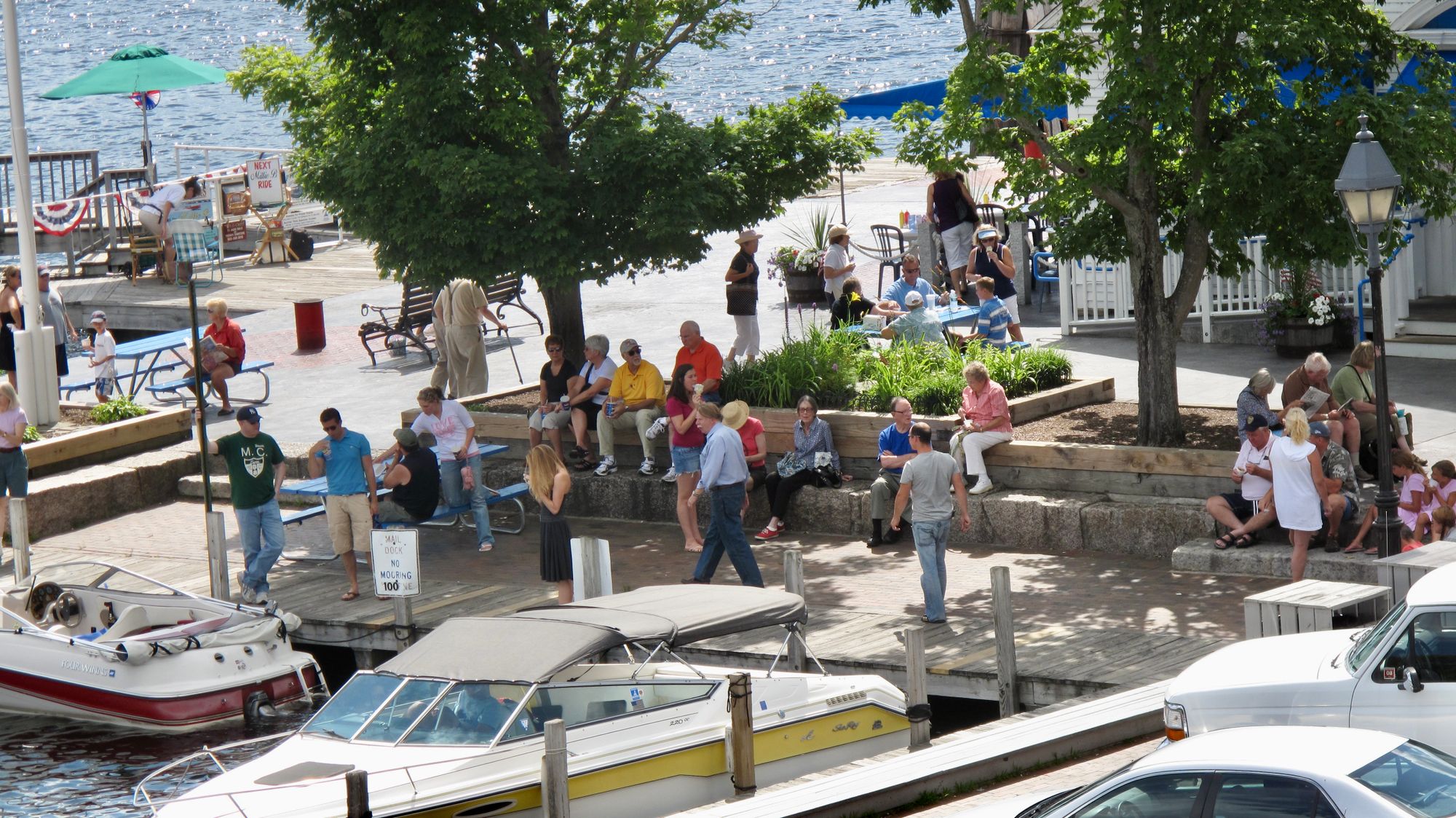
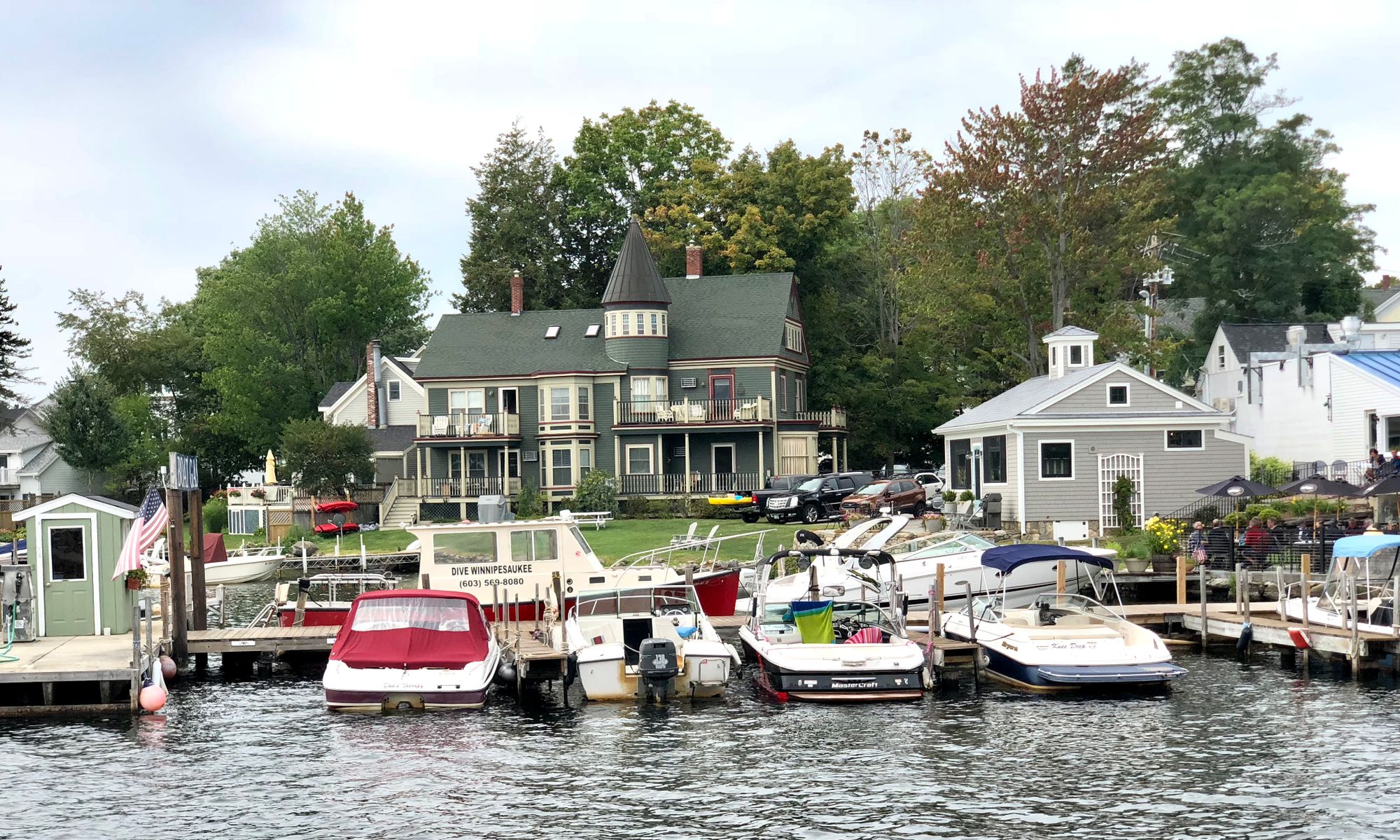
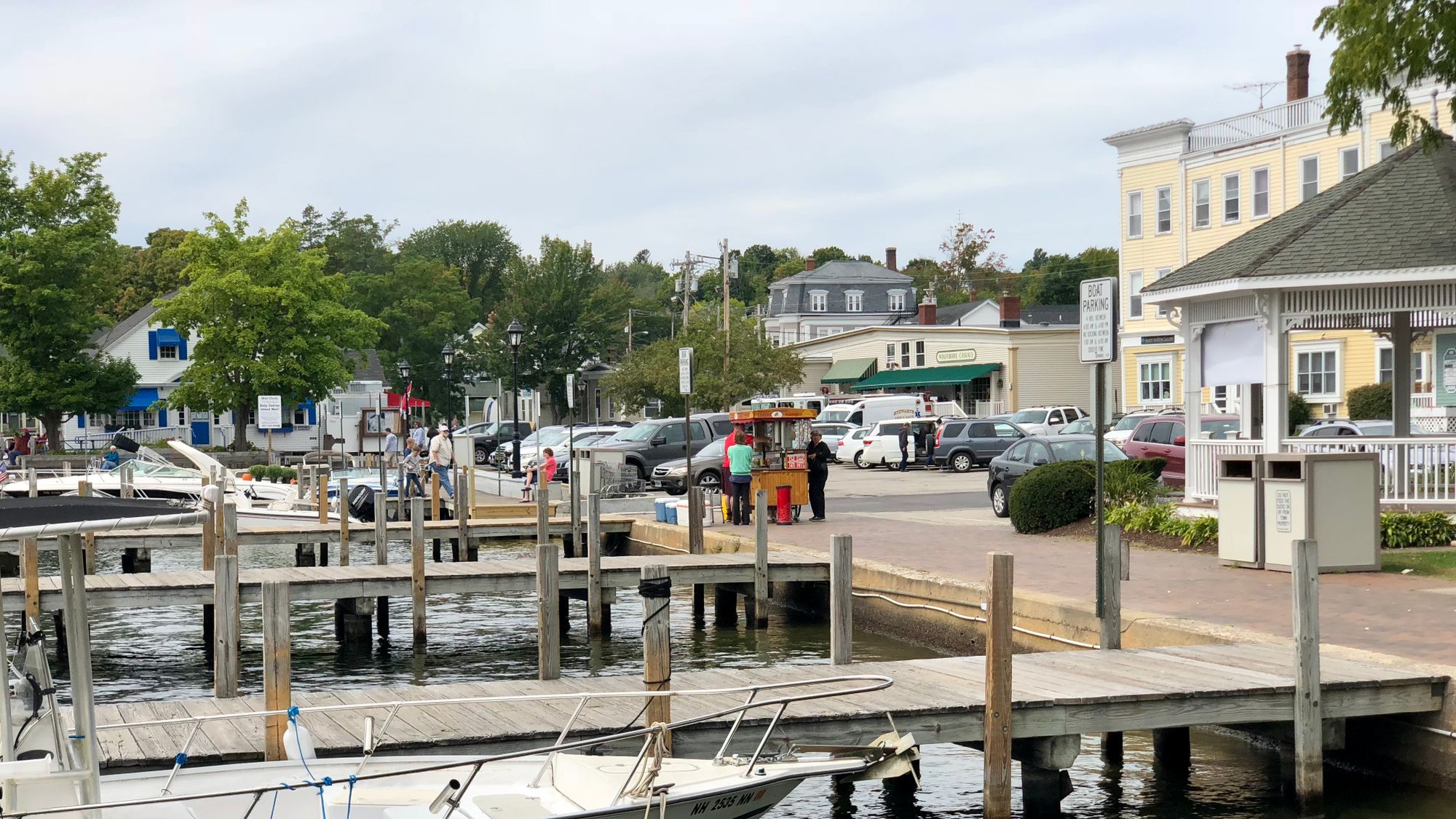
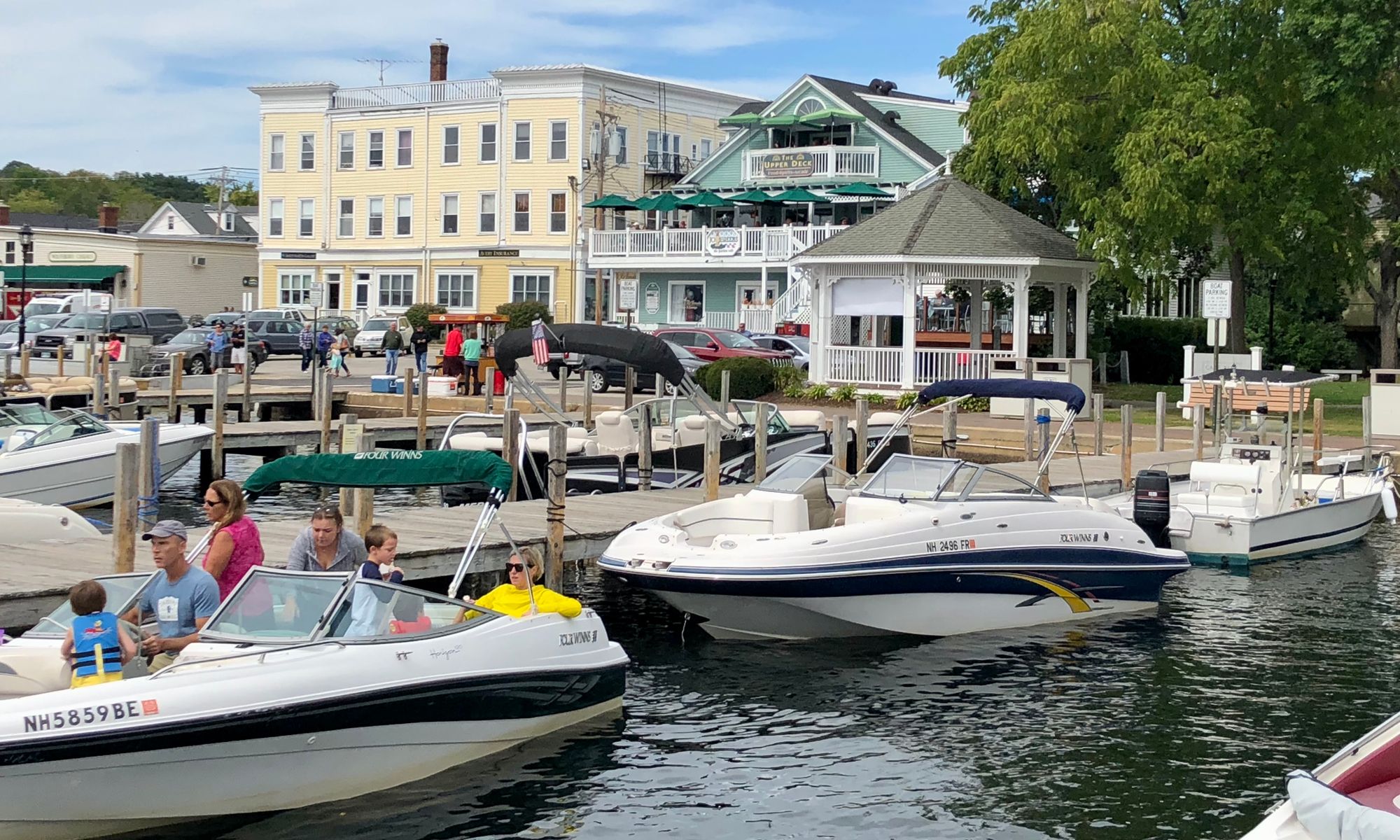
Stowe, Vermont where the downtown and nearby neighborhood is defined by porches
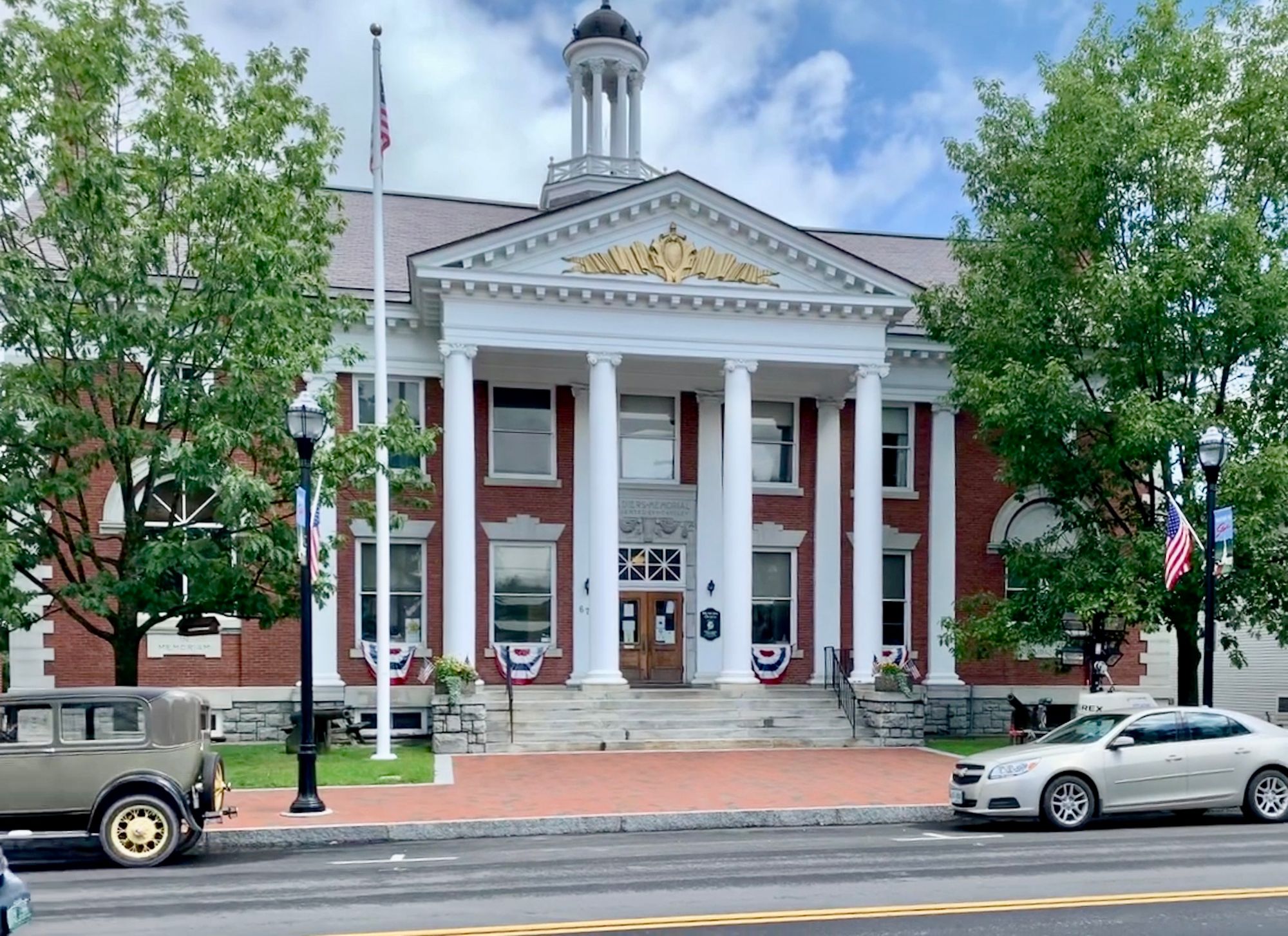

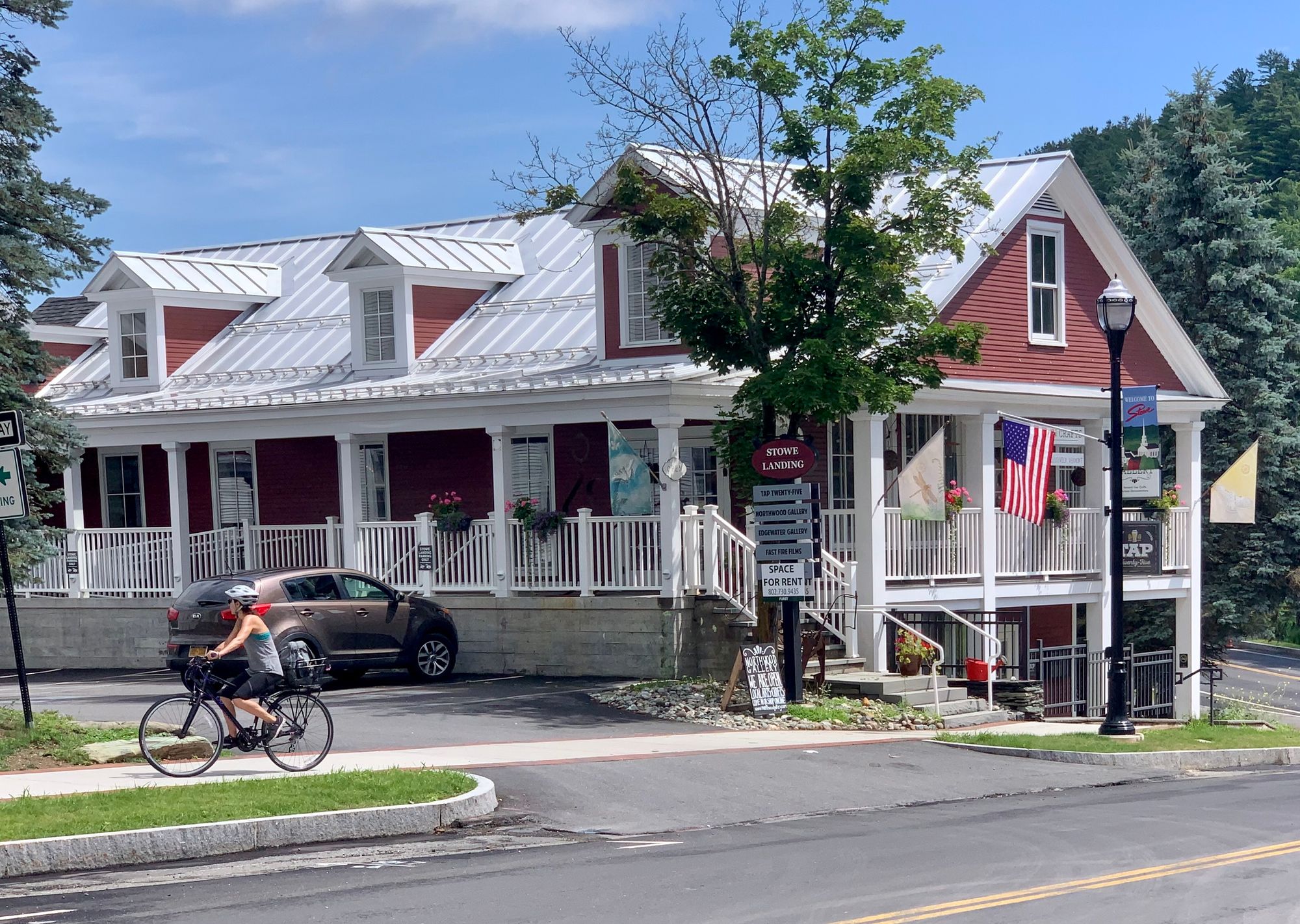



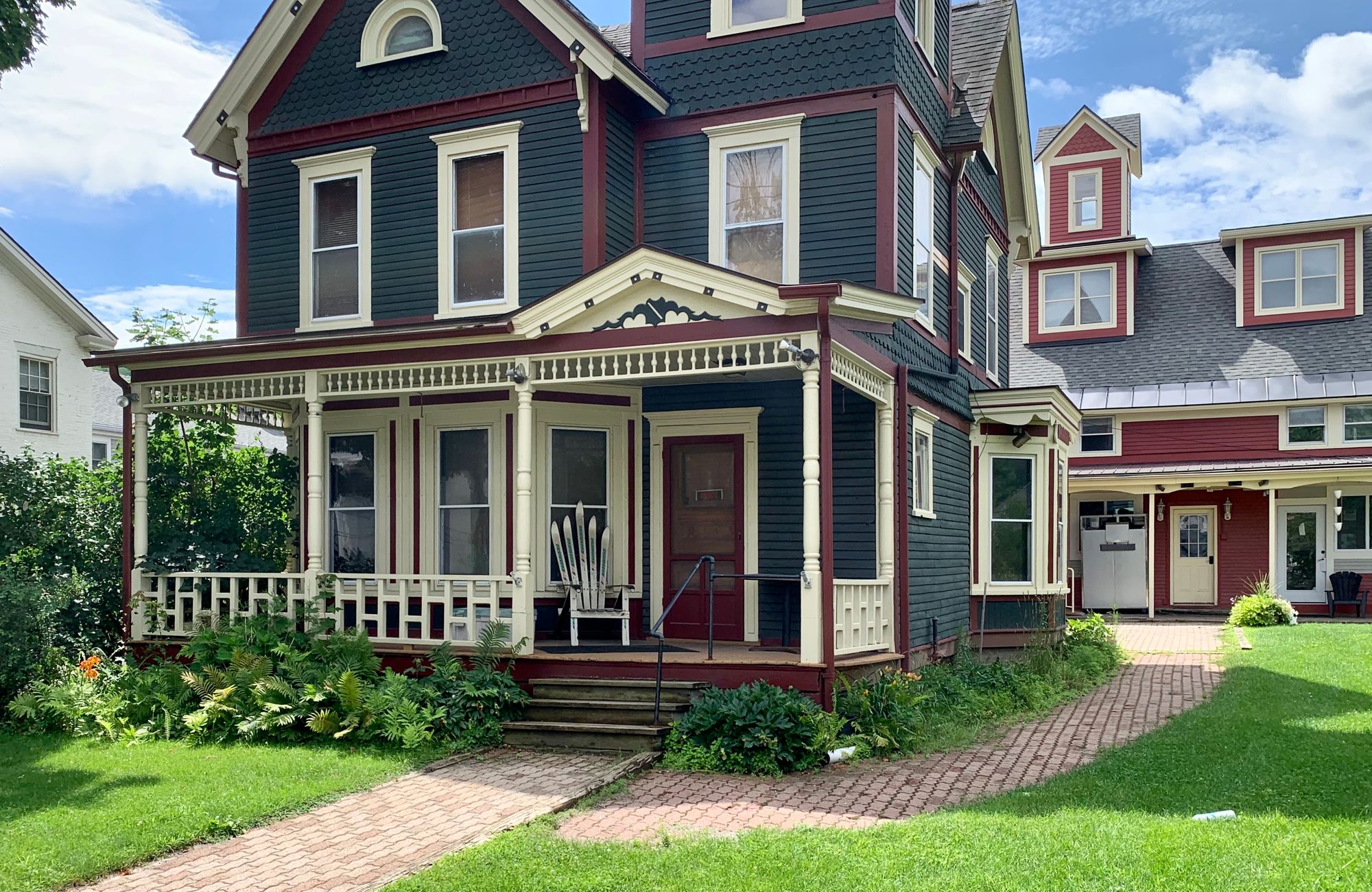

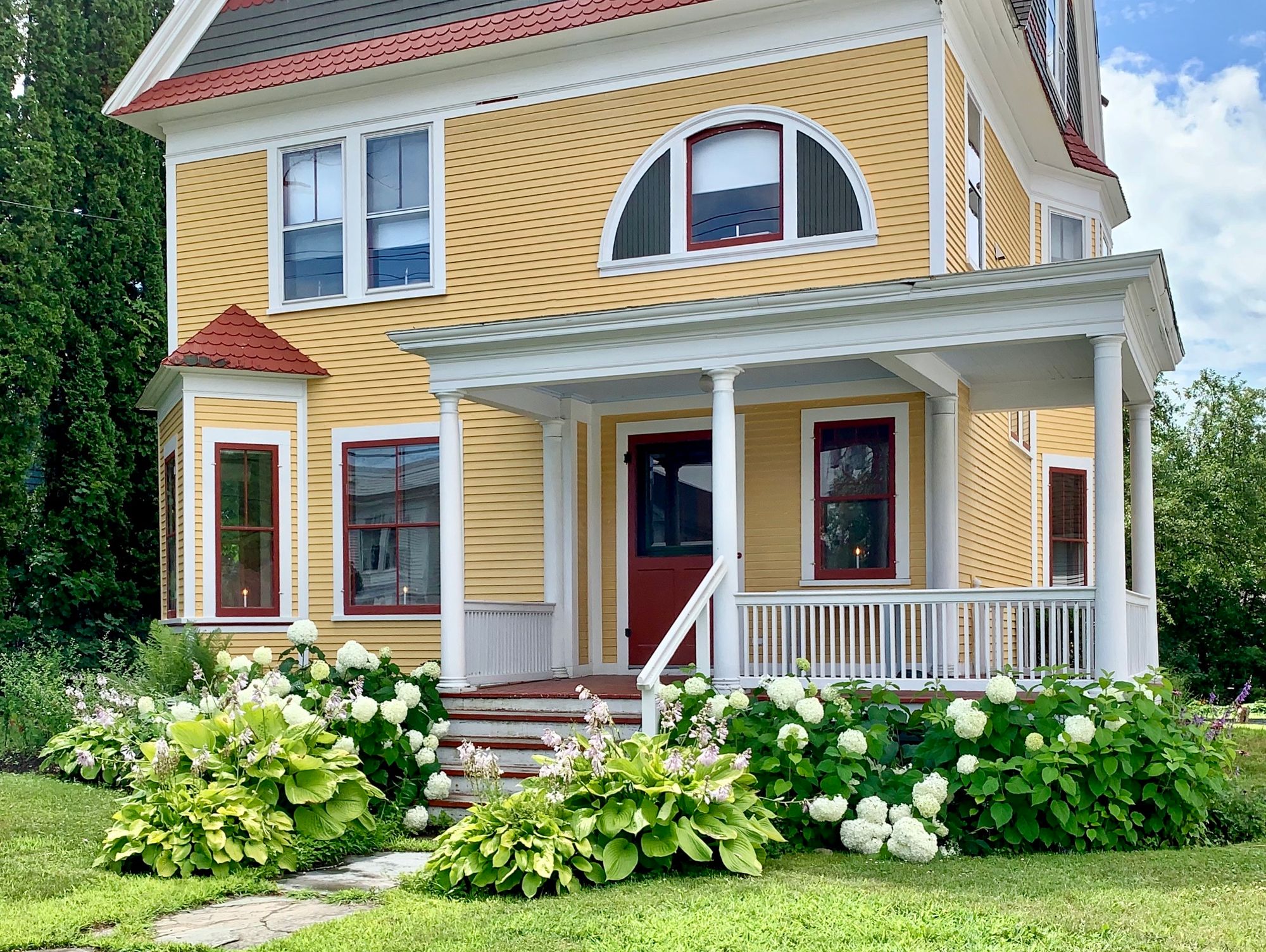
Stow, Vermont
Woodstock, Vermont
Woodstock is a thriving small town in a very desirable part of Vermont. It has rolling hills and enticing terrain that attracts many owners of second homes and many retired families. The Rockefeller/Billings family was a major factor in preserving the character along with protecting large areas of farm land and open space, with an associated working farm and museum that serve as local attractions. Most of the buildings have been restored and are lived in or have stores catering to both tourists and locals.
Opportunities: Woodstock's main intersection could become the main square, connecting to a more active Green, could create a dynamic center of the community. This could be accomplished by narrowing the pavement and extending the curbs at both intersections, thus creating a center for the town. By activating the Green and connecting to the Woodstock Inn and adding other attractions along the Green, it would give an opportunity for extending the perception of the town and provide a greater opportunity for extending the area where people stroll.



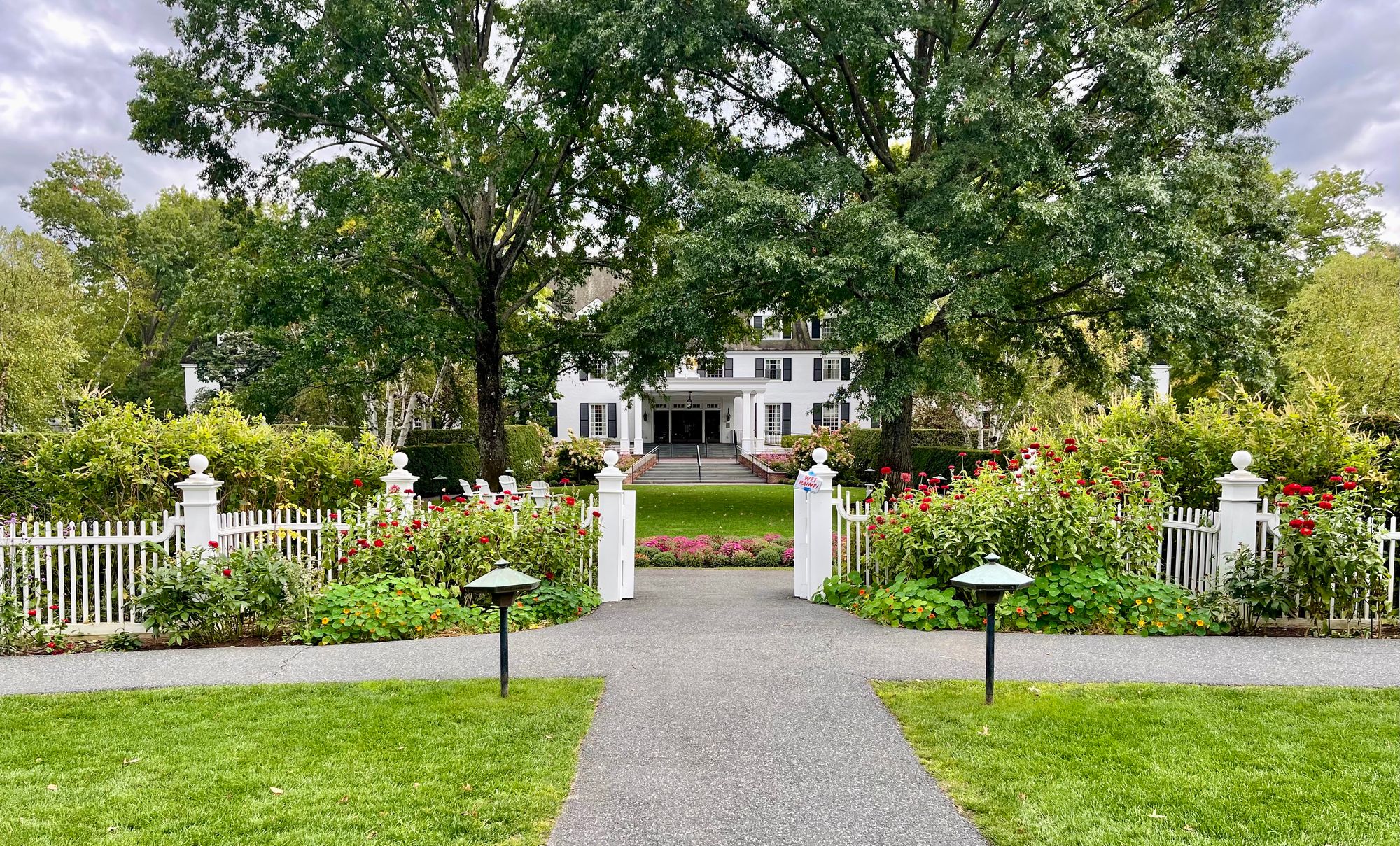
Wednesday Market, Library and Woodstock Inn
Woodstock Green and Main intersection




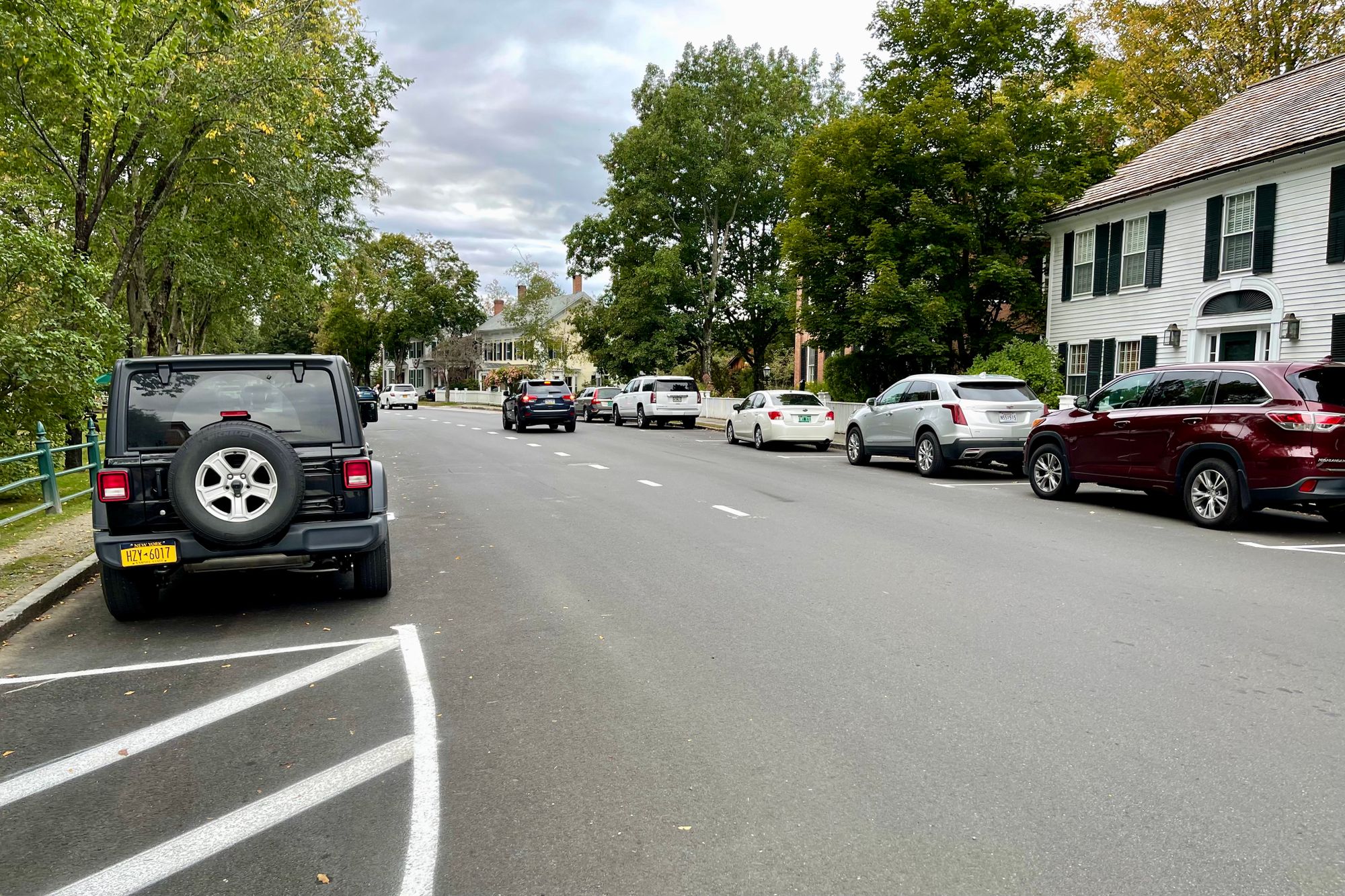

Woodstock Inn, Downtown including the Green, and the Downtown core...wide roads and narrow sidewalks
Main Intersection as a Square


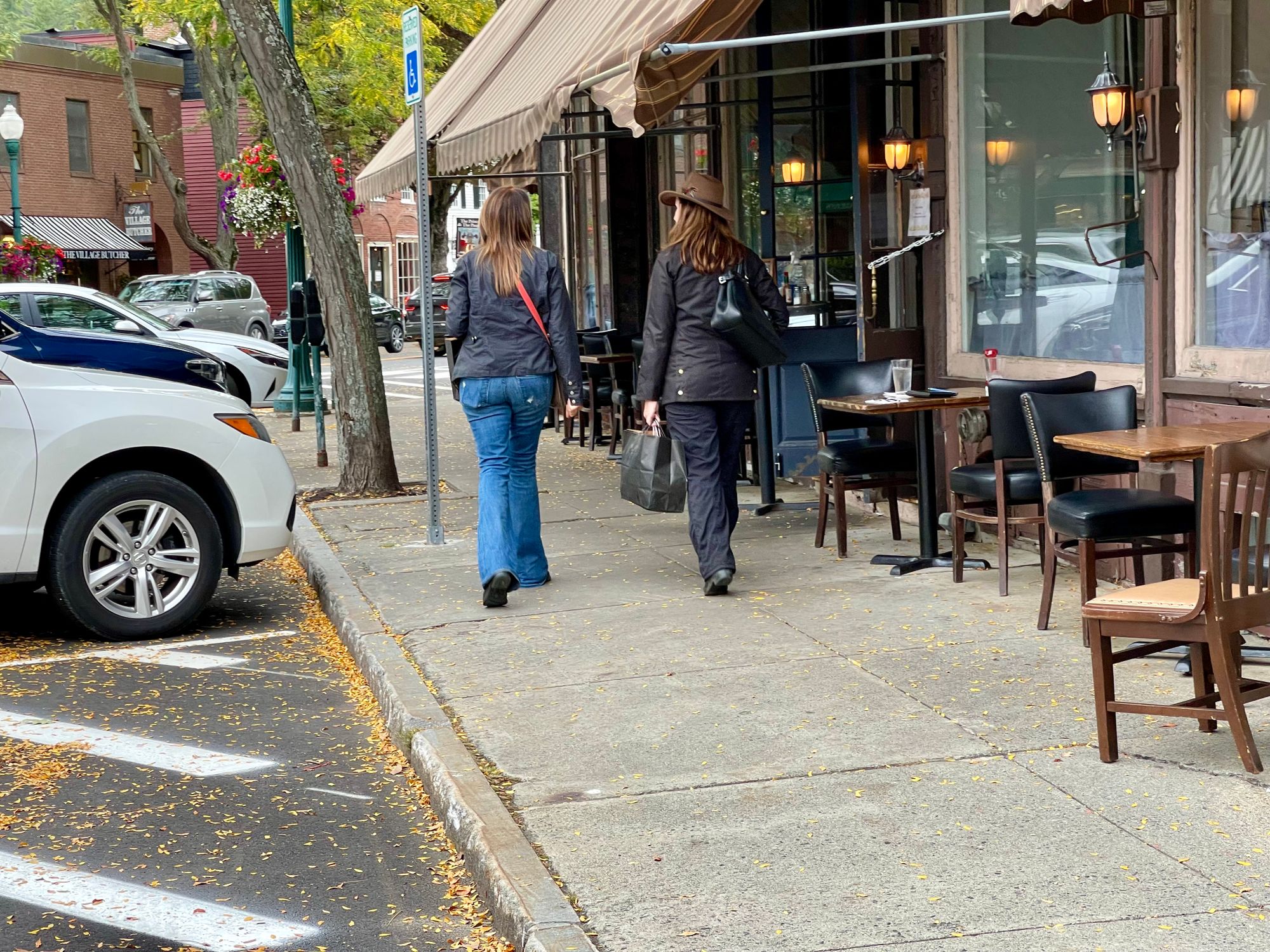
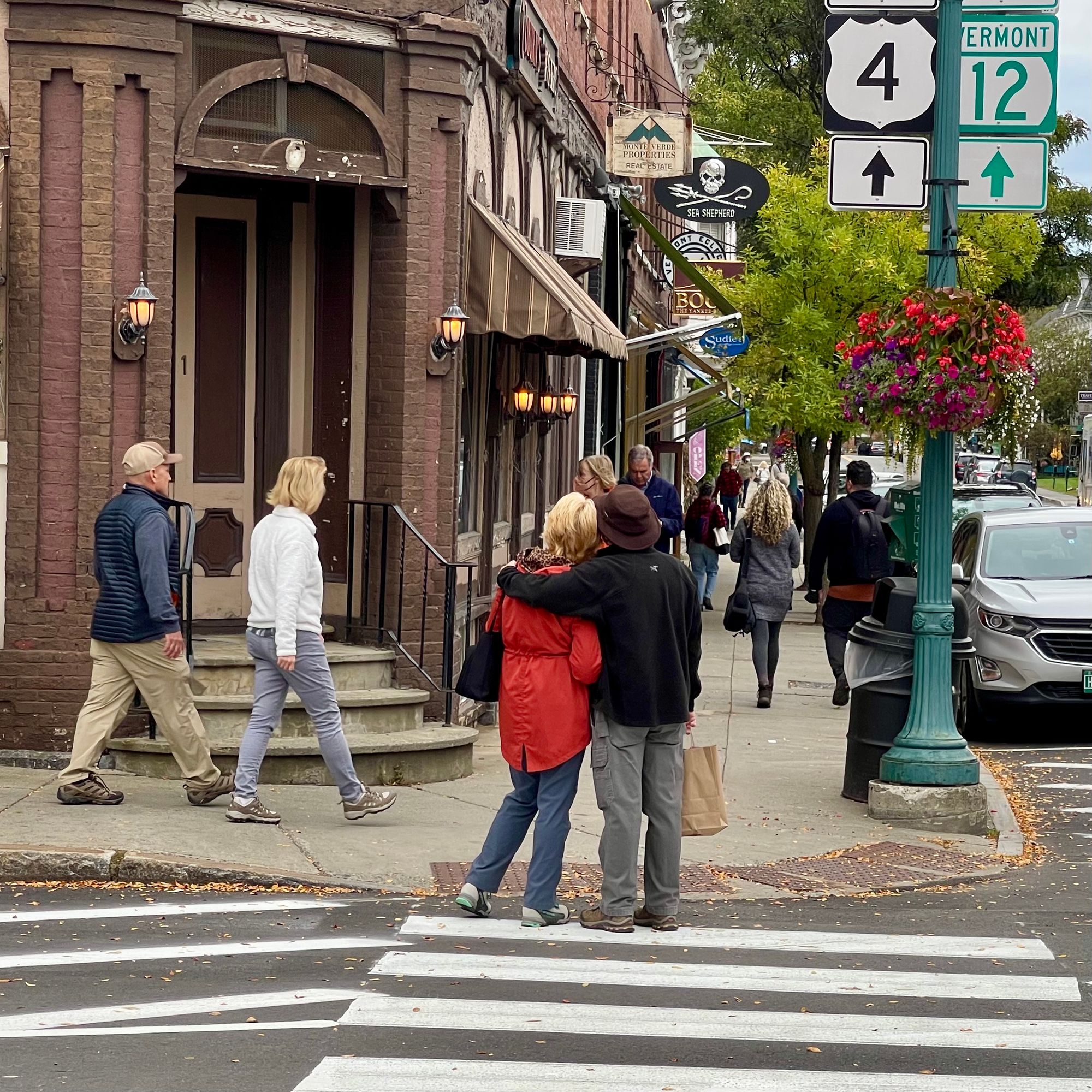
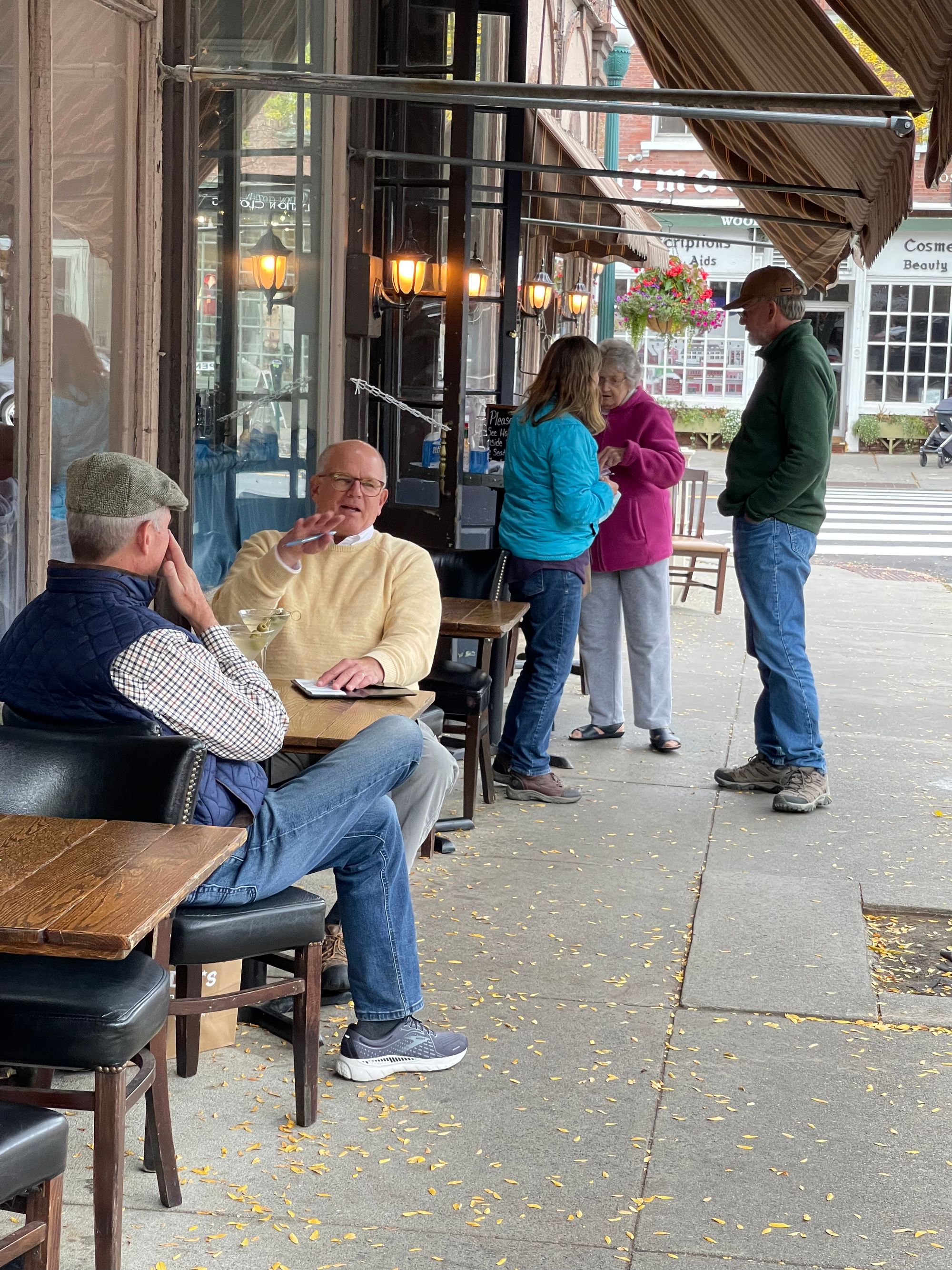




Eastern side of intersection has the most potential to become a major anchor. It has the afternoon sun and a key site looking westward towar the Green
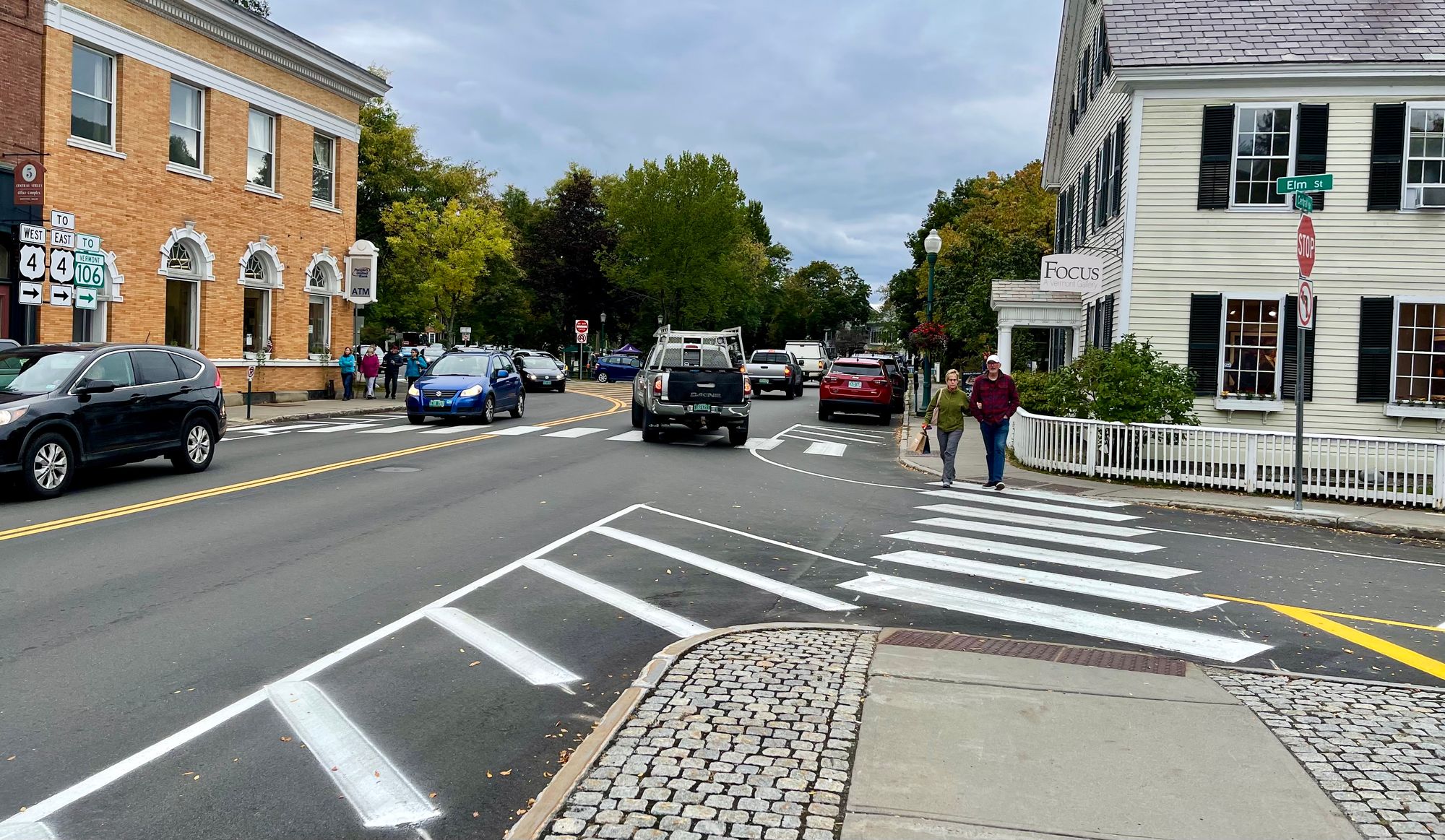
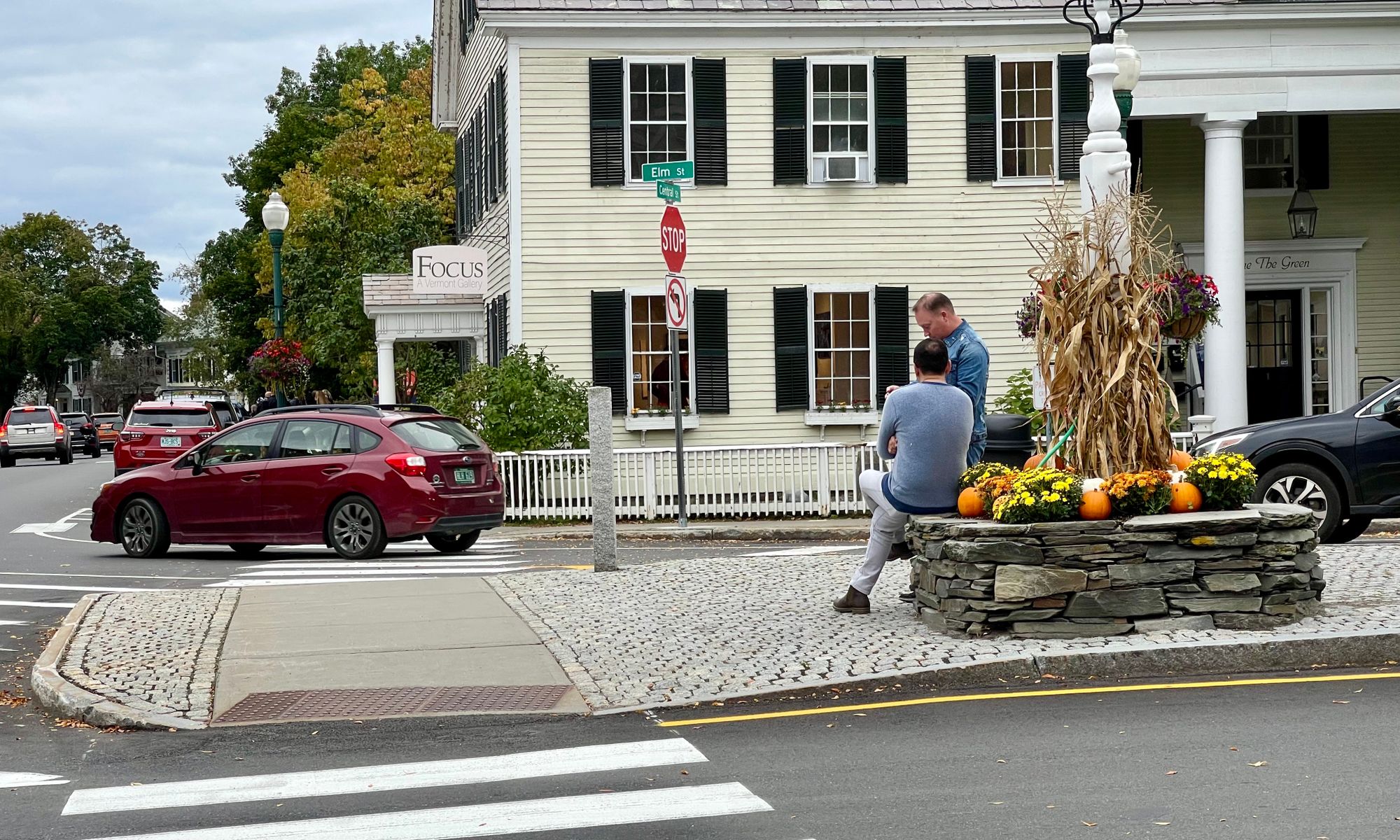



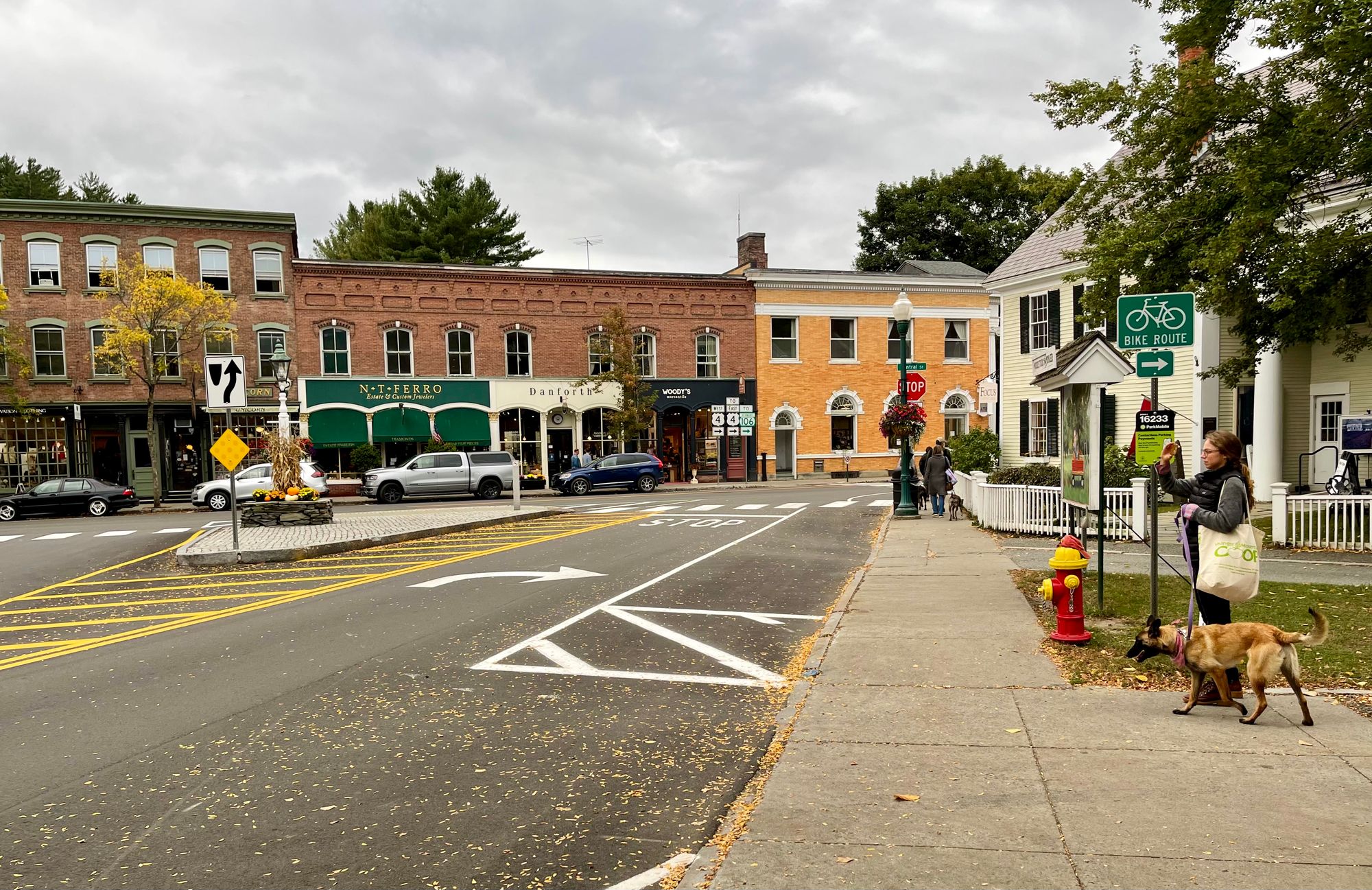

Woodstock Main Street
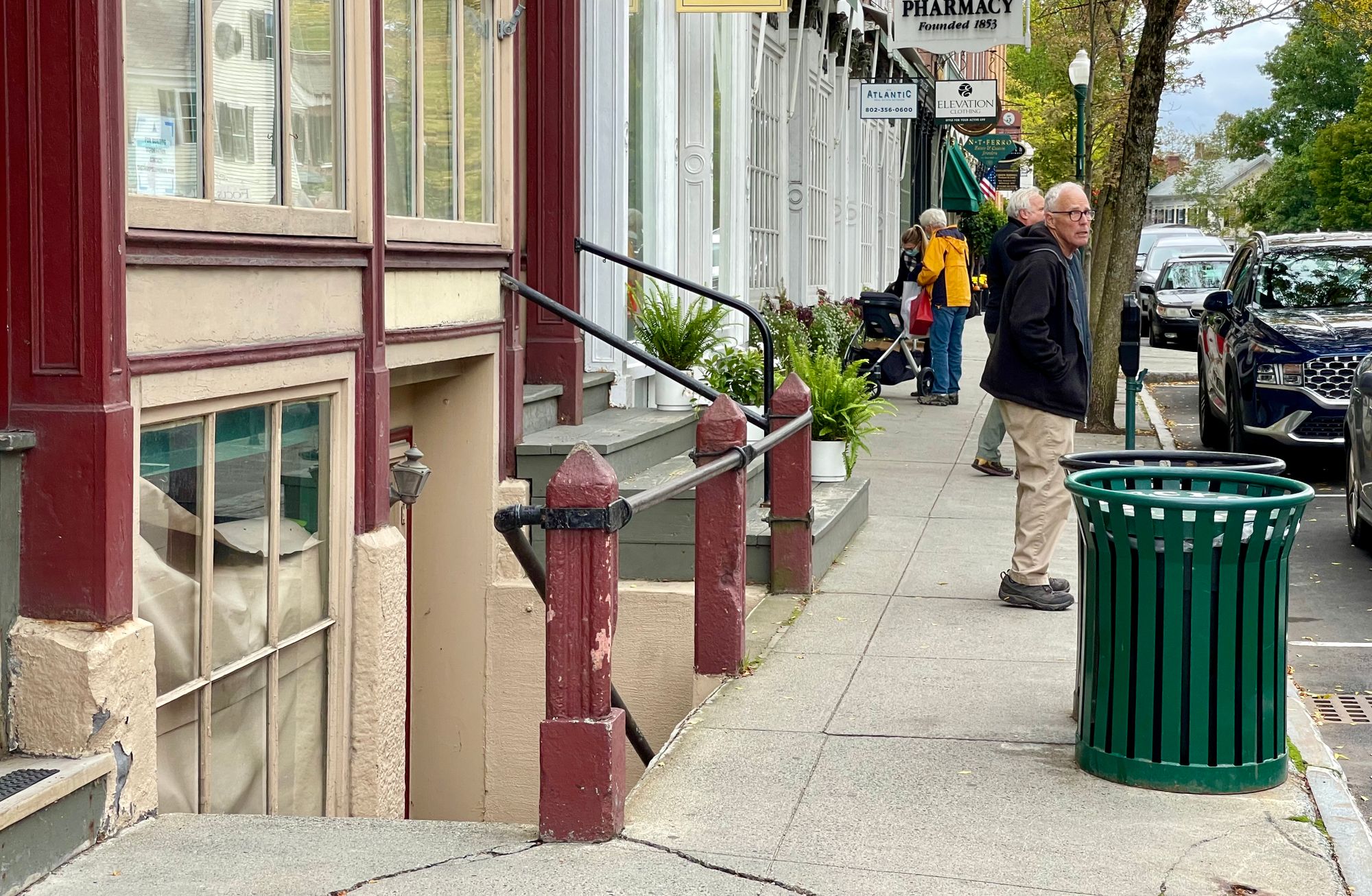
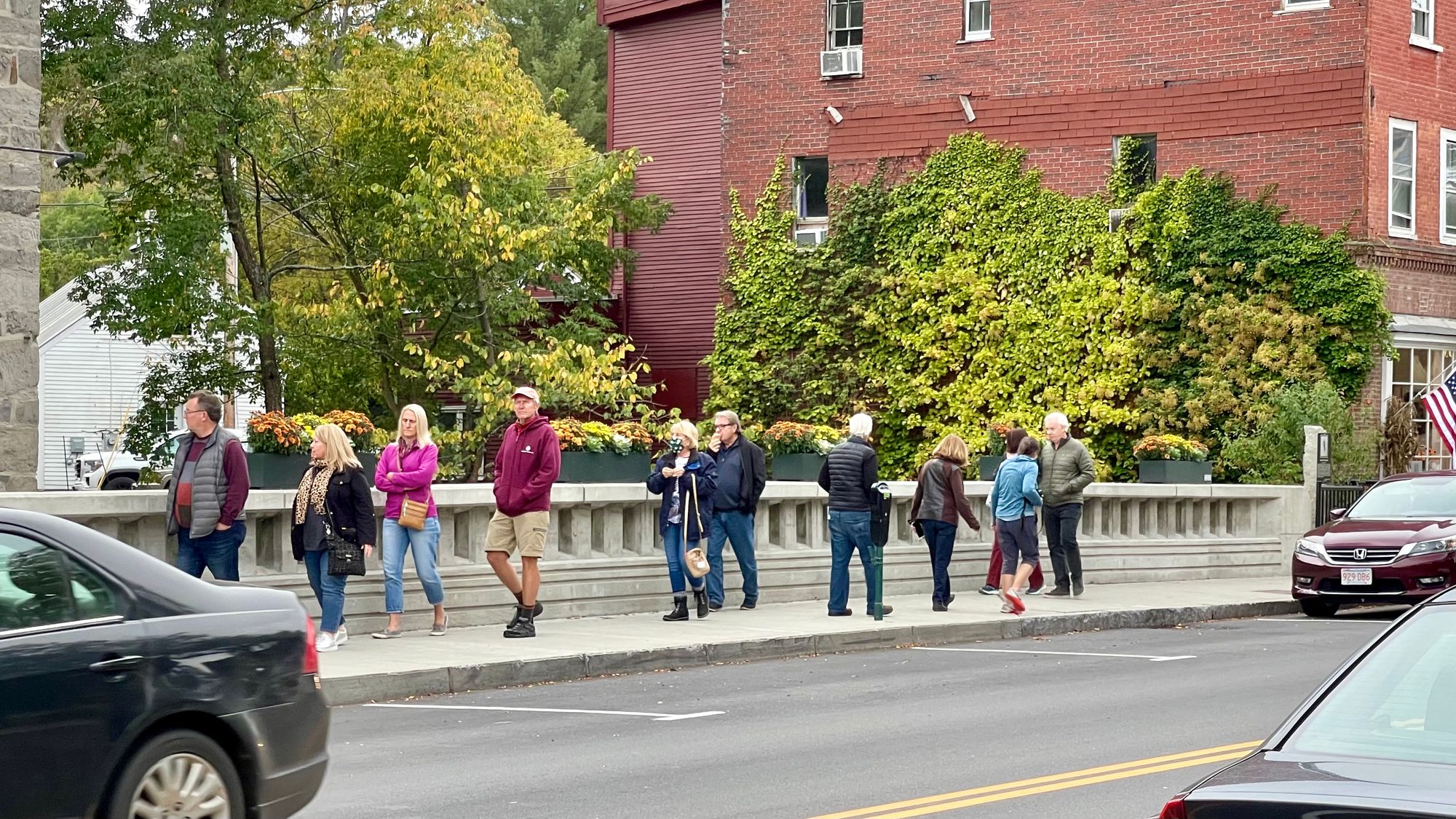

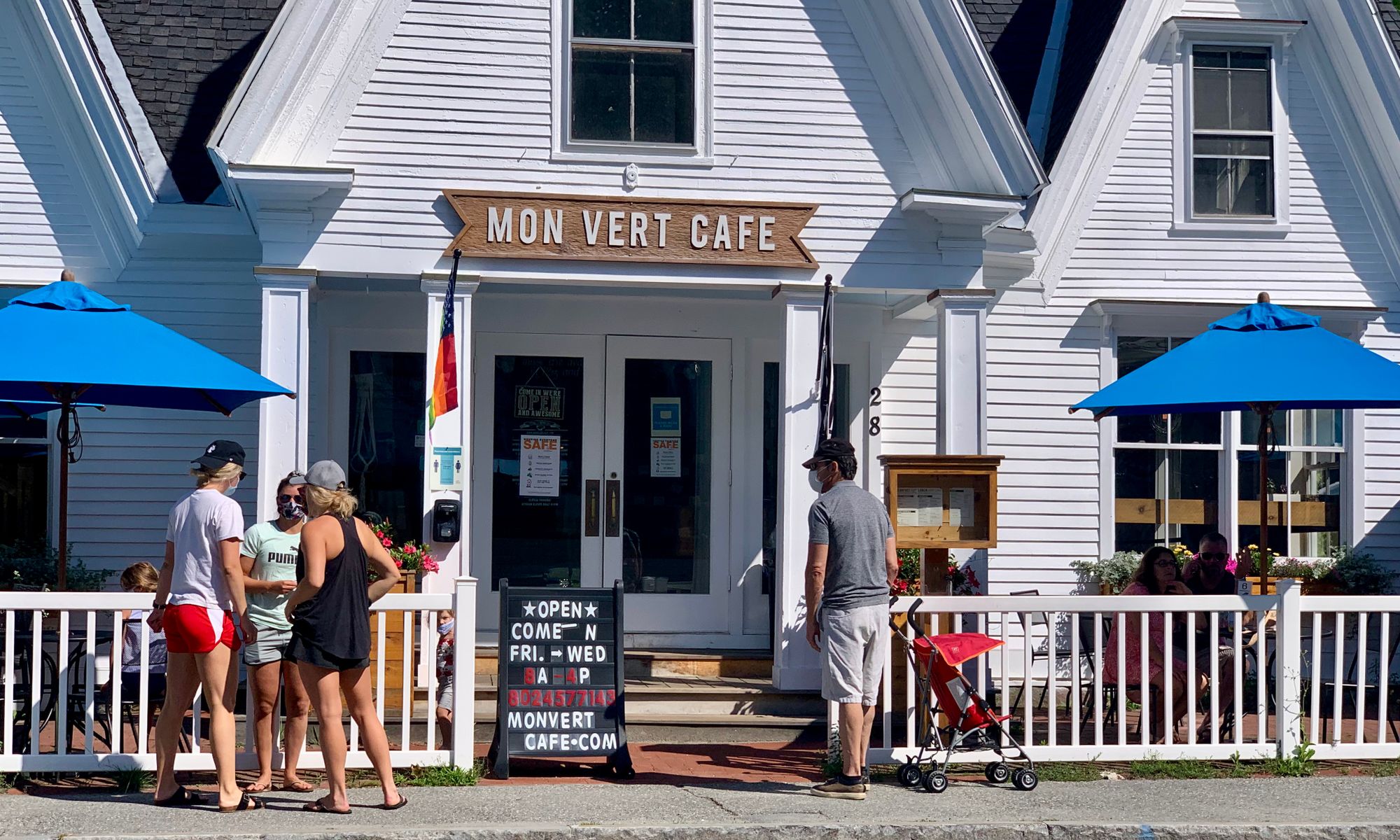
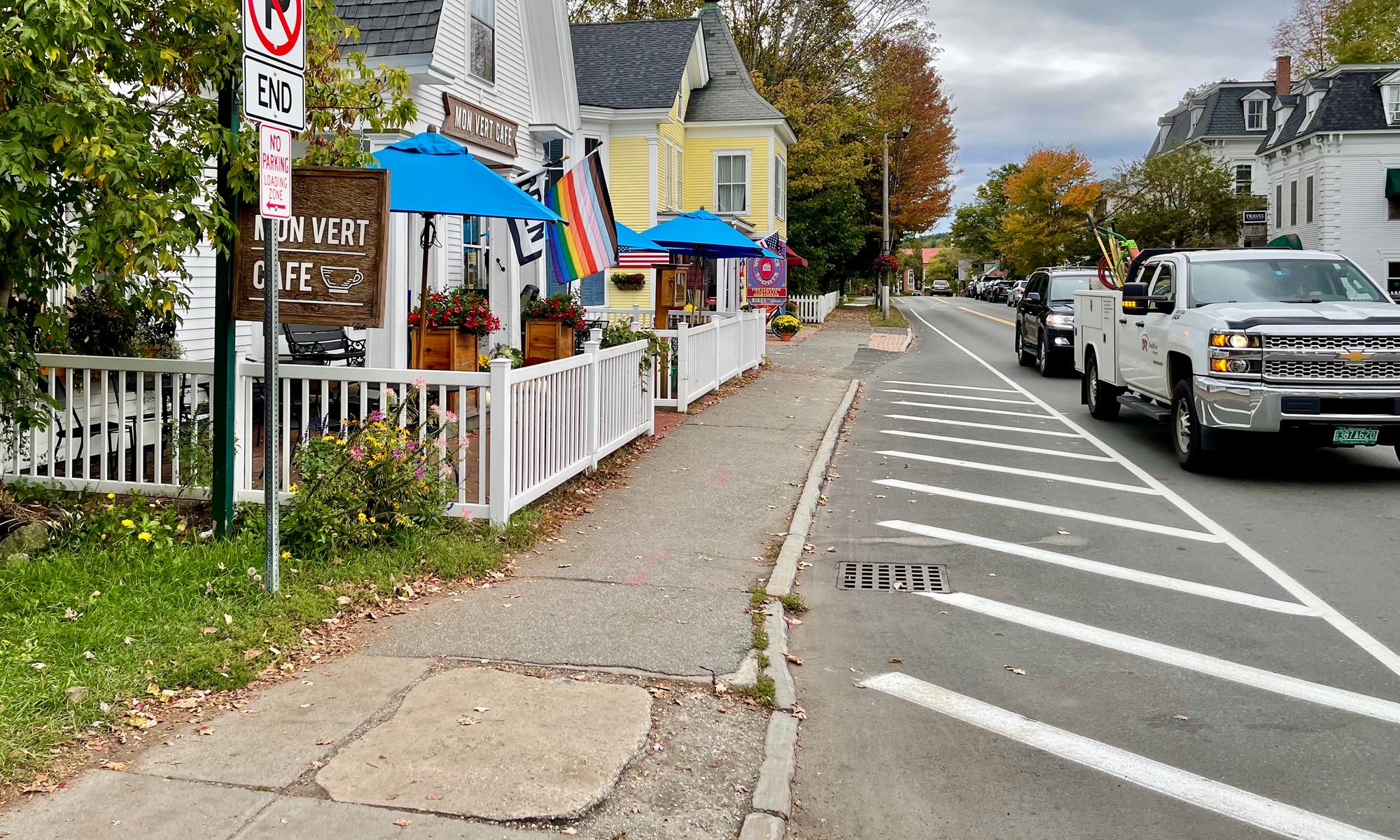


Hanover, New Hampshire
Hanover is the only town we visited where we have seen an effort to compress the traffic and widen the sidewalks into the traffic and parking lanes. Activations on Hanover's streets show what is possible for Main Streets, even just through temporary experiments. The point is that even a few outdoor cafés change the perception of an overly large Main Street.
Opportunities: These experiments are a clear signal that sidewalks could be widened permanently. Existing retail/restaurants could extend onto the sidewalk from the buildings and the curb lane (former parking) could be for outdoor seating or even small pavilions and kiosks used as day stalls or new incubators for businesses. Once again, a Power of 10+ strategy could be a way to move forward on this, especially because the existing layout and distinct places in Hanover lend themselves to creating a strong downtown.


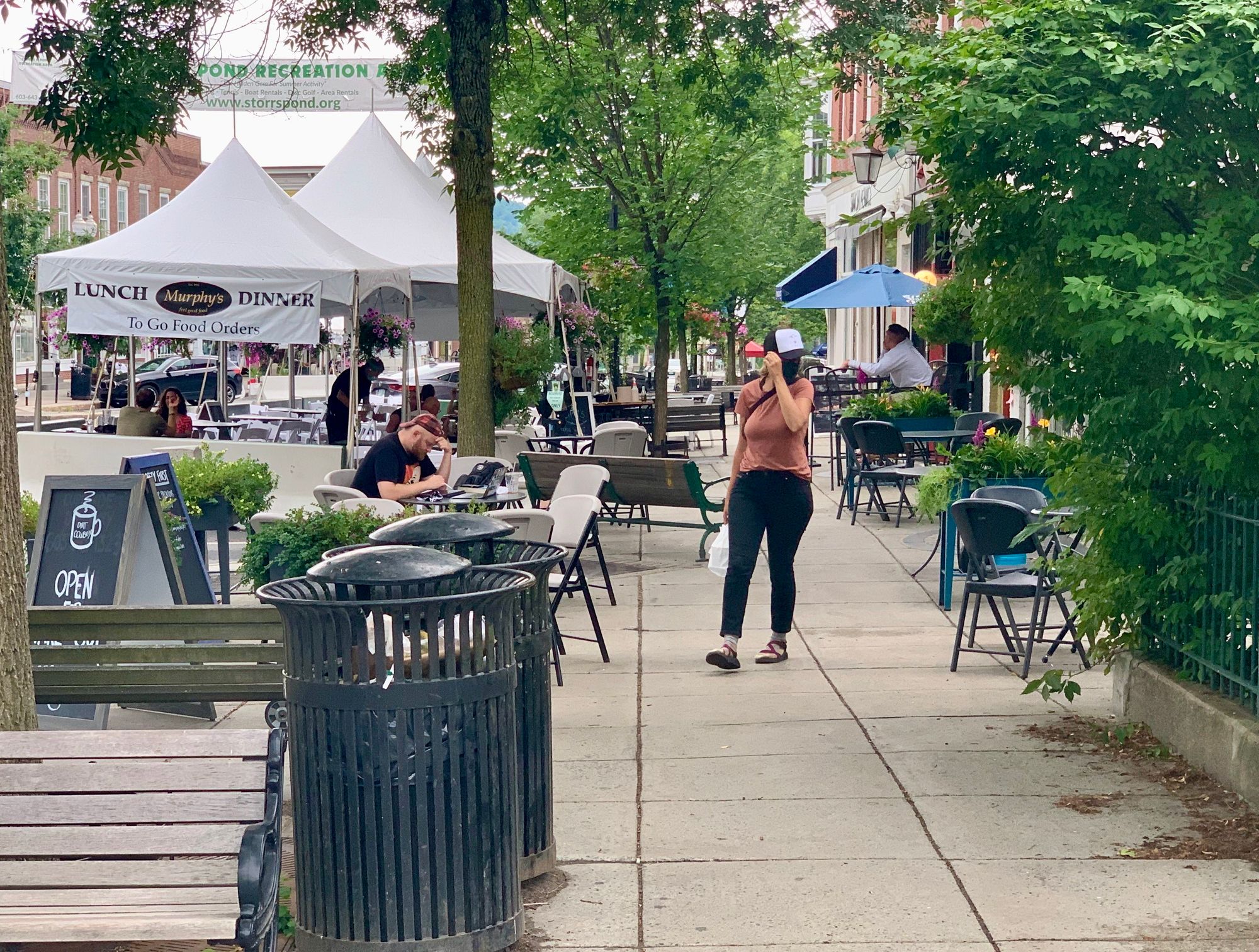
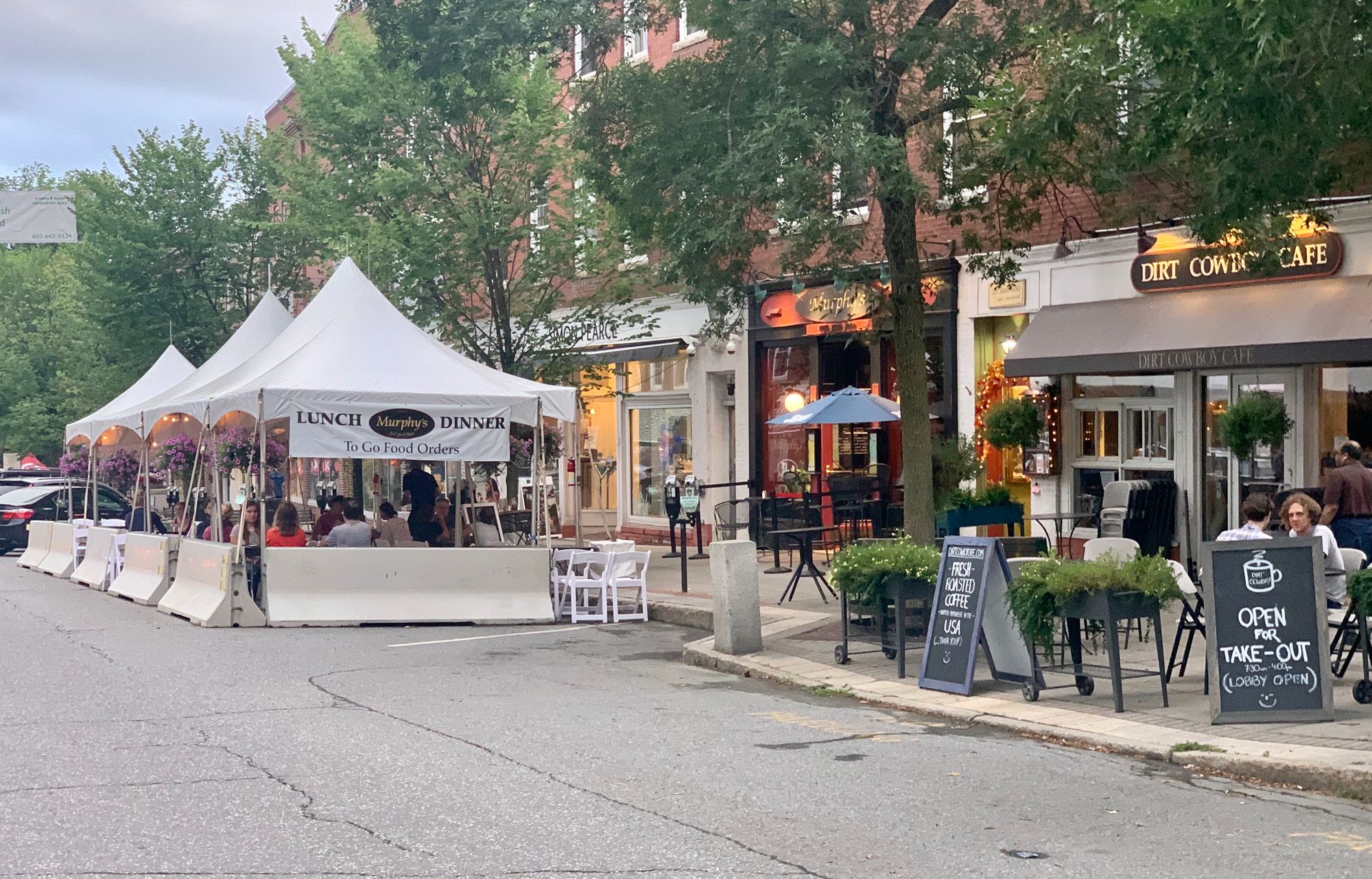

Rochester, Vermont
We were immediately taken by this small Vermont town. It has beautiful homes with porches, a small inn, a green, and some quirky, interesting places to stop and explore. It has all the qualities of a great small town, except the road going through it is like a highway. Slowing it down would add a lot of reasons to stop and explore.
Opportunities: The road winding through Rochester is oversized, and therefore a recipe for speeding cars. Slowing down the vehicles by narrowing the road, especially where there are interesting places to stop (Shill Effect) would have a big impact. It has the potential to create destinations for visitors to explore, such as a book store, a great hardware store open to the street, and a green — and always the possibility to add more attractions over time.
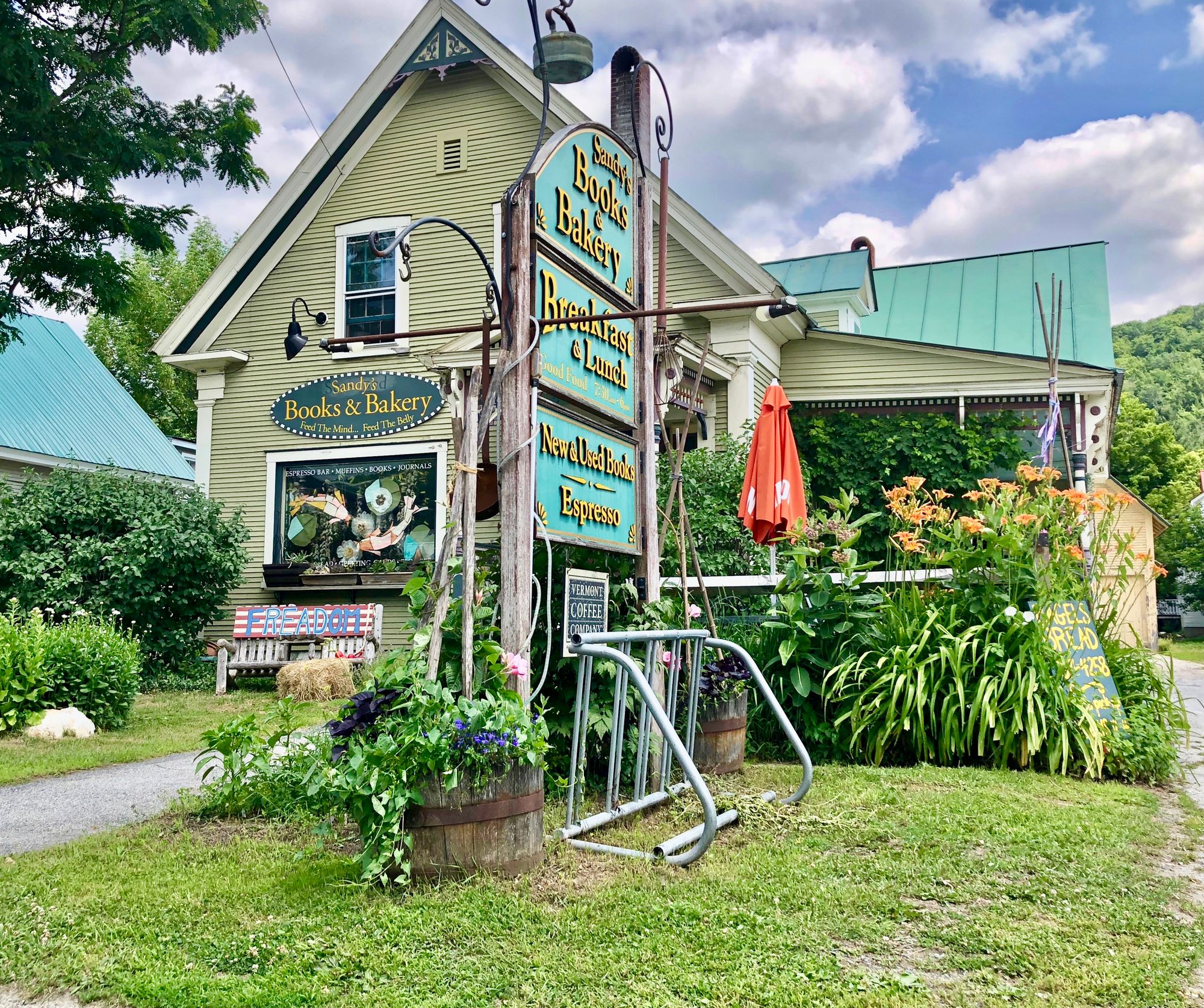
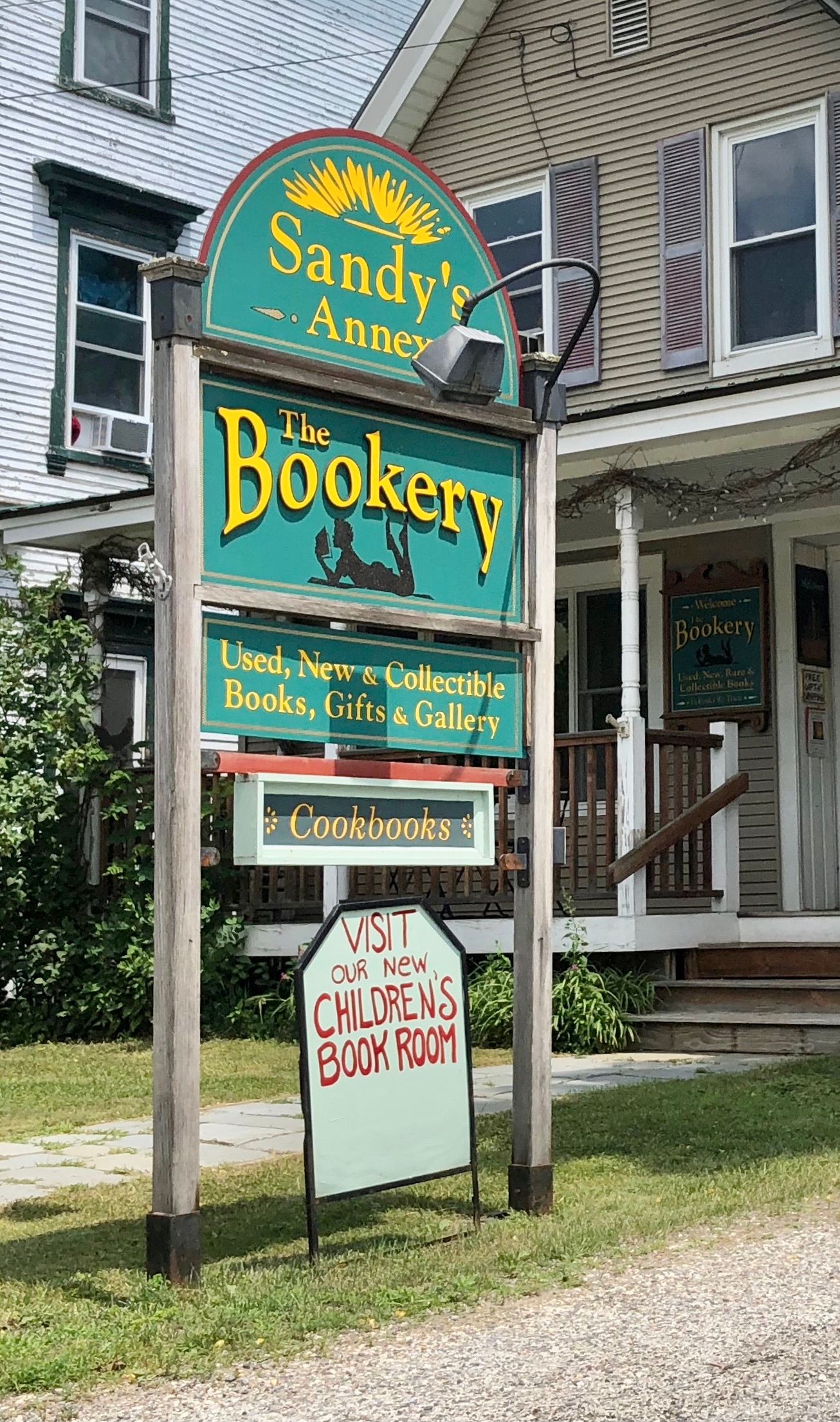

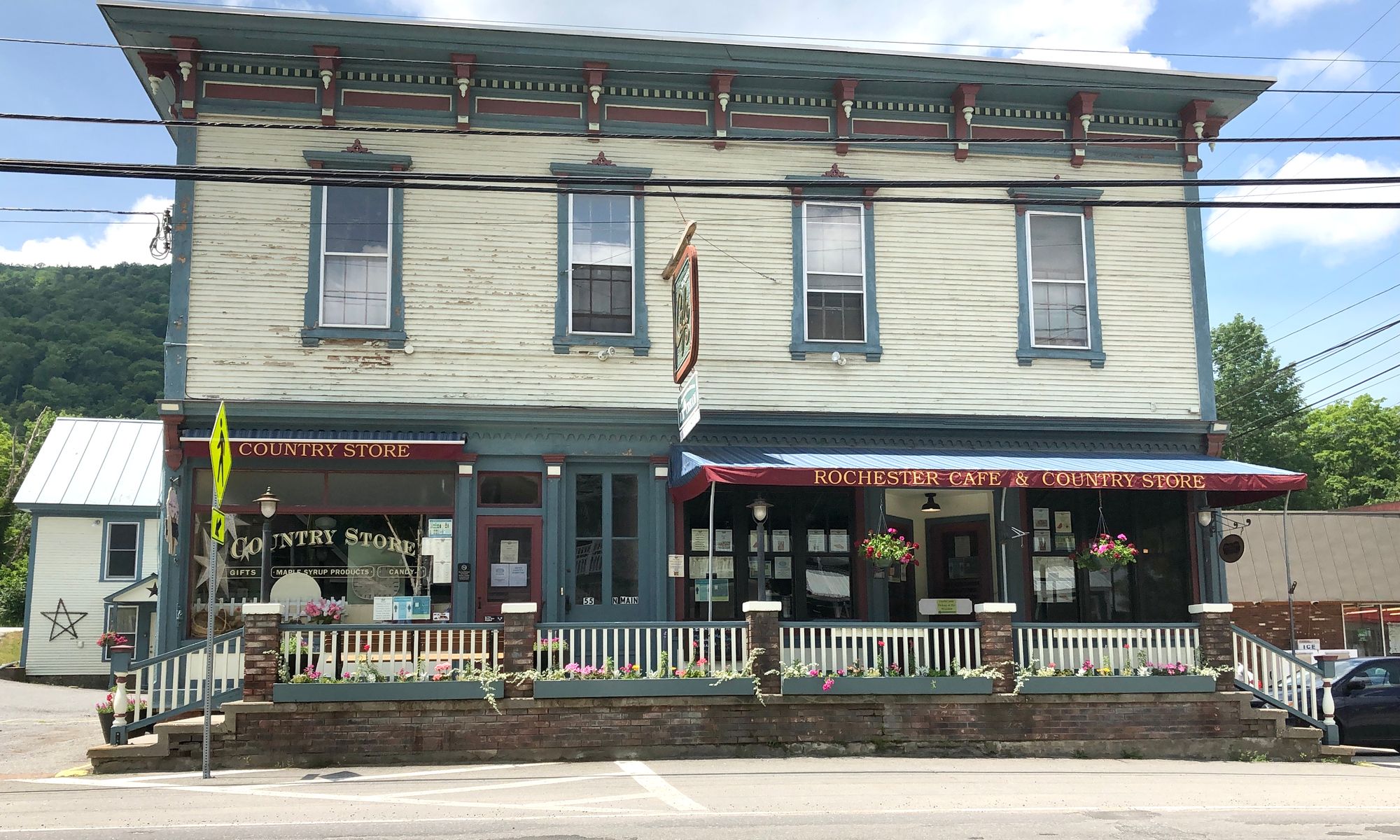



The downtown has a number of exciting destinations that give it a unique quality


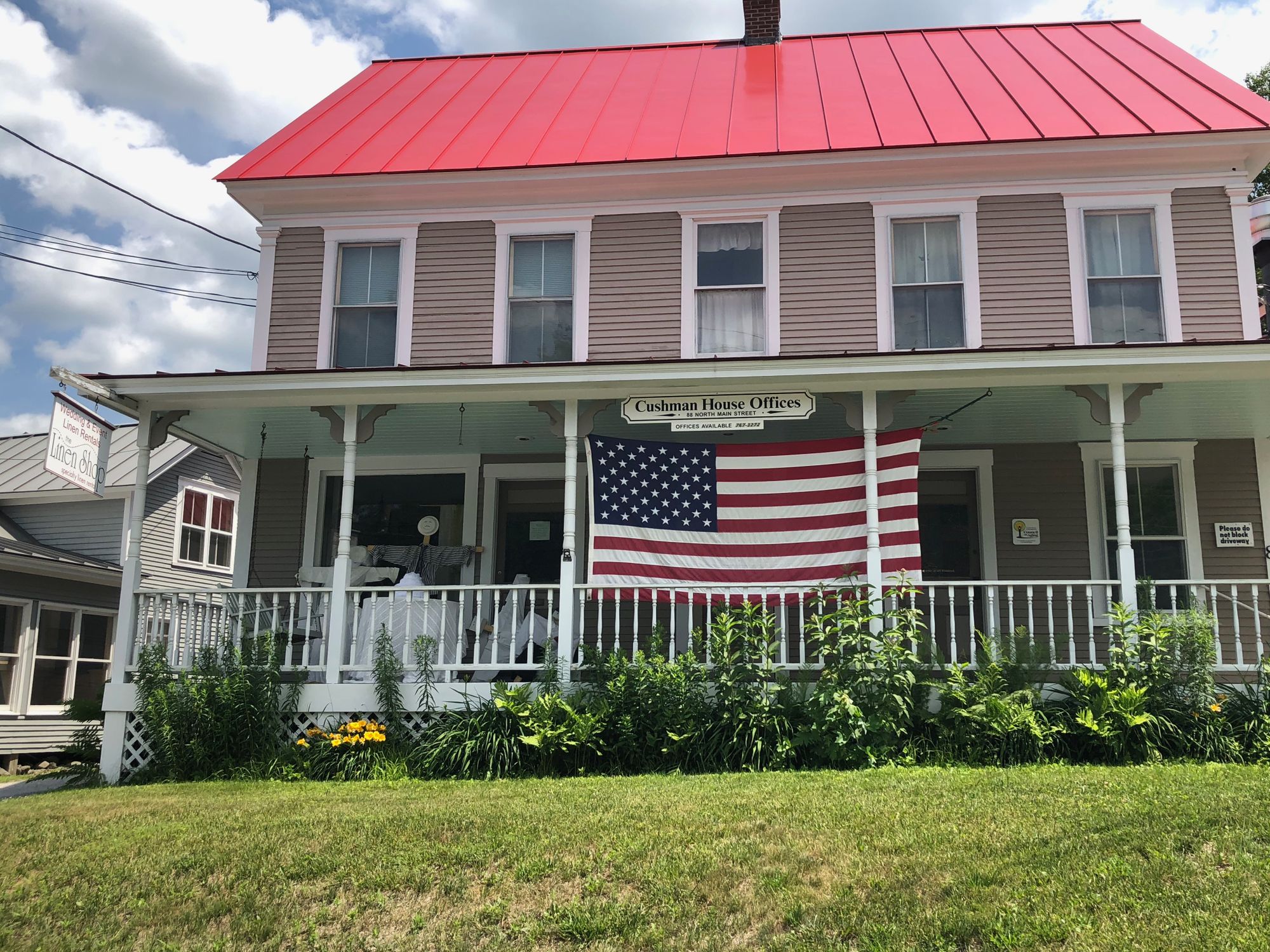


Belfast, Maine
This waterfront village is a real treasure. The stores in the downtown are places to shop, eat, and hang out, and the waterfront offers opportunities. But as of now, it is disconnected from the downtown even though it is one of the more interesting waterfronts along the Maine Coast. Nonetheless, Belfast is definitely worth a visit. It has a unique local feel, and people are very proud of their city, making you feel very welcome.

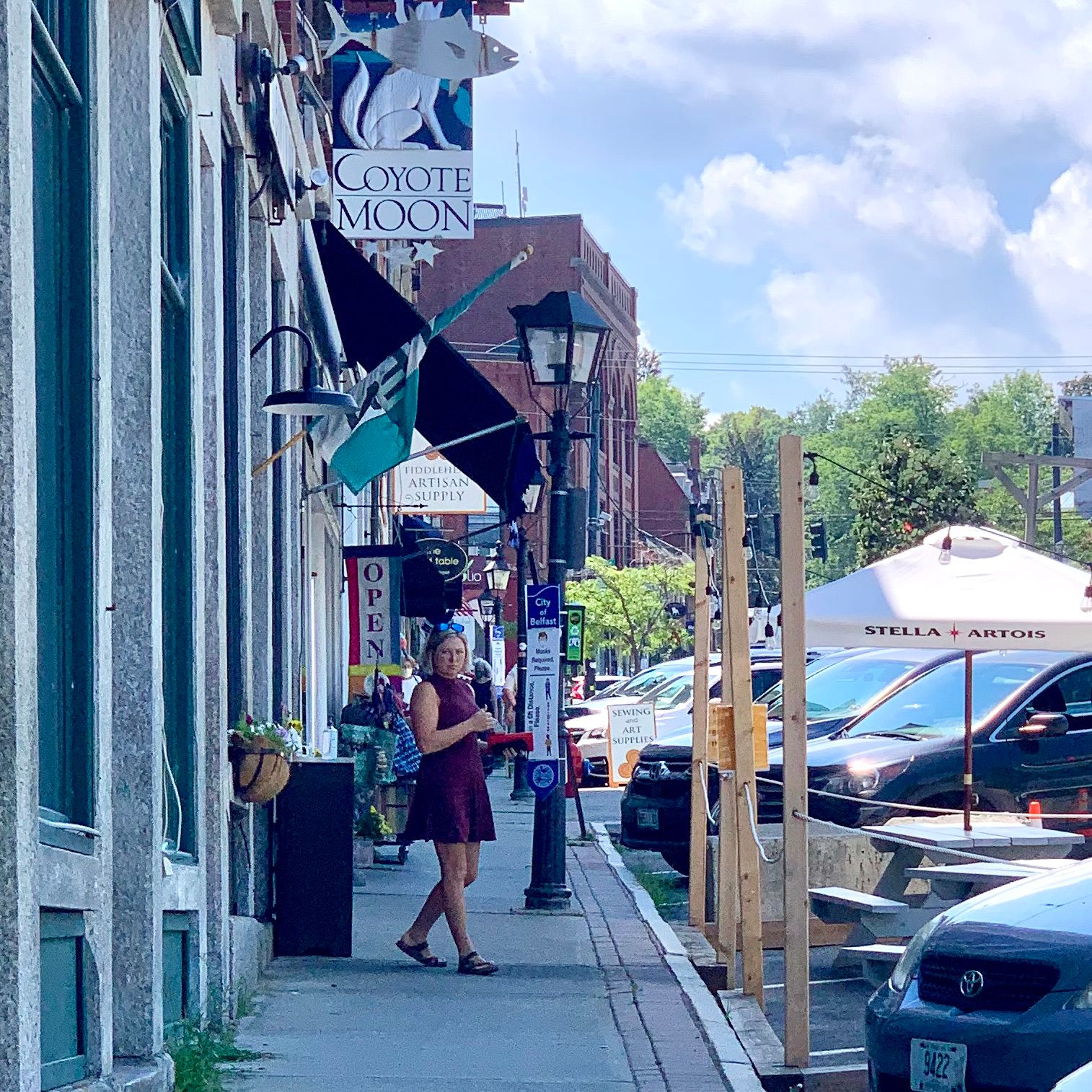
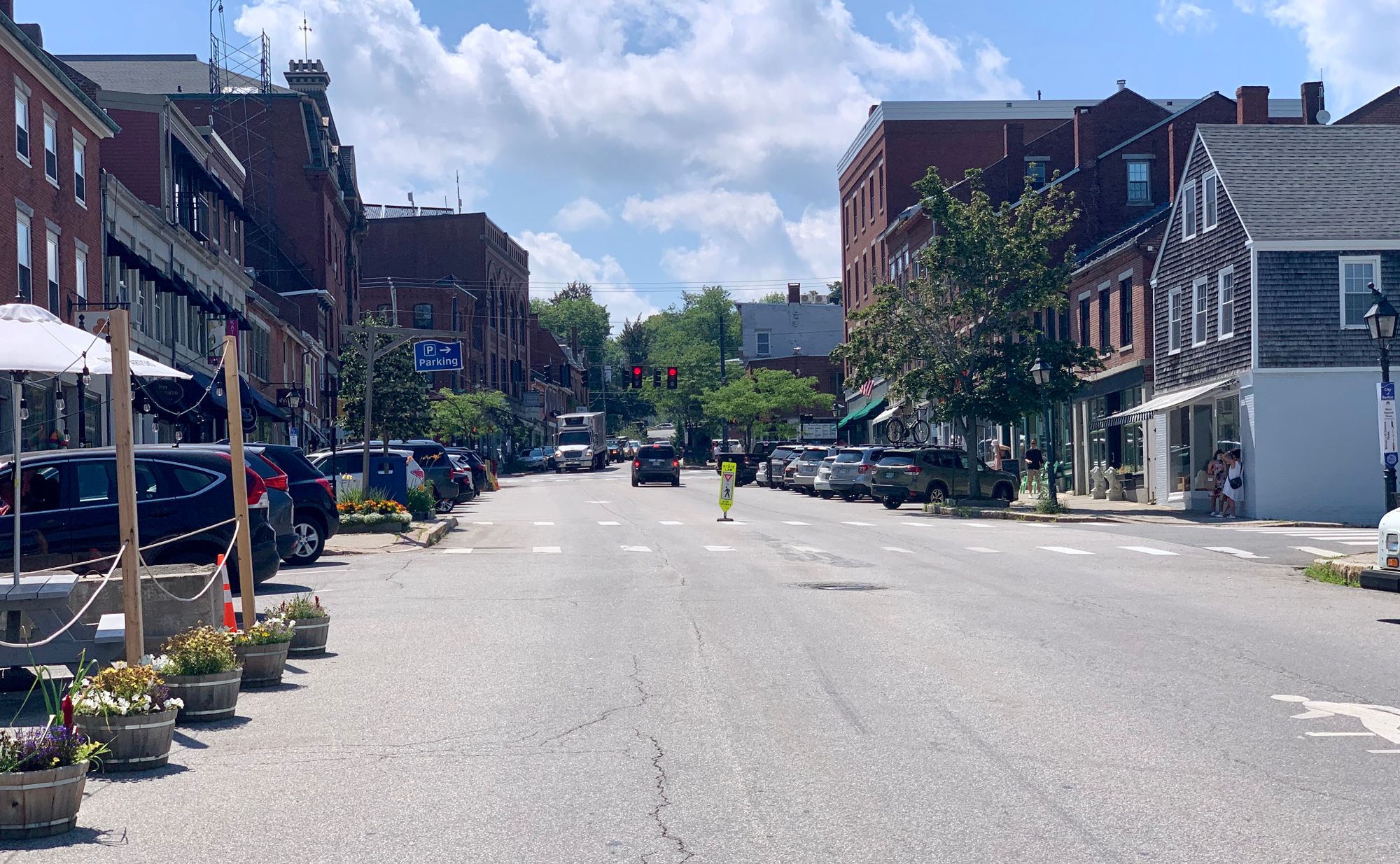

Like in so many other towns, the sidewalks in Belfast are too narrow. We found ourselves walking in the street rather than on the sidewalks, where it is difficult for even two people to walk together. Main Street is no exception to this unfortunate trend. This greatly limits the potential of the downtown area, especially because the road delivers you to an impressive waterfront. Just imagine if it were more easily accessed by foot!
In addition, Belfast's wonderful Saturday market is located too far away from the center of town or the waterfront. This challenge could be easily remedied: Any of the market's stalls could be in a consignment center with day stalls on the waterfront.
Opportunities: There is so much improvisation evident in this town, but it is repressed by big streets and narrow sidewalks. To get out of these limitations would pave the way for an enormous outbreak of creativity. The major intersections could be the first step: extending dramatically to create a series of "squares" leading down to the waterfront. Again, a Power of 10+ exercise could give a focus on ways to further activate the many assets this wonderful community has... In fact, we think it could be the "Power of 20!" The impact would be powerful.


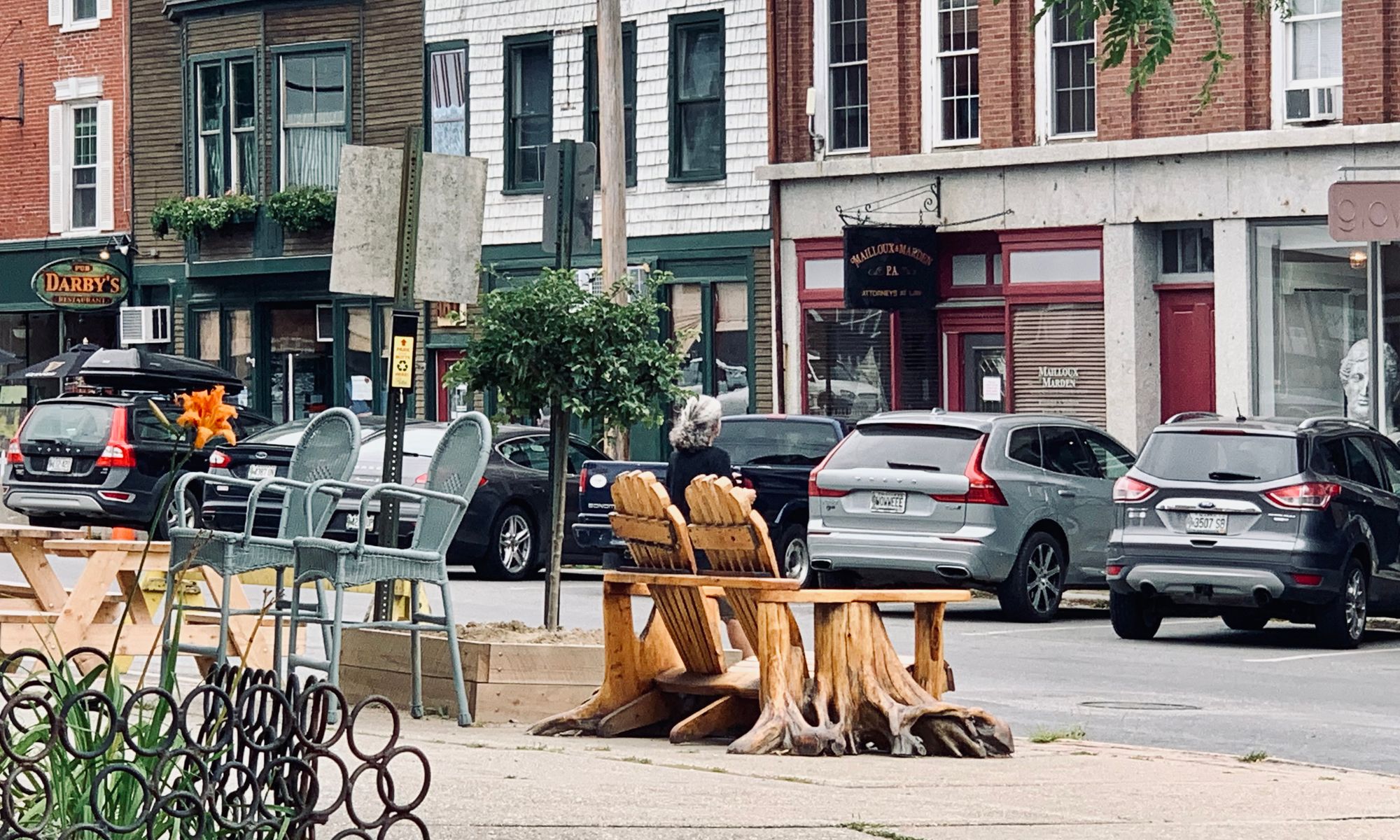







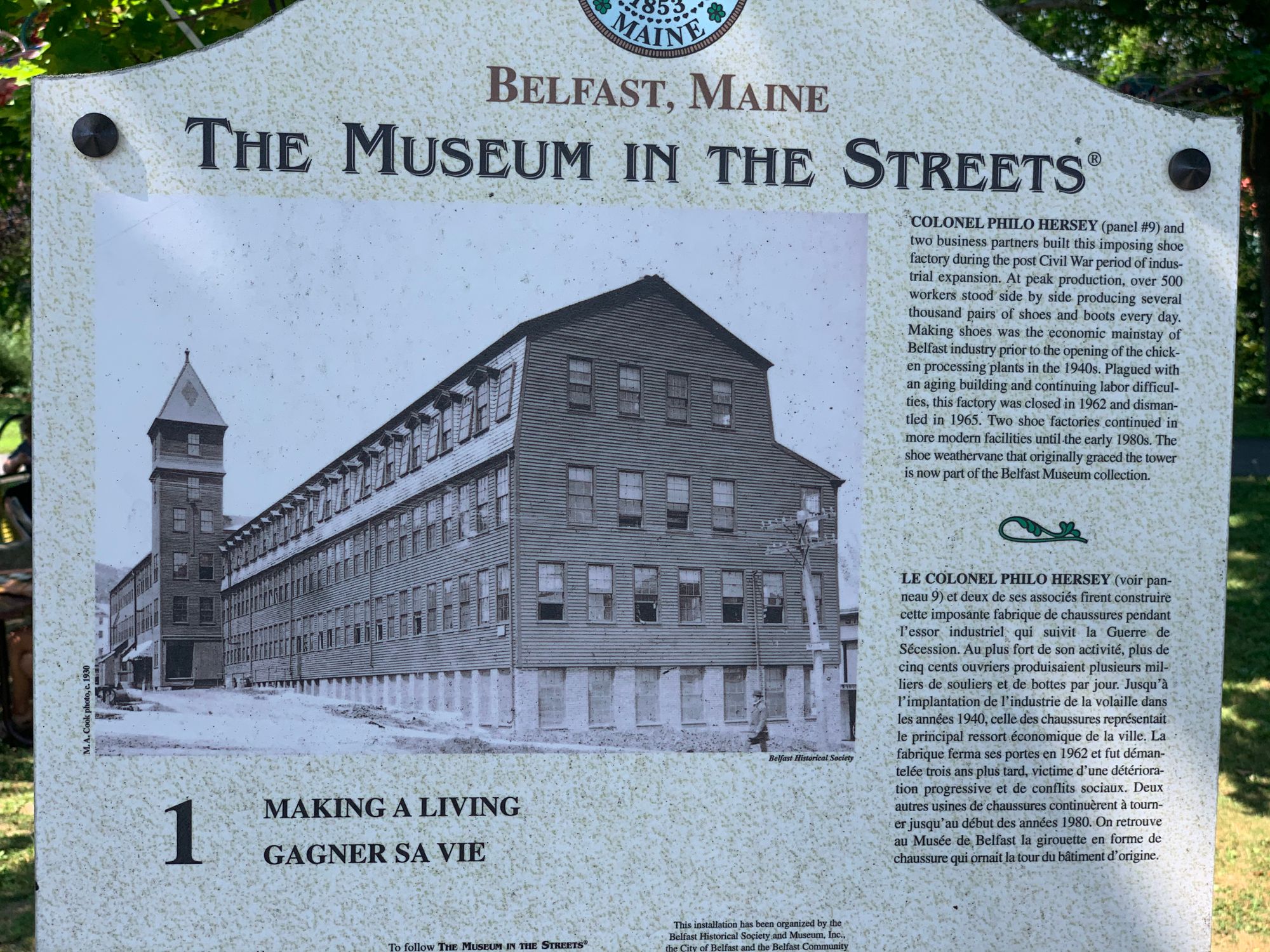
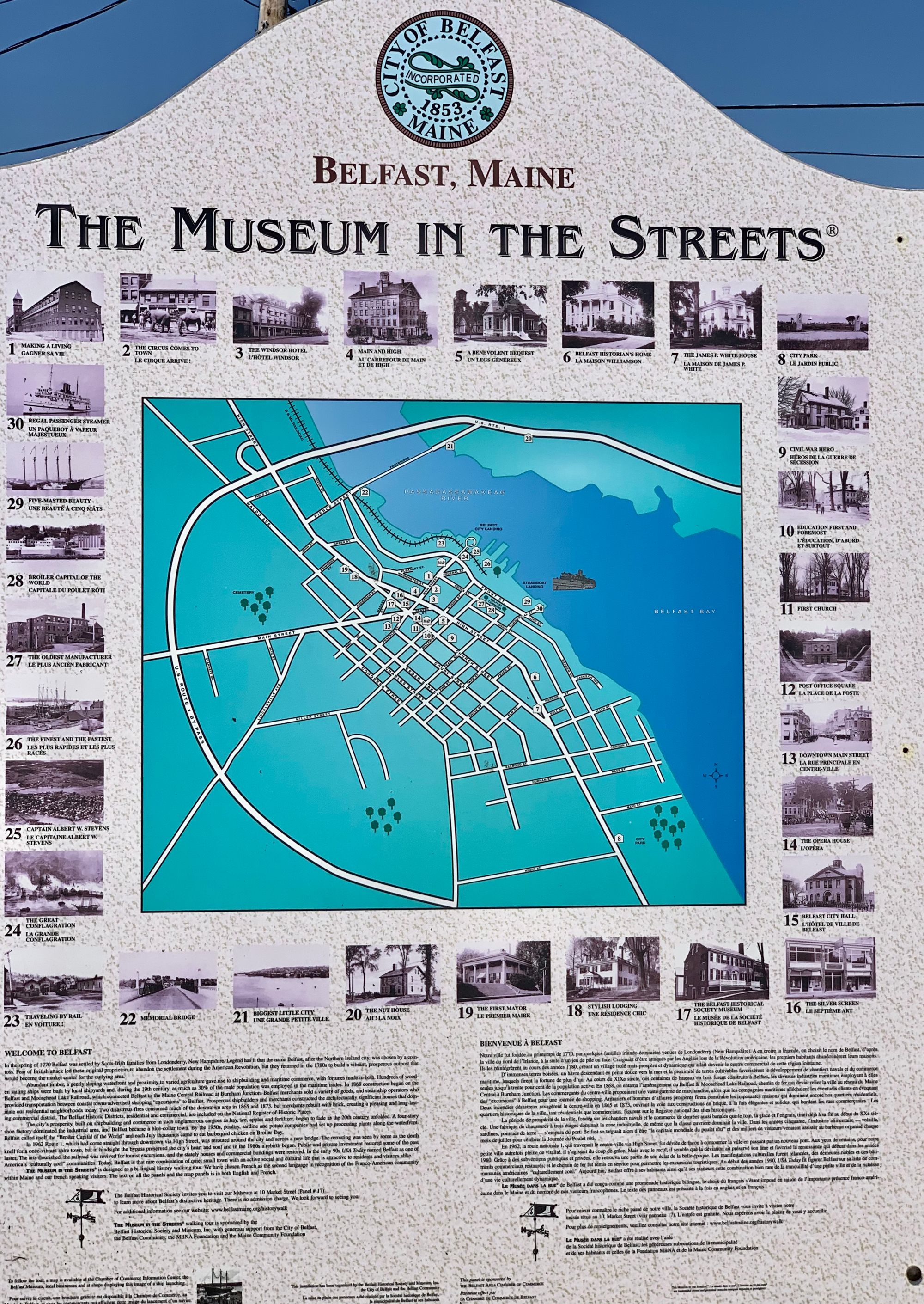
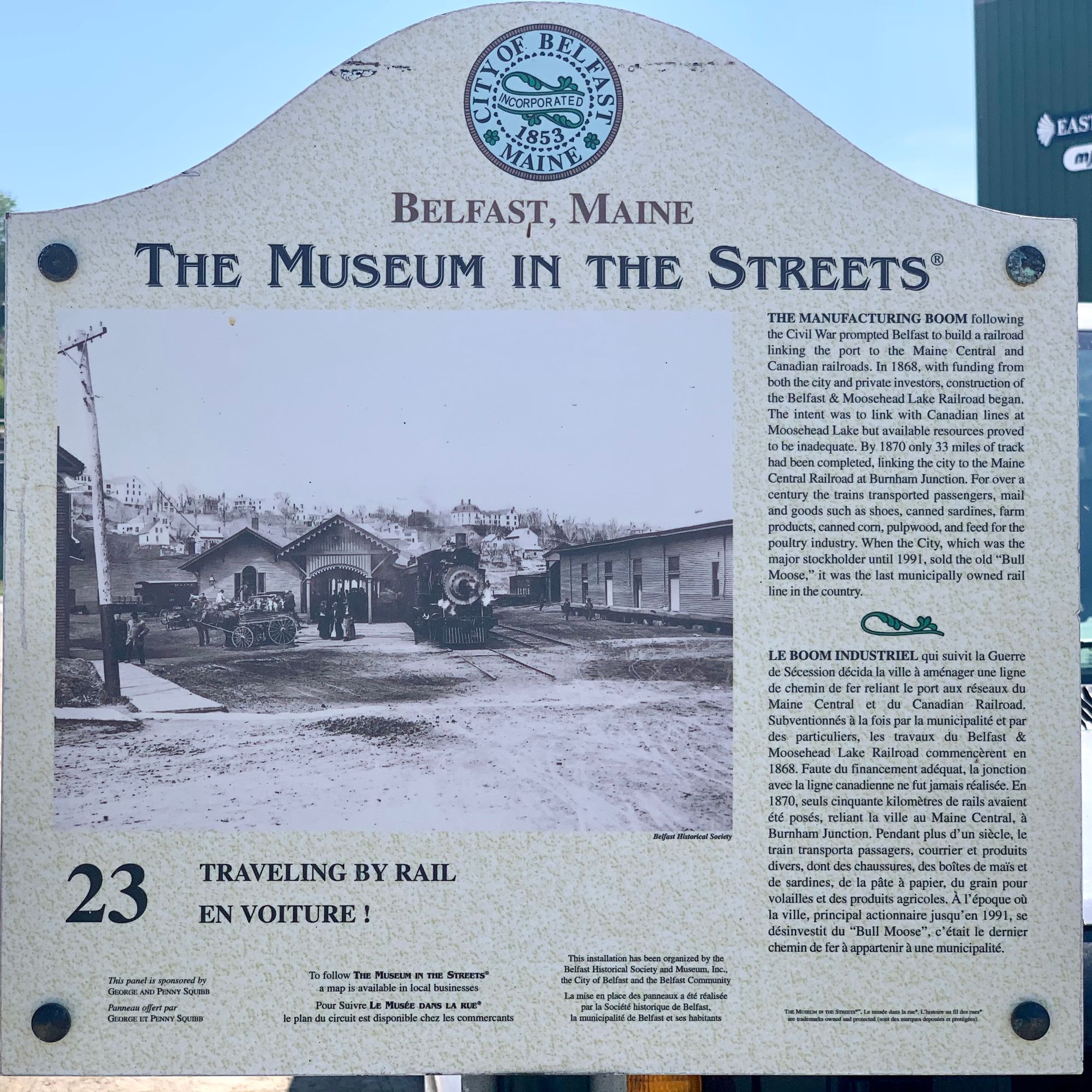



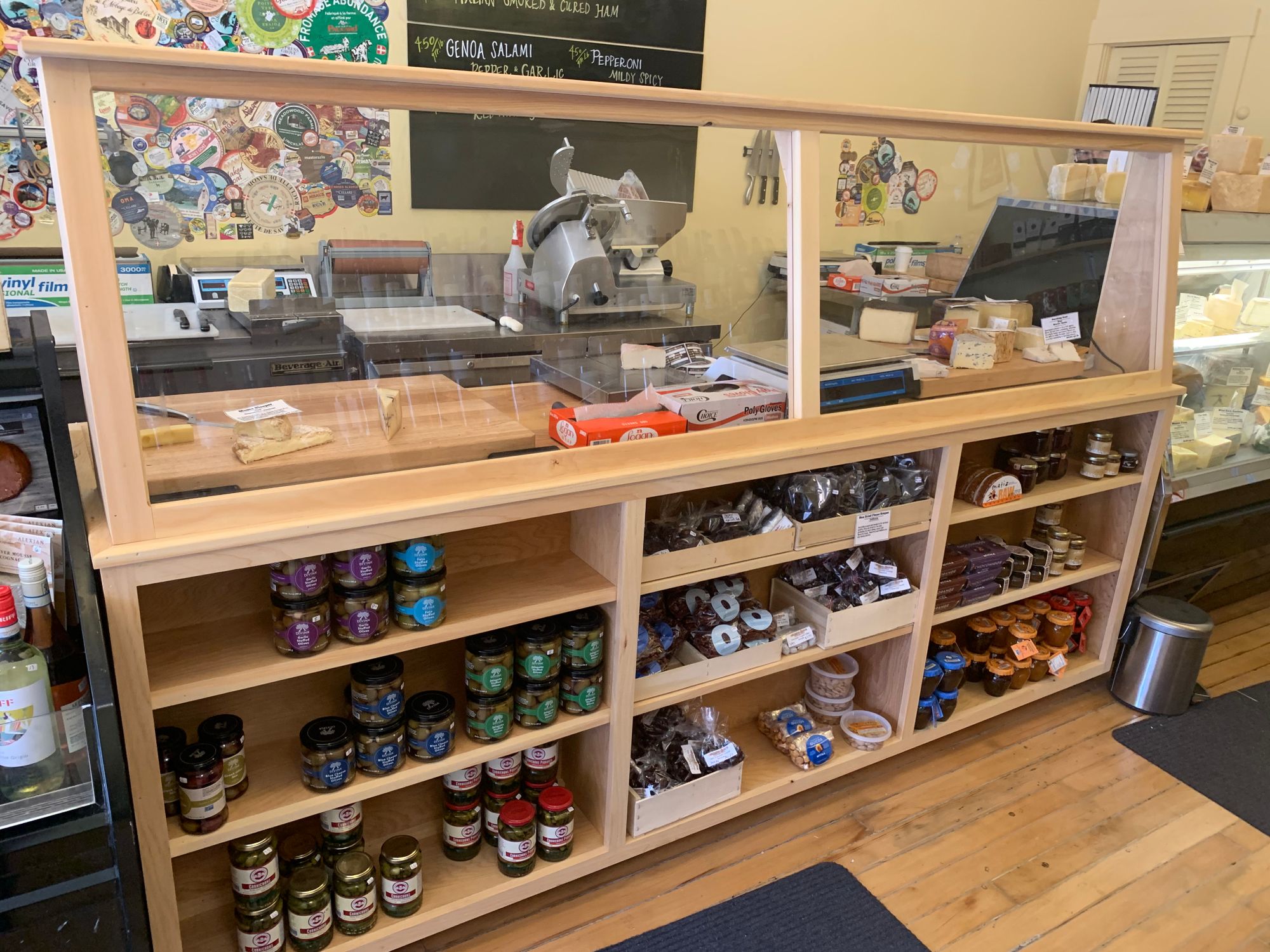
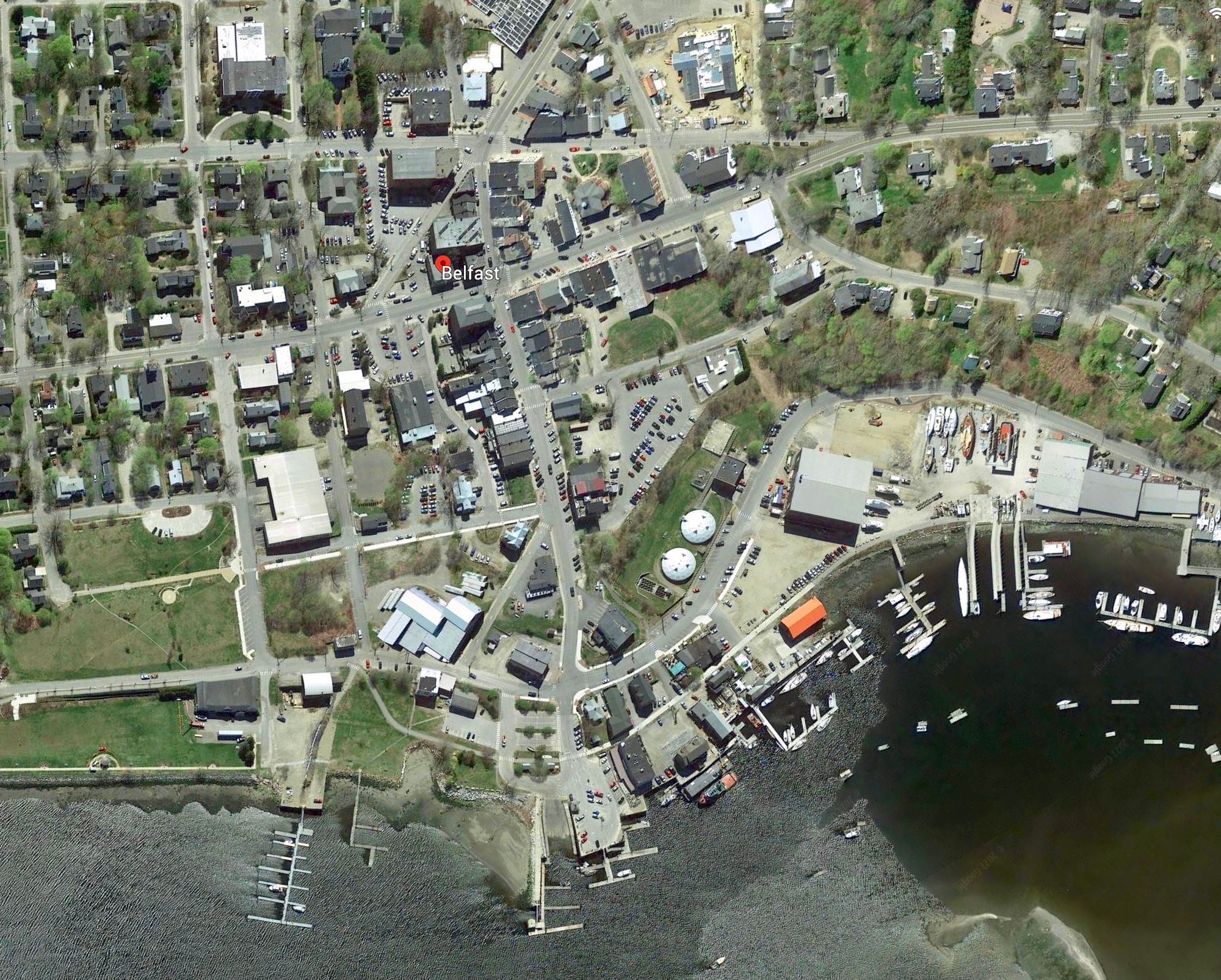

Bristol, Vermont
This is a stunning community. Every aspect of it speaks to one as a place cherished by those living there. It has beautiful homes, well kept and well used. The porches are mostly lived on. It is easy and safe to walk and ride bikes for children and seniors. The Green has one of the best playgrounds of any we saw and the community institutions are spread out within the neighborhoods.
Meanwhile, the Main Street in Bristol has shrunk in use over the years, partly as a result of road and intersection "improvements." Even after recently widening the sidewalks, Bristol's Main Street is overly wide, and its center auto-centric. Due in no small part to its size and design, the main intersection is a divider, not a connector. We know that intersections can make or break the social activity in a downtown area: So why do we continue to build them at this scale?
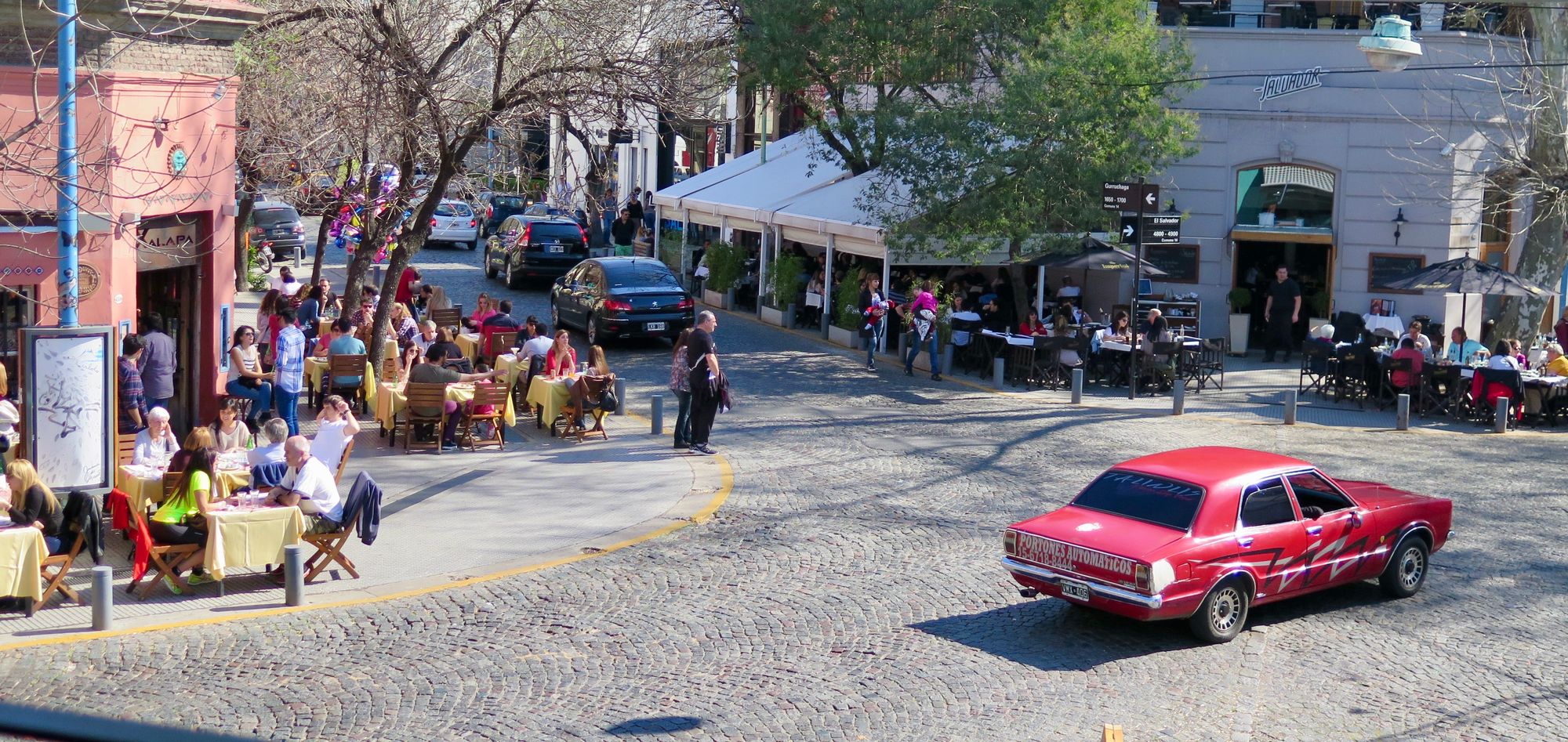
In addition, there is minimal connection from spaces like the Green into the neighborhoods. Meanwhile, the town green, while lightly used, is perceived as separate from the town. Creating a true center would be a game changer for Bristol.


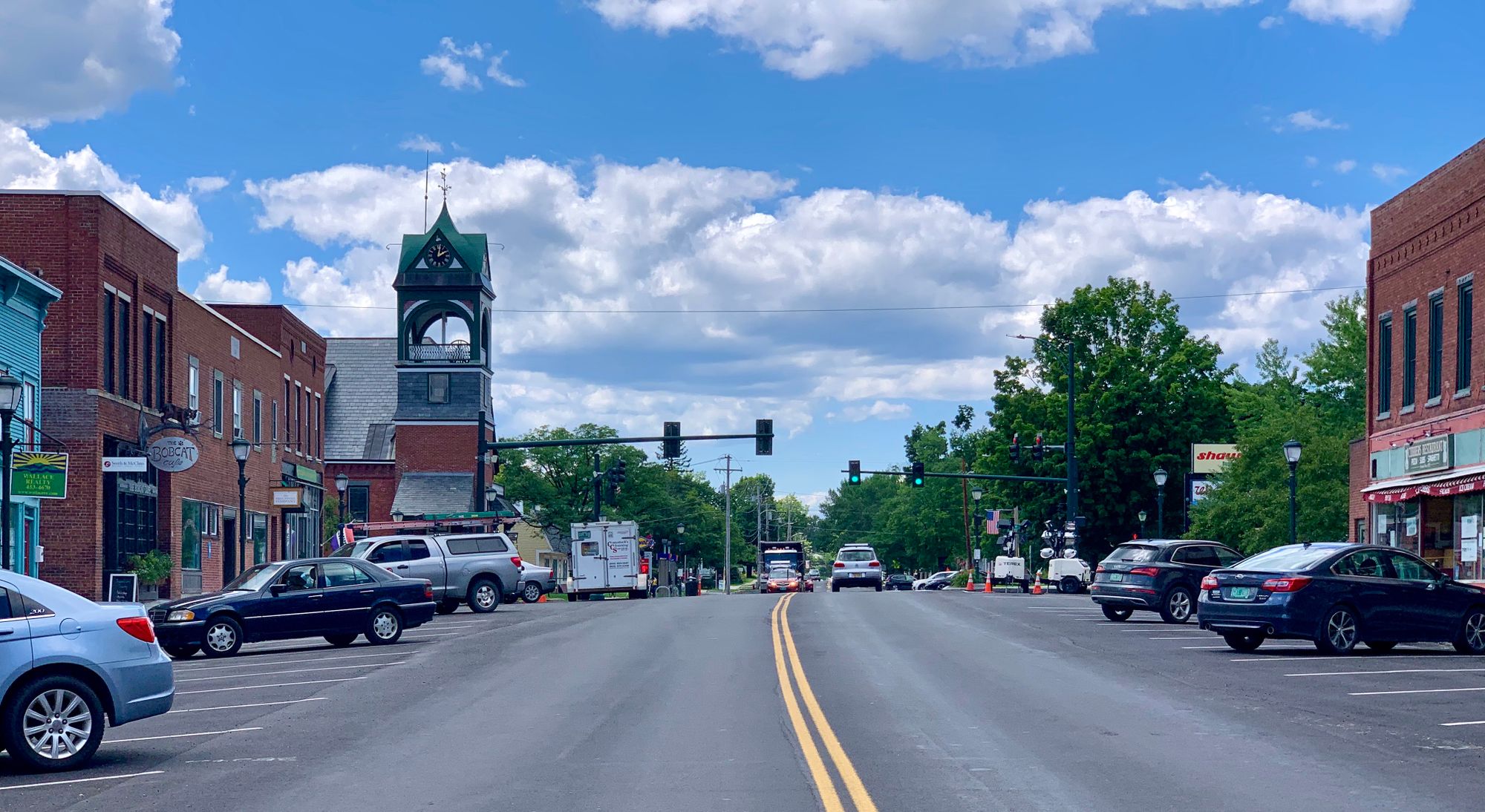
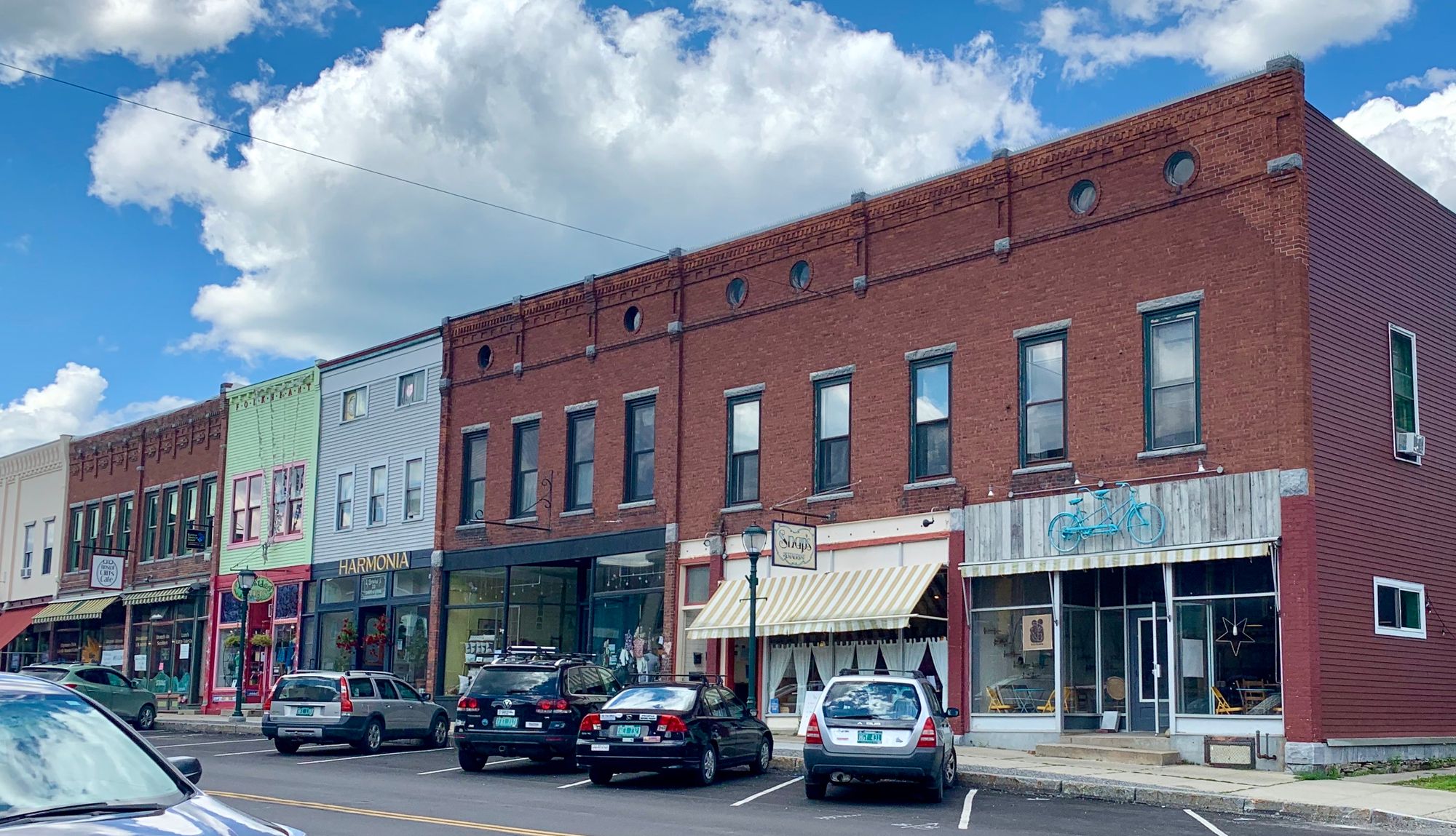



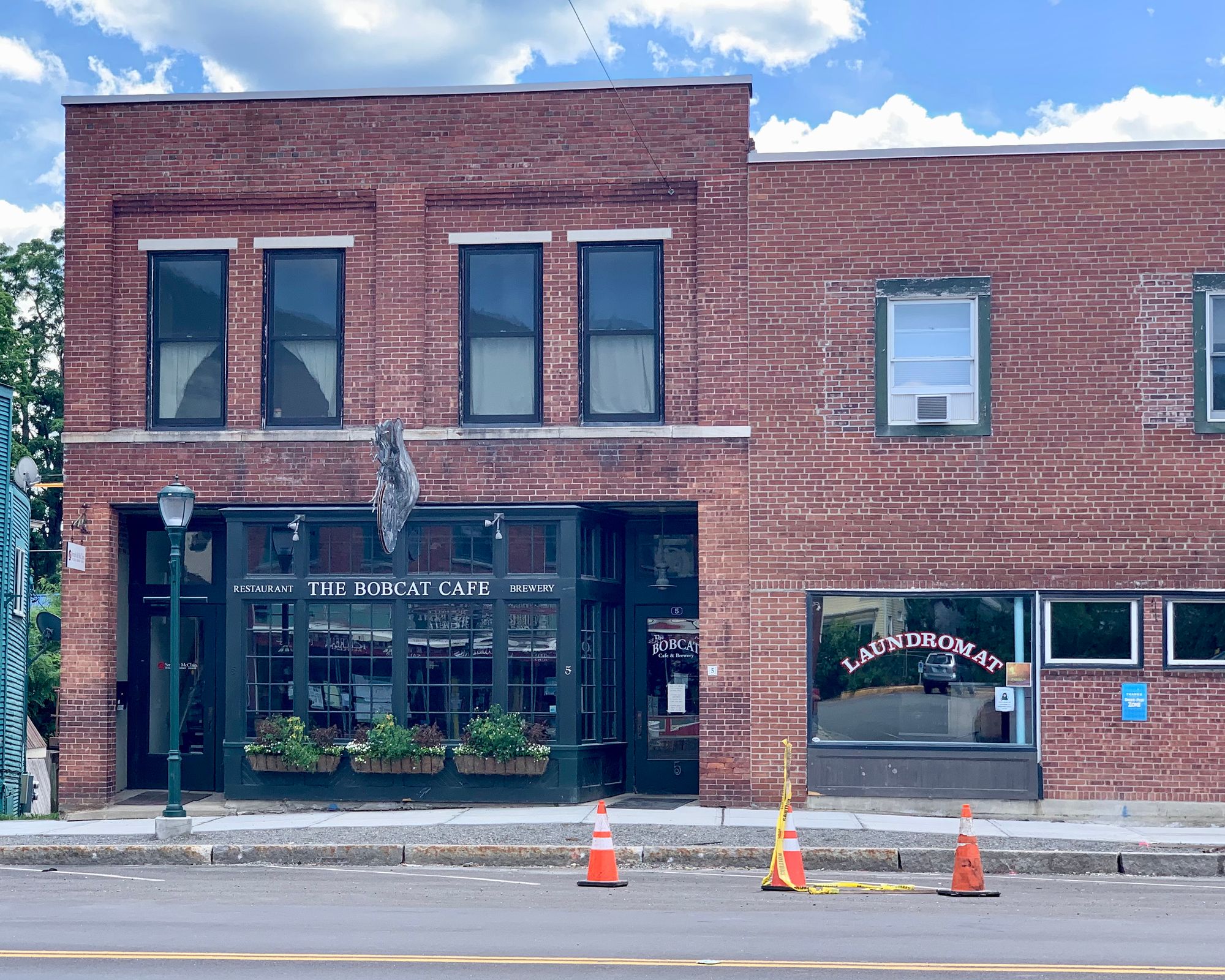
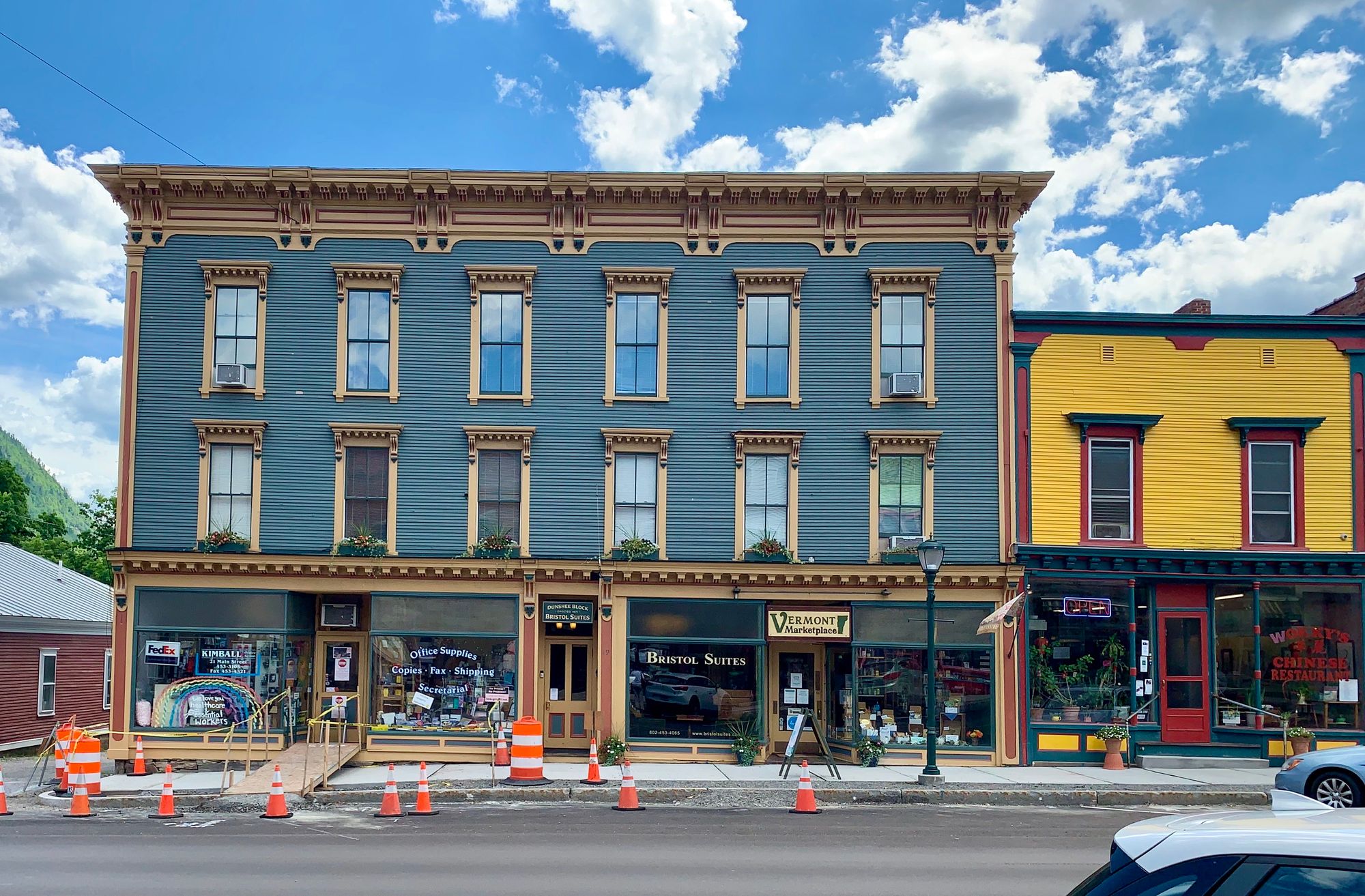

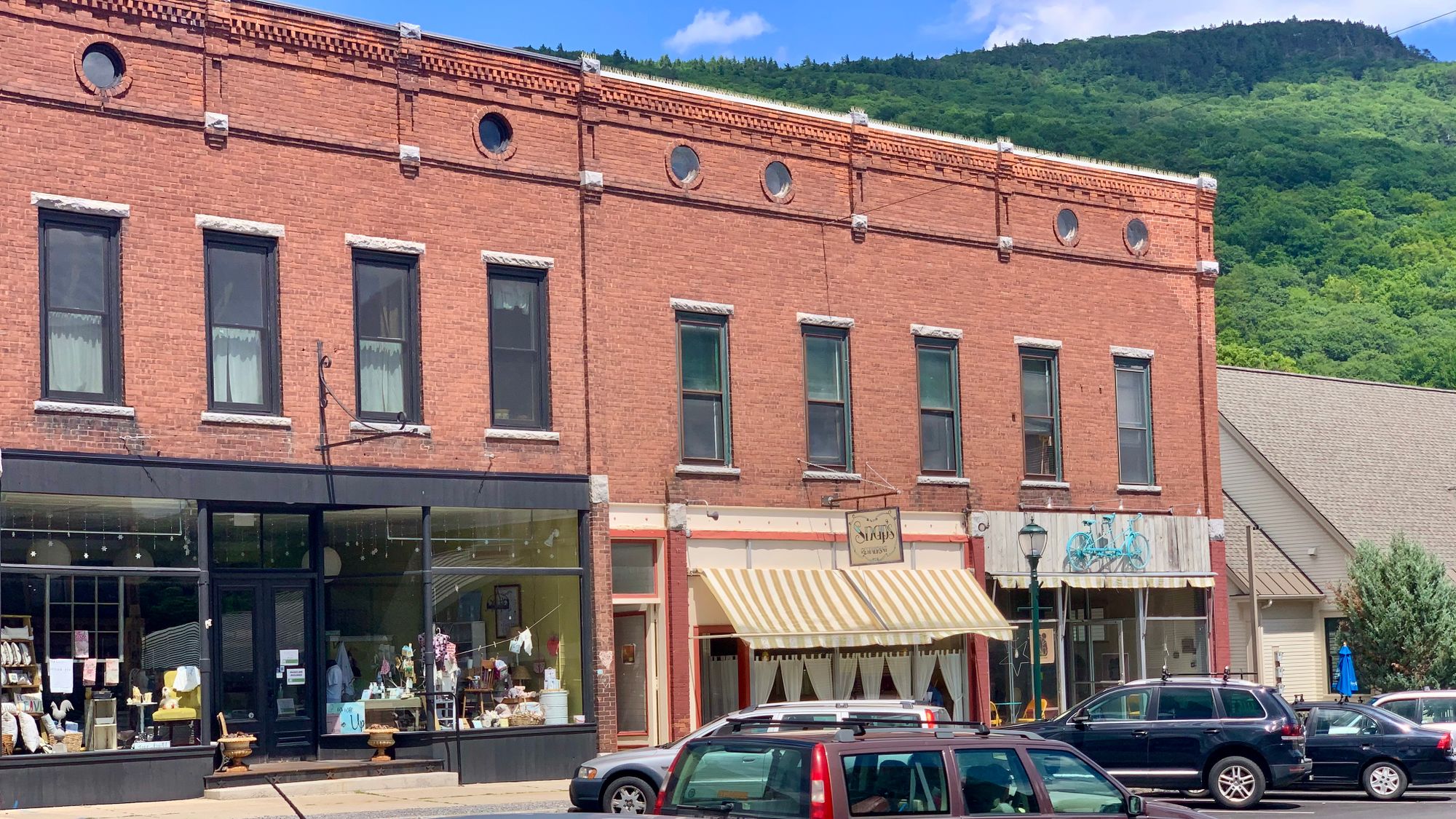

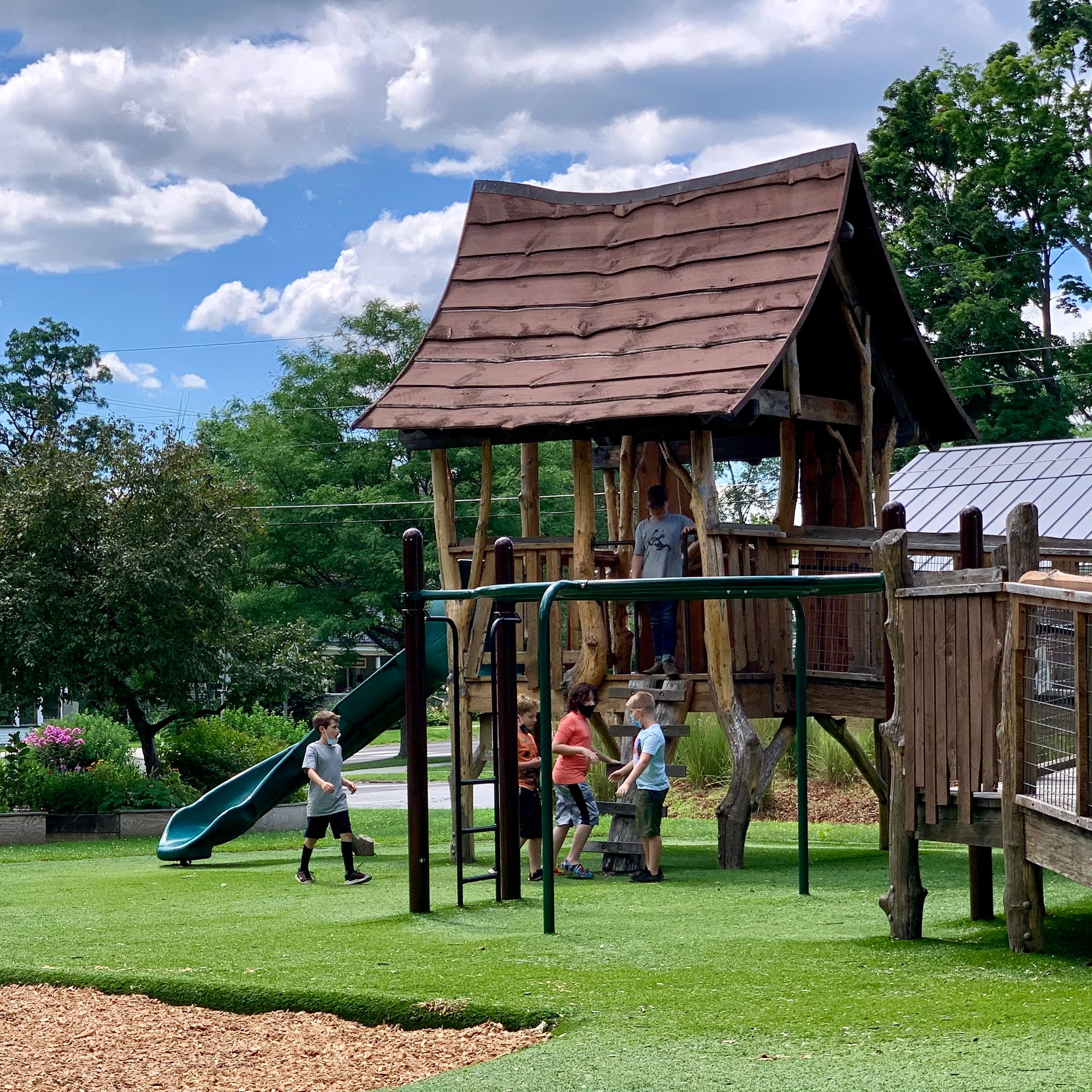
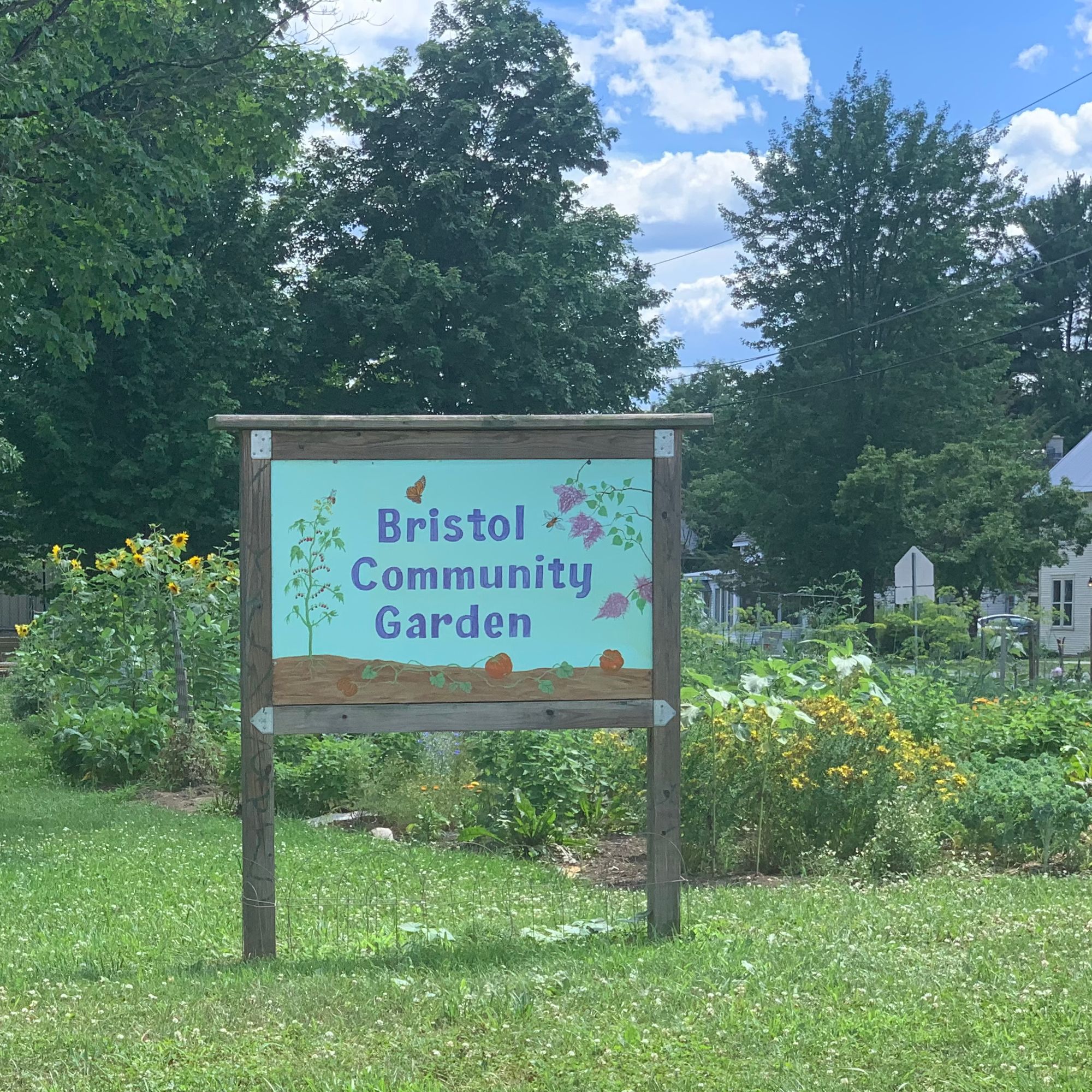





Bristol has many wonderful porches. Some are used as places of expression, with signs and other ways of communicating different messages to neighbors. We think that the intentional revival of socializing in the context of a front porch would be wonderful for the social life of small neighborhoods, but it would take a community-wide effort.



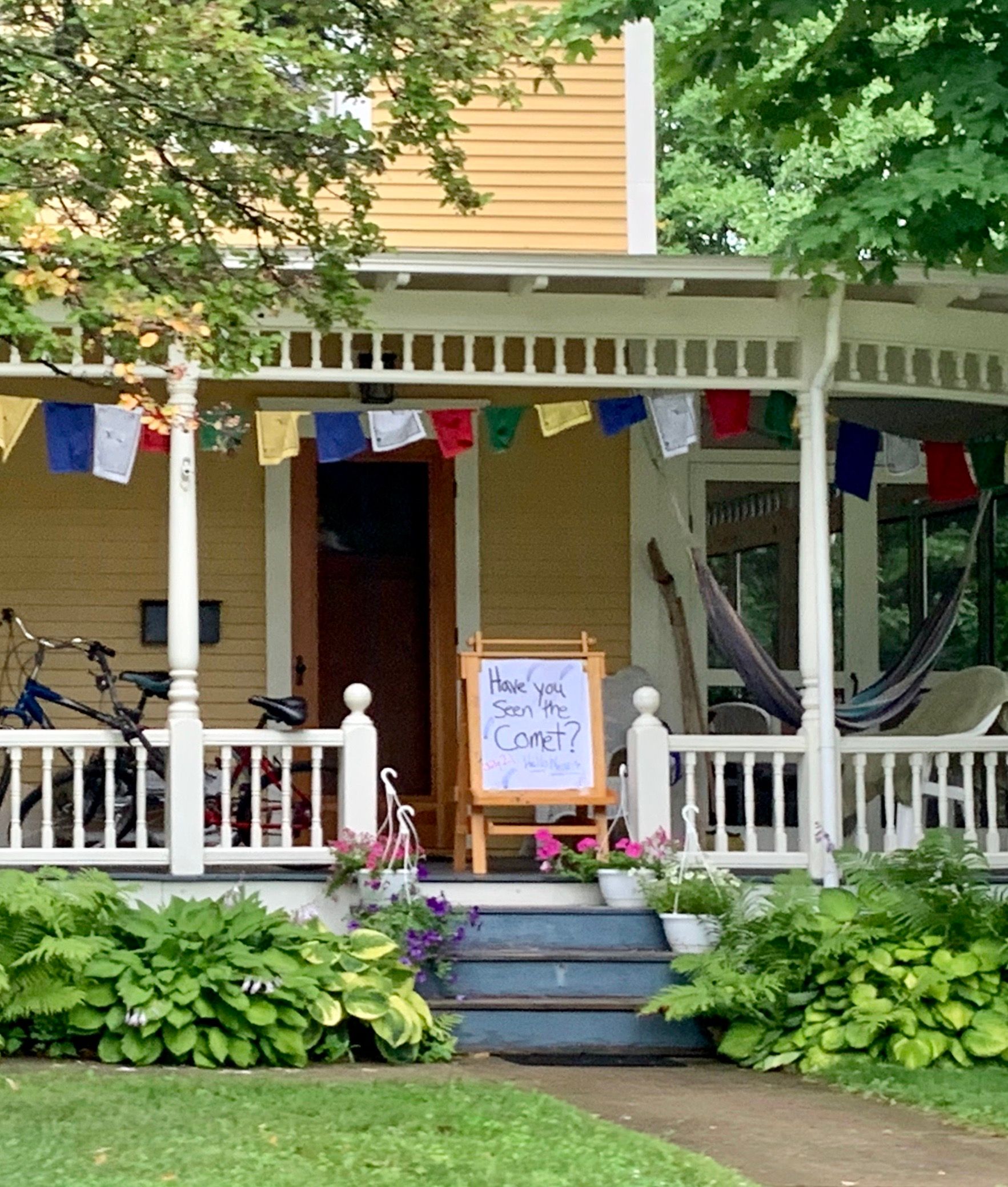

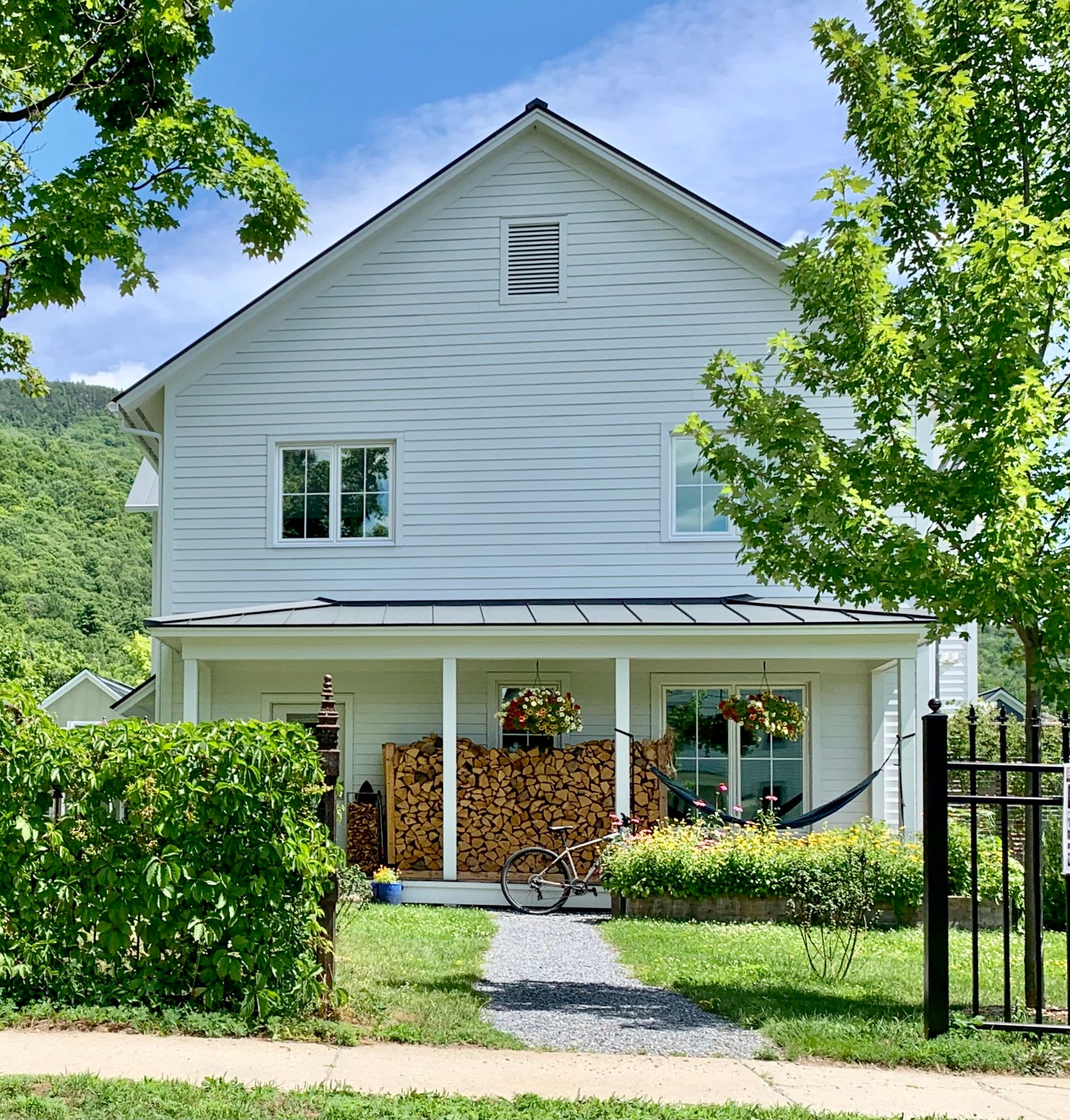

Porches are on most houses, and each is unique!
Opportunities: When we see how one single catalytic intervention could transform what is already a very special community like Bristol, we can't hold back... Bristol could think about narrowing the main road, and could at the same time work to add a very walkable downtown. A starting point could be as simple as making way for bike lanes and clusters of shopping along both sides of the road. By reducing the speed and creating small hubs like these, you would fundamentally shift the perception of that local road. It all starts with seeing the opportunities for the existing center of town.

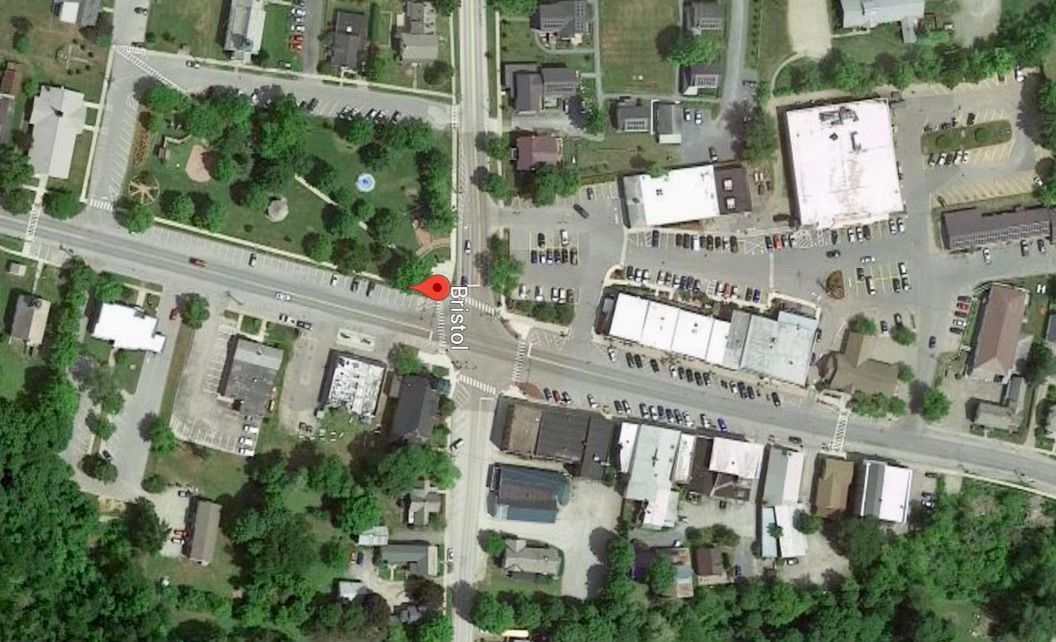
Mahone Bay, Nova Scotia
Mahone Bay is a very lovely small town on the coast of Nova Scotia, Canada. It is distinguished by three steeples, easily seen through a clearing as you approach from the north. You’ll also spot a restaurant, a well-liked destination by both residents and visitors, not just for the food but also for views of the bay and the steeples.

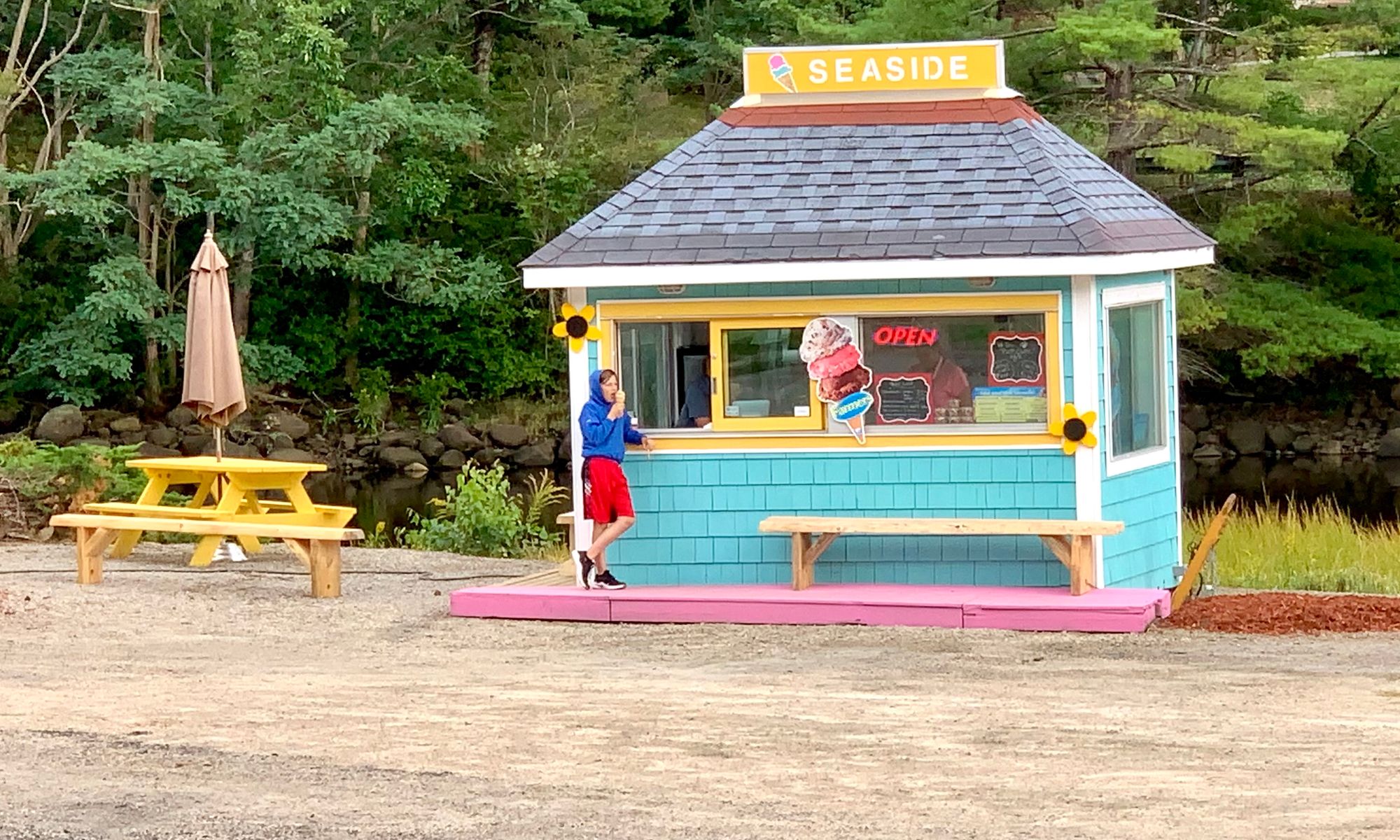
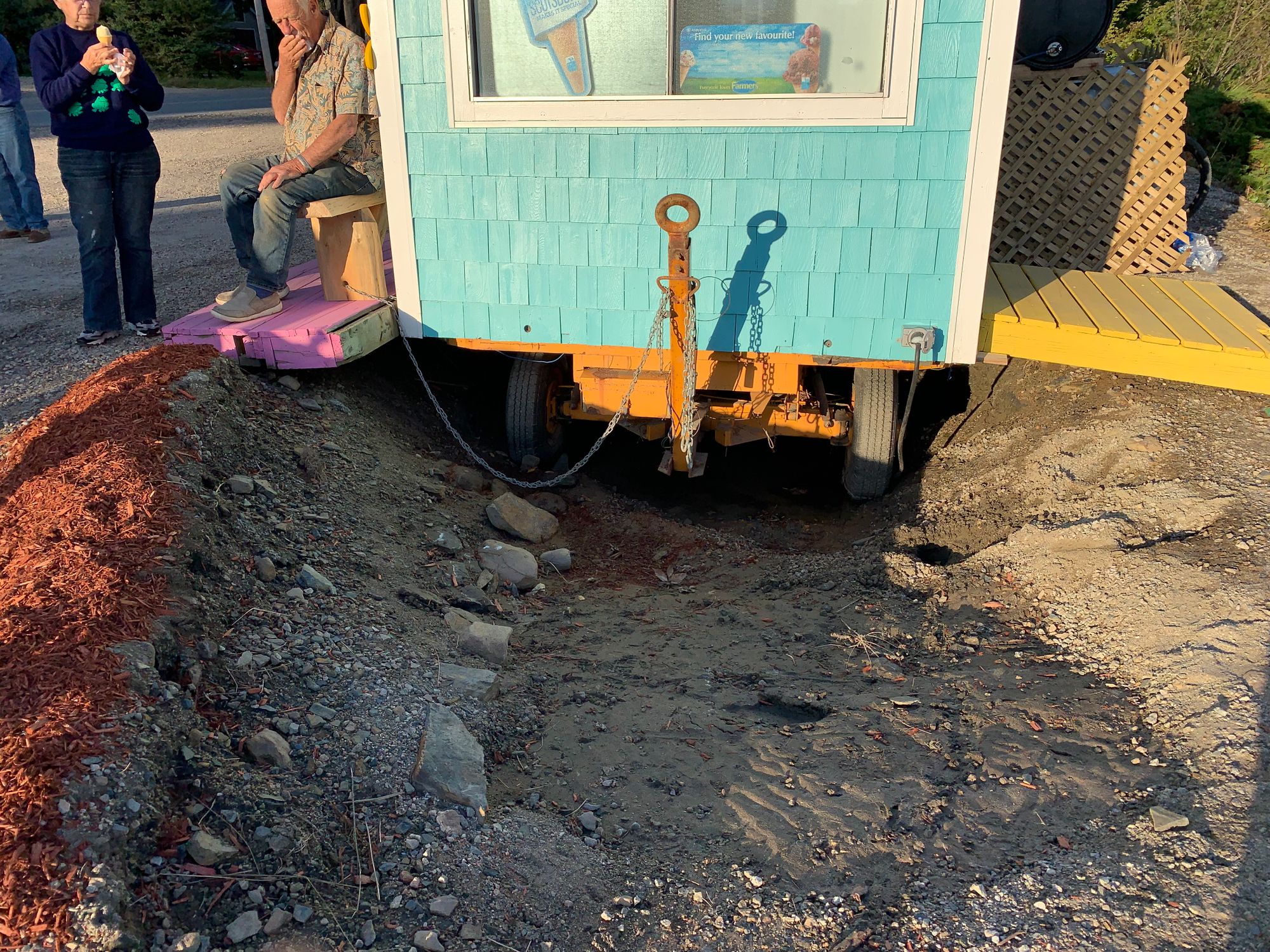
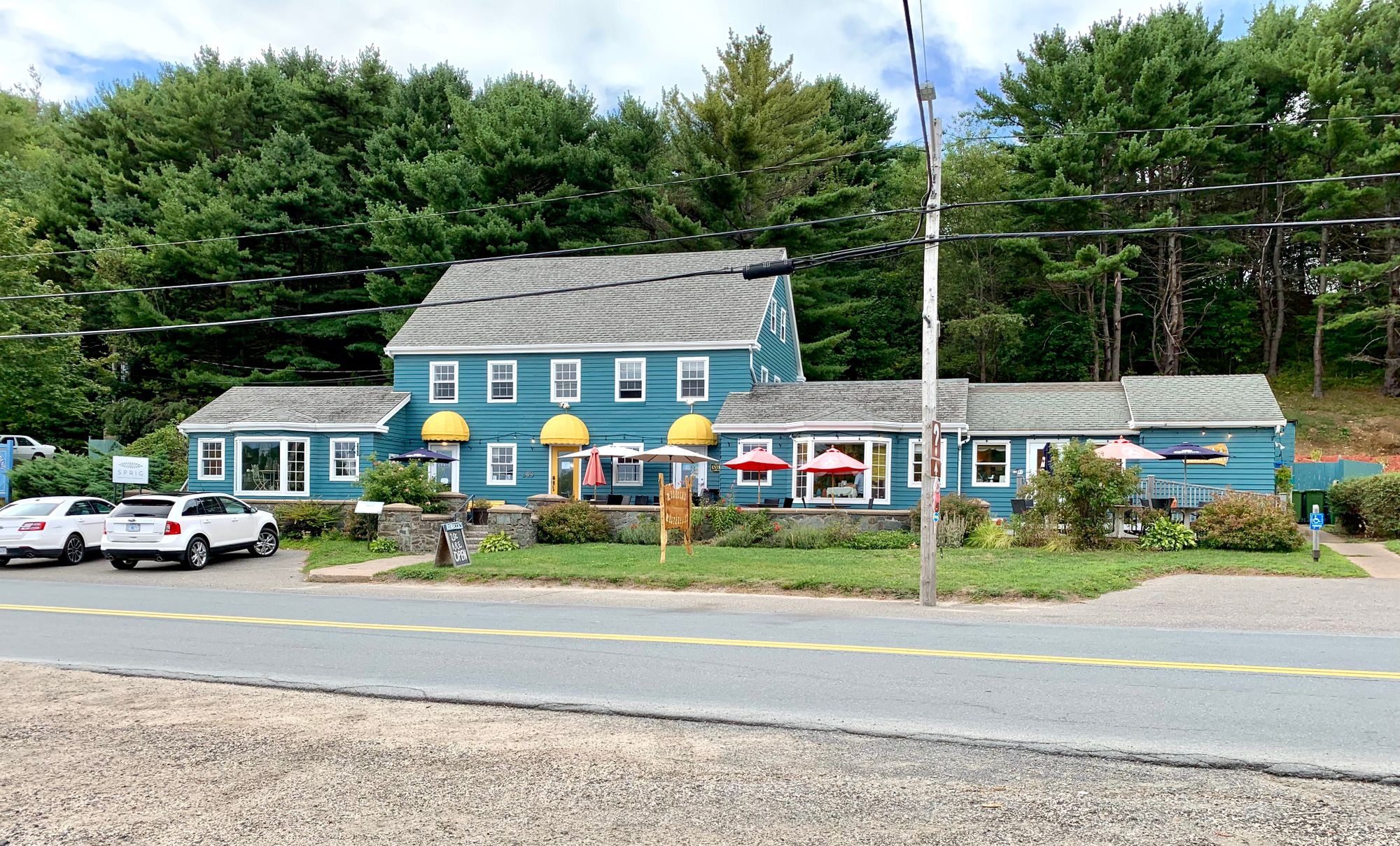
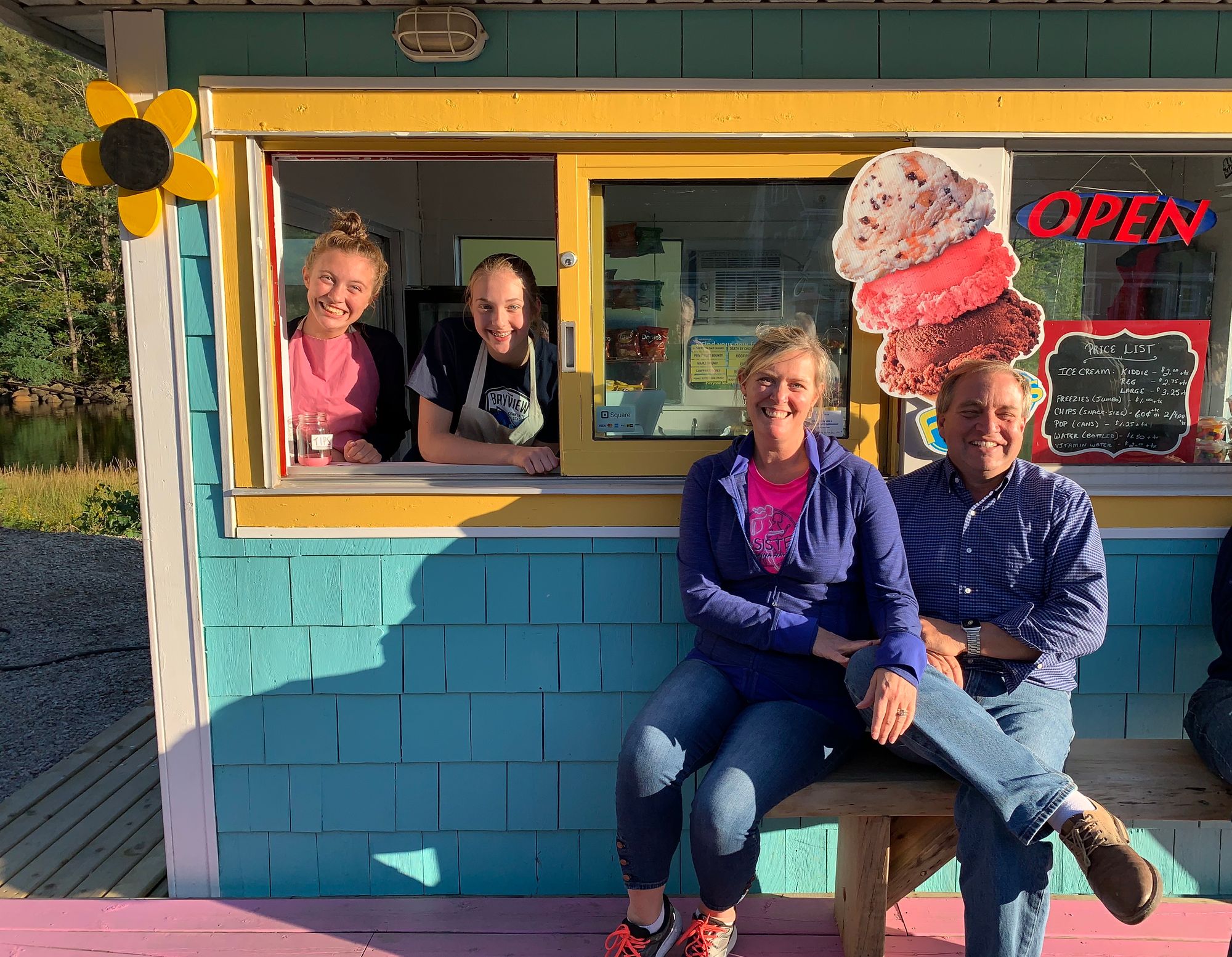

During the summer months you’ll also find a mobile ice cream stand, which surprisingly sparked wide controversy in the community. It was so controversial that in order to get it approved it had to be portable — so the family building it dug a hole, backed the "temporary building" into the hole and then covered it to keep it level with the ground.
There is another story that struck us as significant: One with which many towns all over Nova Scotia and New England are grappling. Namely, that the "main intersection" in the center of Mahone Bay is a roundabout that dominates that part of the community.
The places around that main intersection often house important institutions worth supporting by creating a major (and less car-oriented) destination. In the case of Mahone Bay, paving the way for a significant destination at this end of town could also help to create a link along the bay to the restaurants and ice cream stand around the bend. This would also have a ripple effect in that it could expand the link between Mahone Bay and the water.
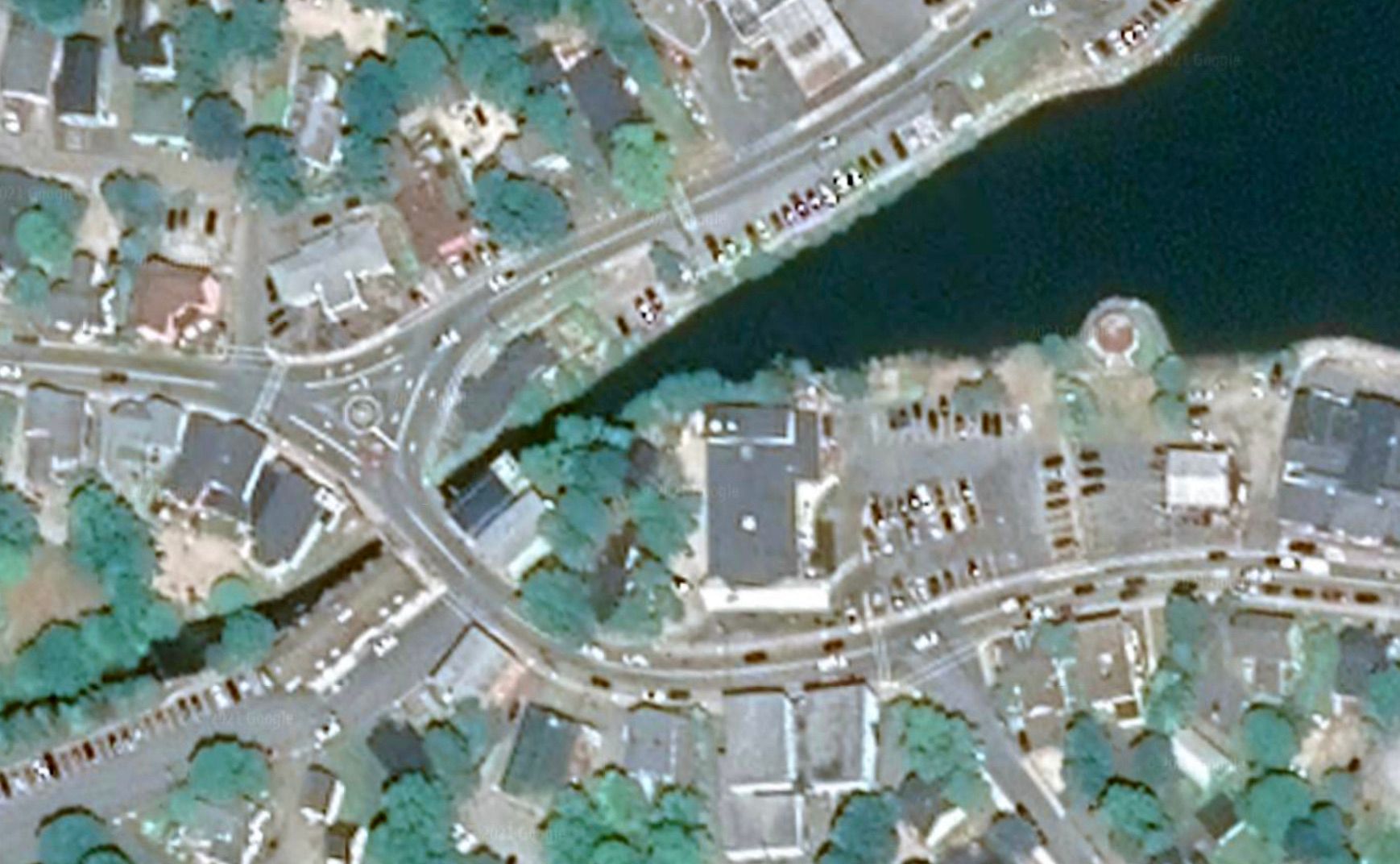
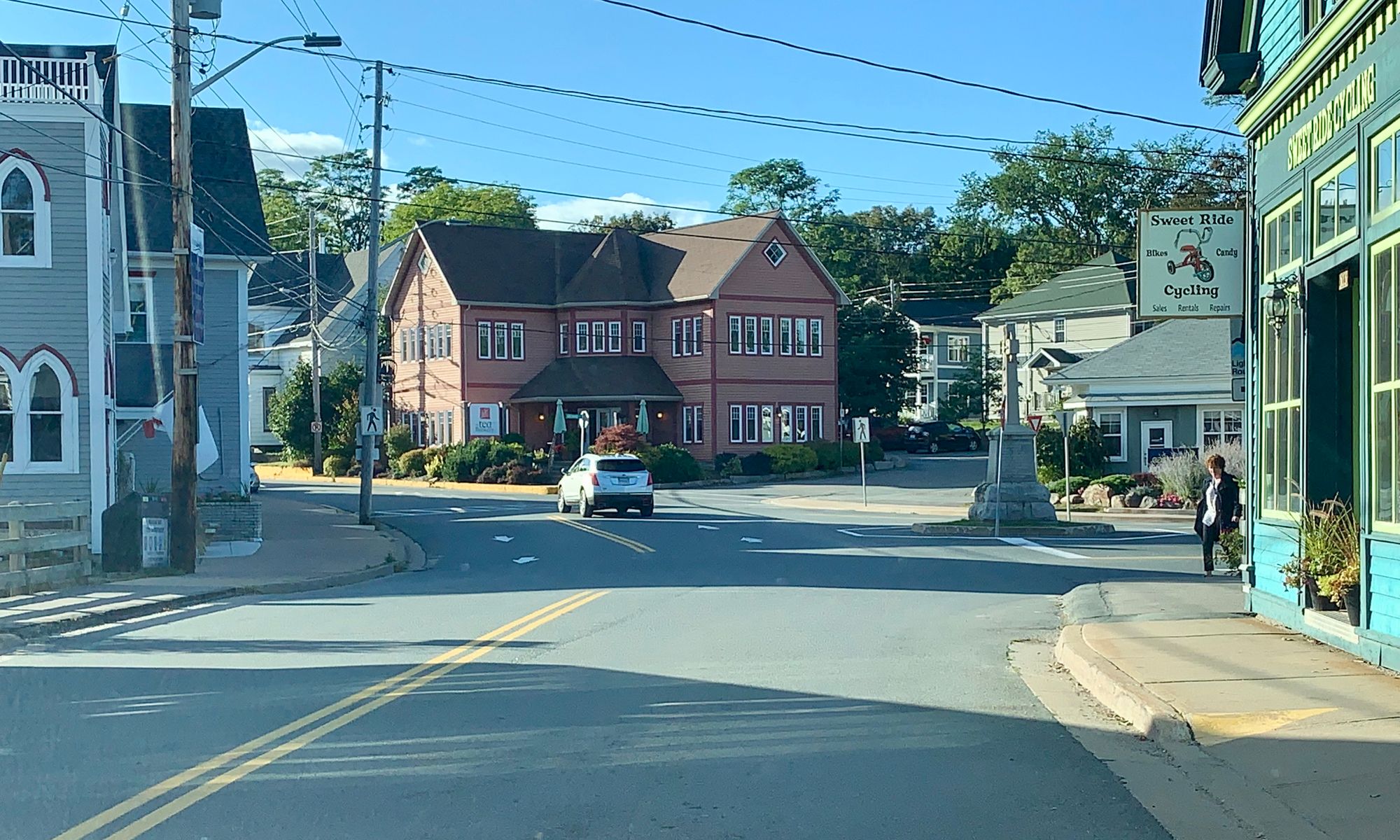
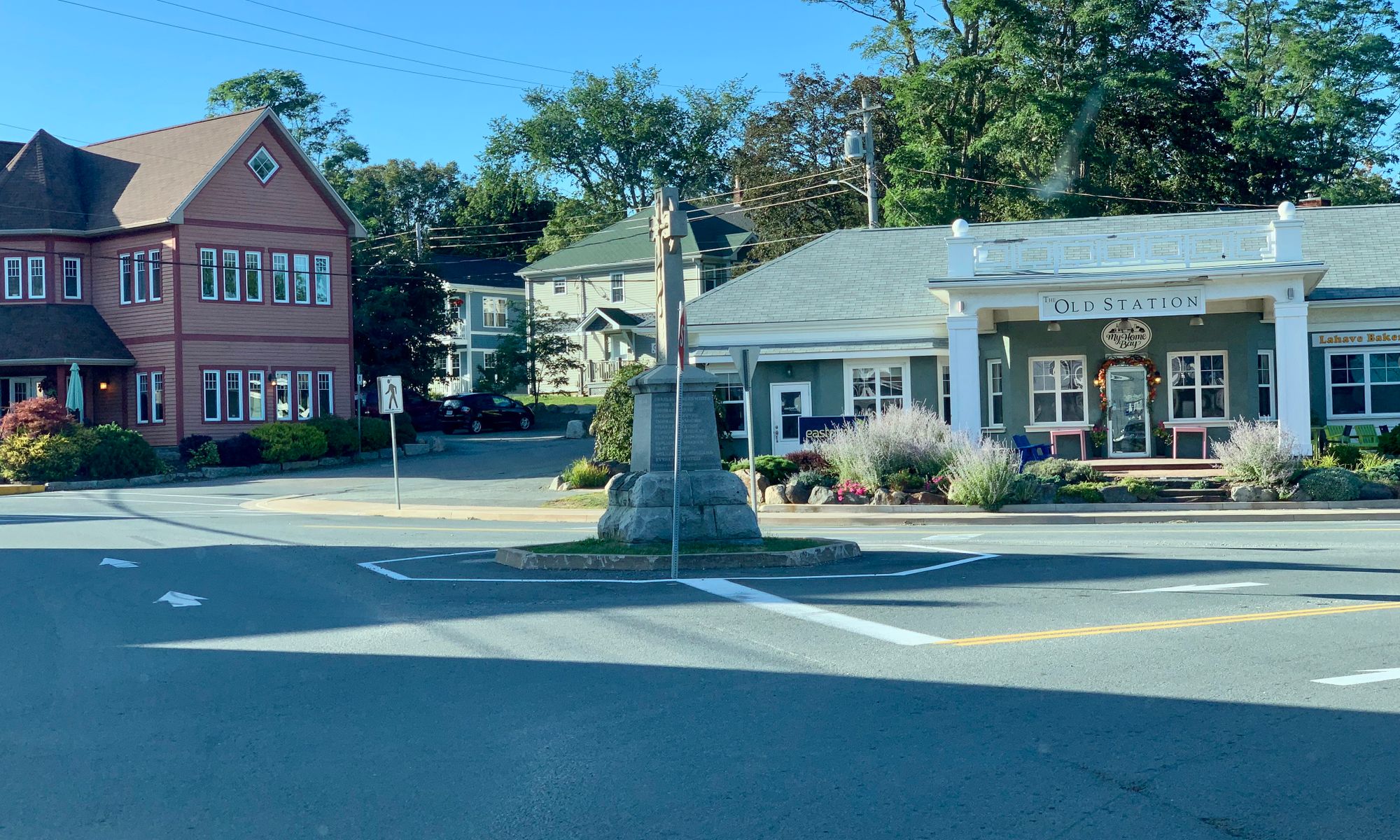
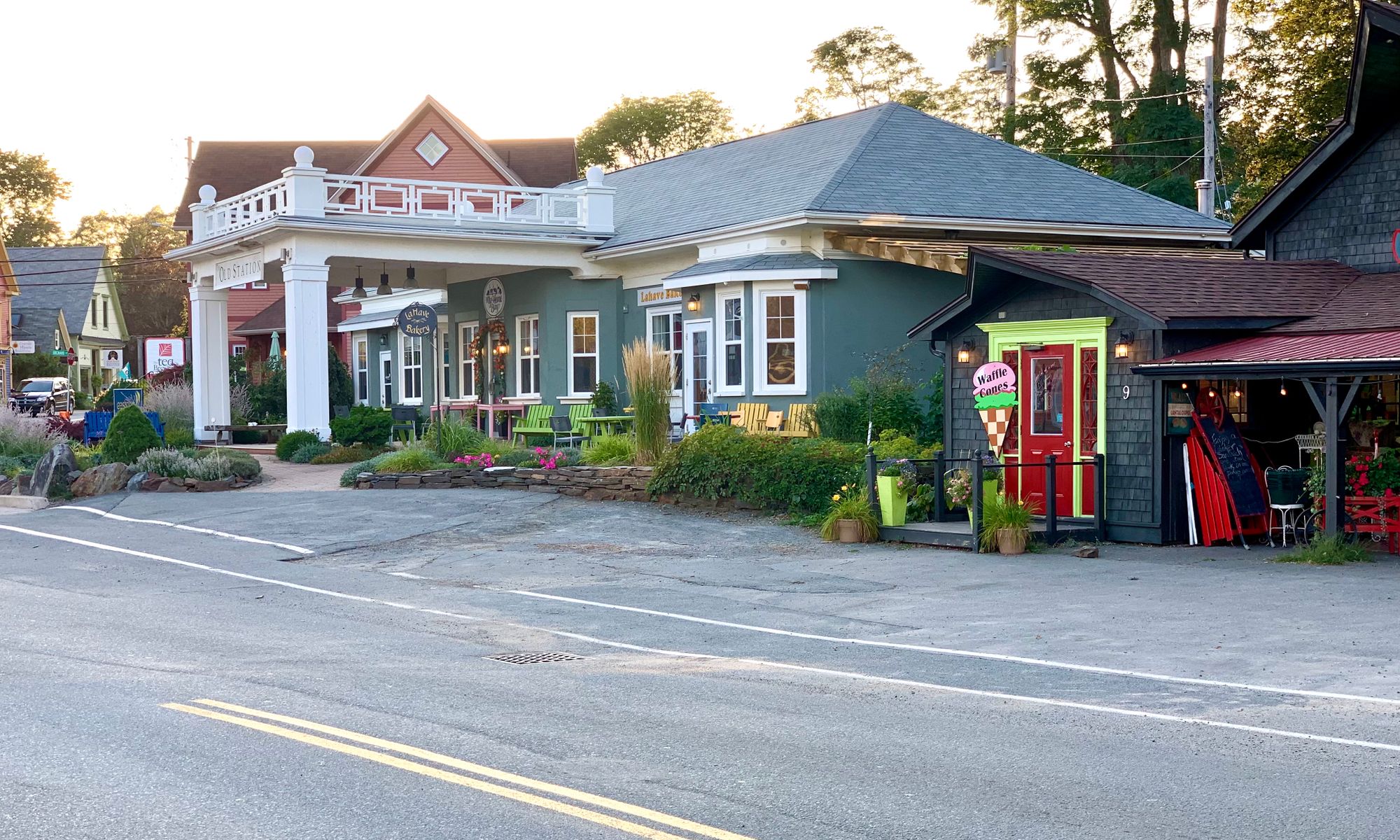
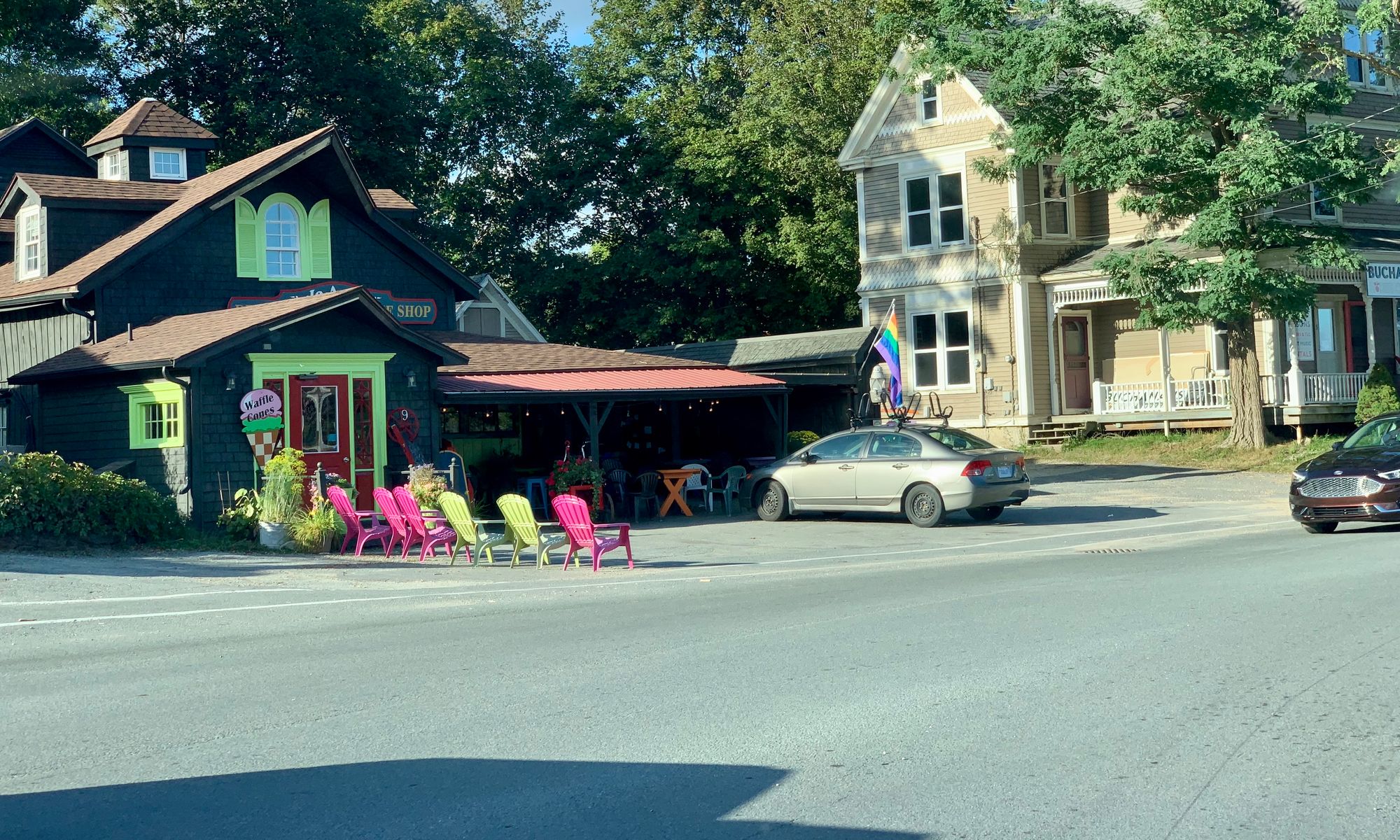
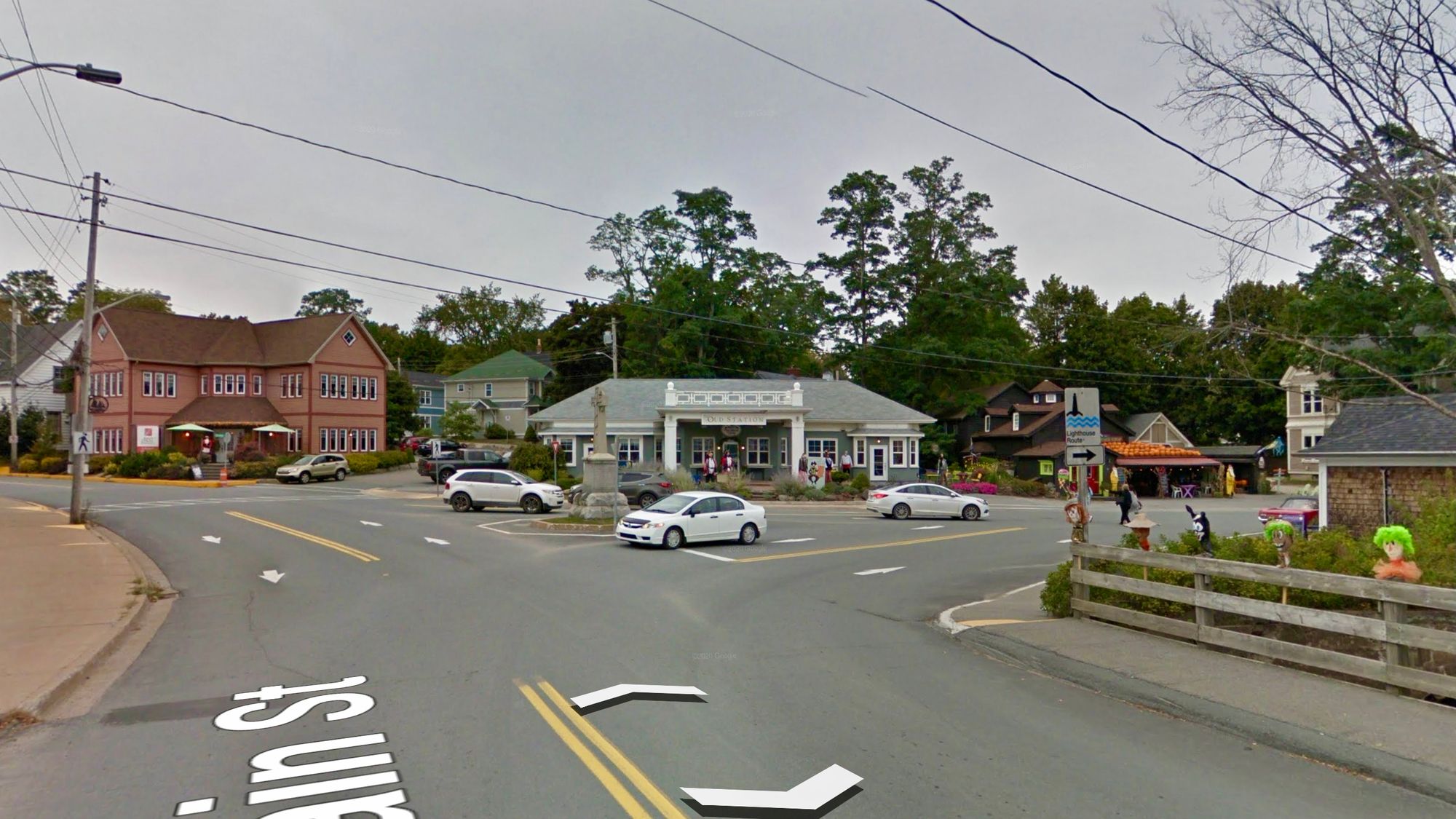
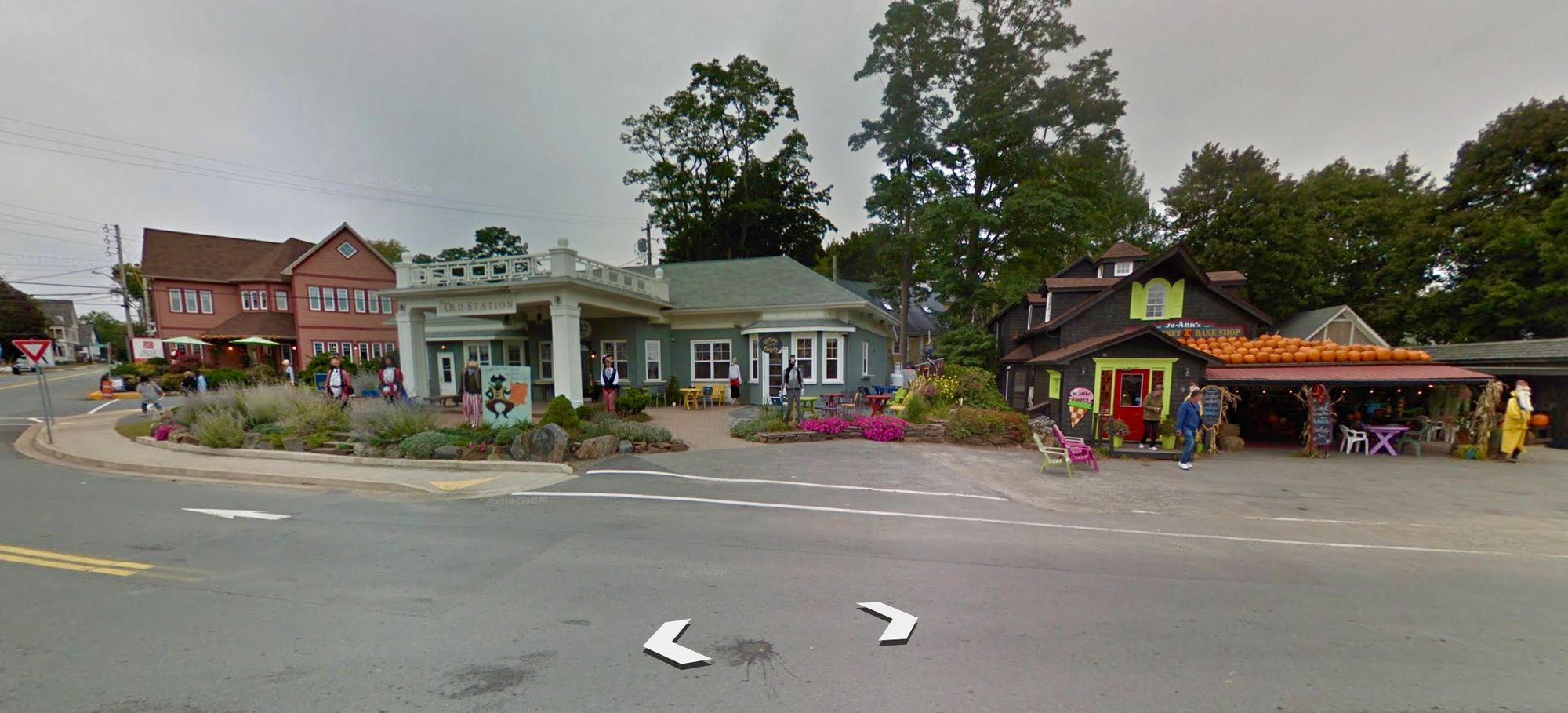
-

Opportunities: It would be dramatic to take these actions, and to make the center point of Mahone Bay into a square. First steps could include extending the uses on each corner and extending these widened areas along all three adjacent. By doing so, and (if possible) by adding a walkway, it could forge a better connection to nearby destinations — these small-scale improvements could be catalytic for the future of such a beautiful community.
Greenville, Maine
The center of Greenville, Maine is the main destination in the region. But the intersection is a major truck route. Luckily, we found it to be a shared space in terms of traffic. All the big trucks were very careful going through. They slowed down for everyone, waved and sometimes stopped to talk to their friends.
Opportunities: Despite the caveats above, safe walking conditions could be improved through some extensions of sidewalks in all directions at the intersection and some sort of indication of it being the center of town. Also, bringing the inside out of many of the buildings in the center could give it an identity, with activities "spilling out" to draw people in. The lakefront could also be improved for walking. Overall, Greenville is already a special place, but a little work on the edges could go a long way.

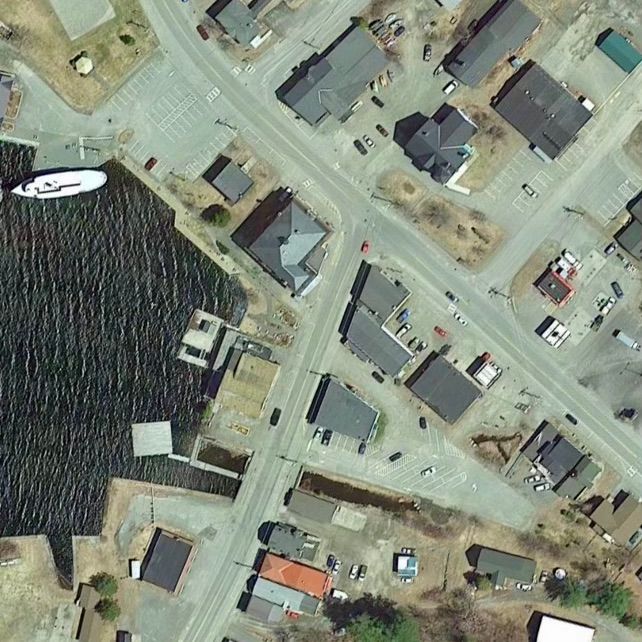
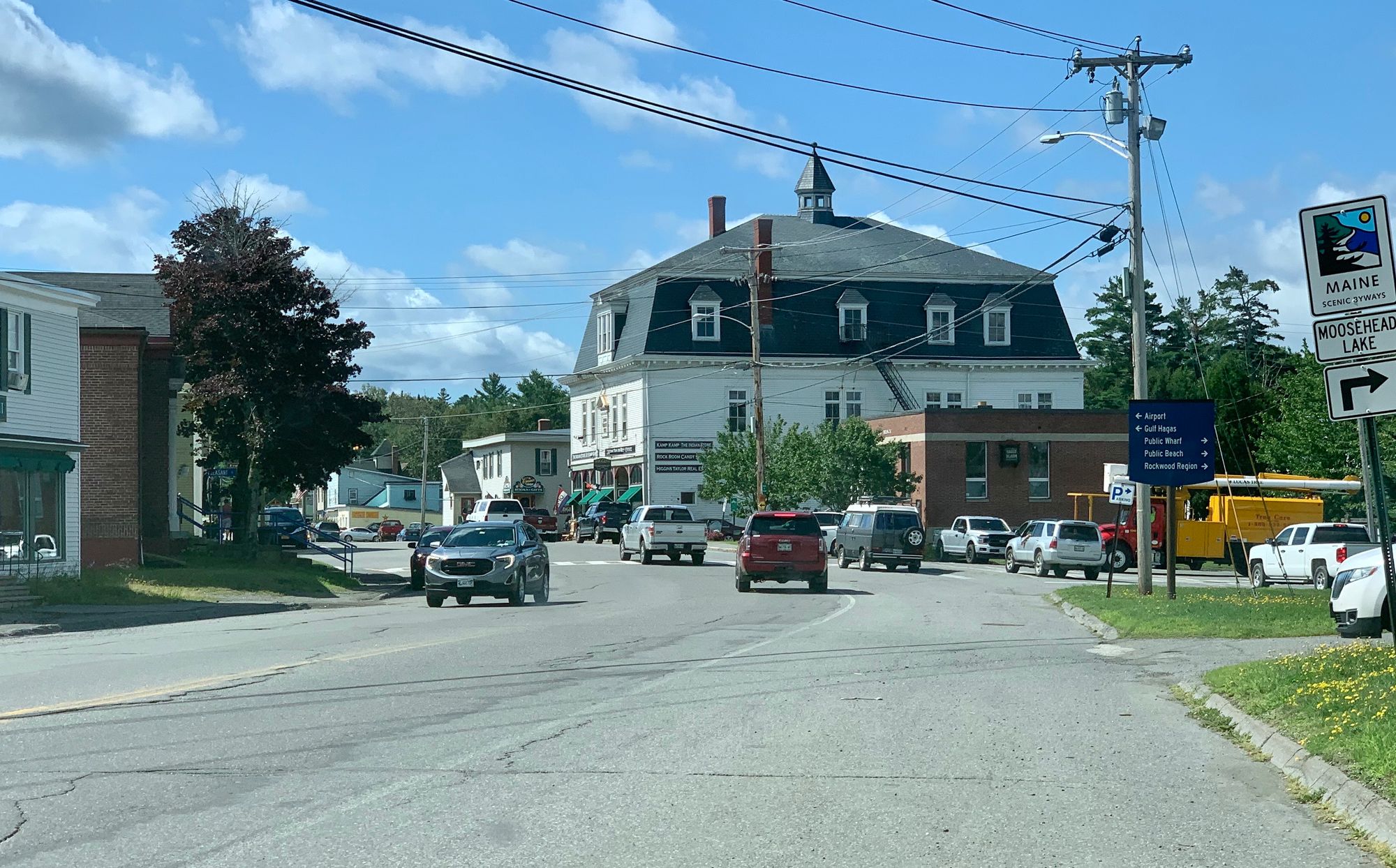
The main intersection in Greenville is also the center of town.
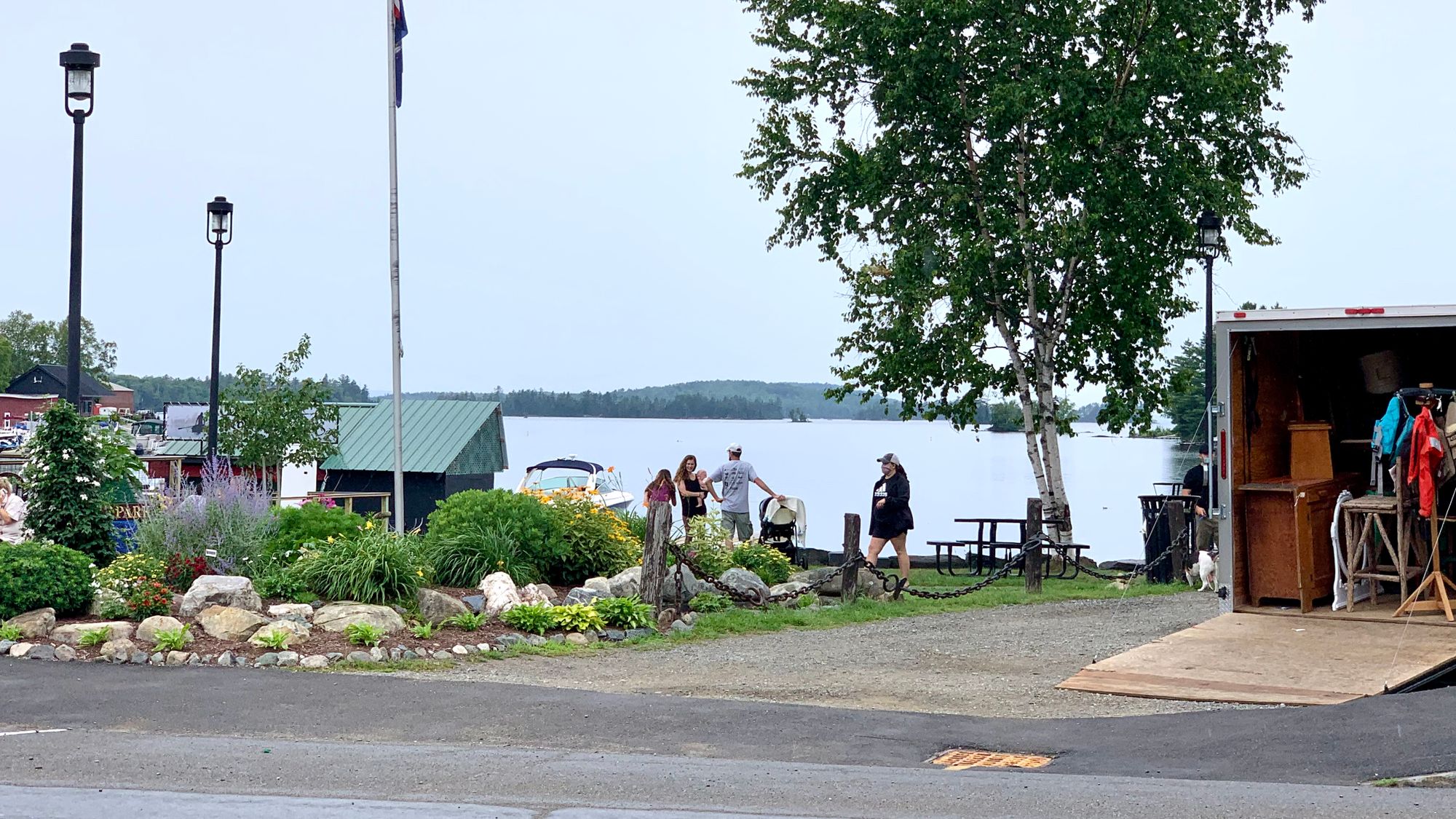

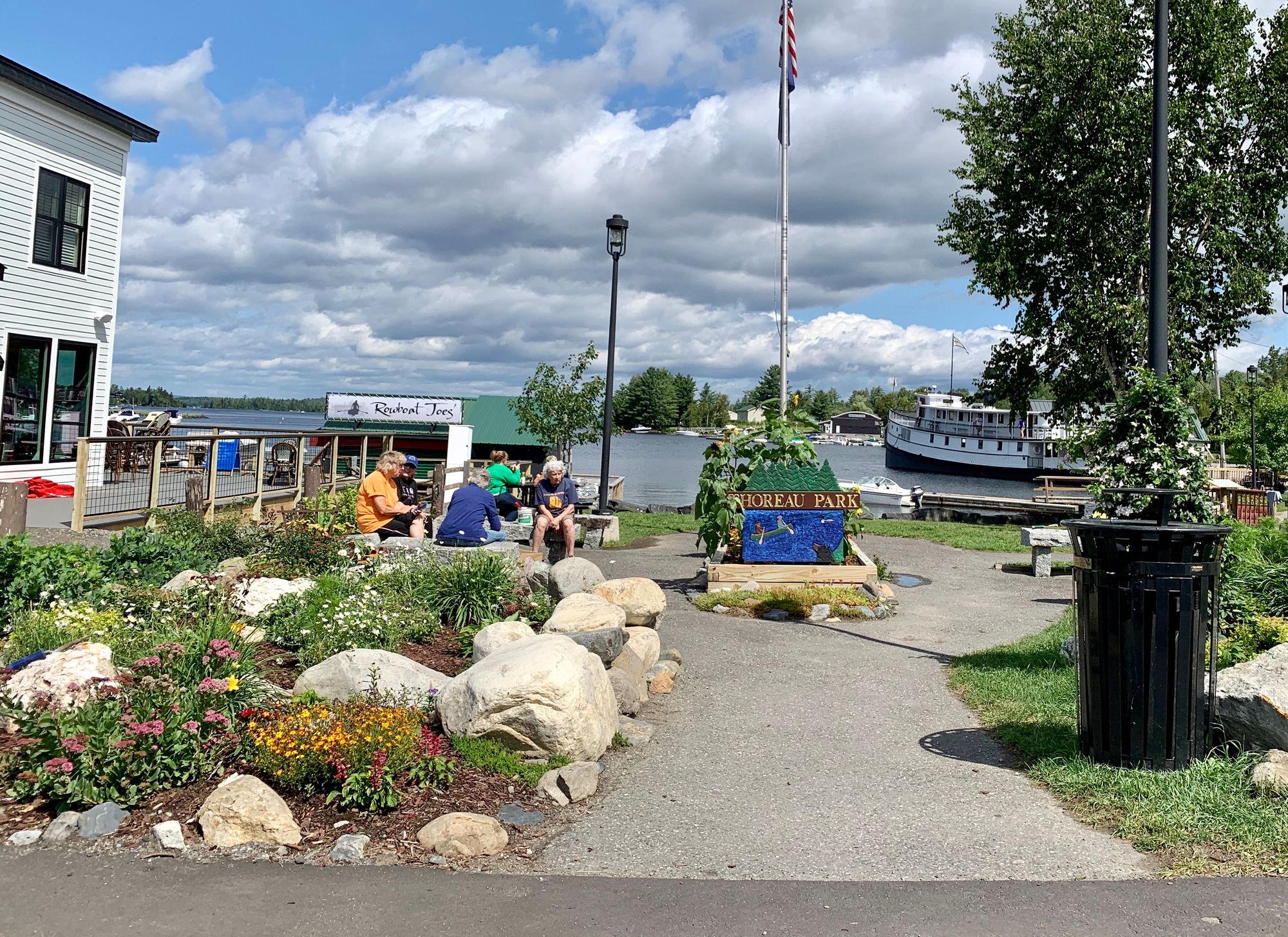


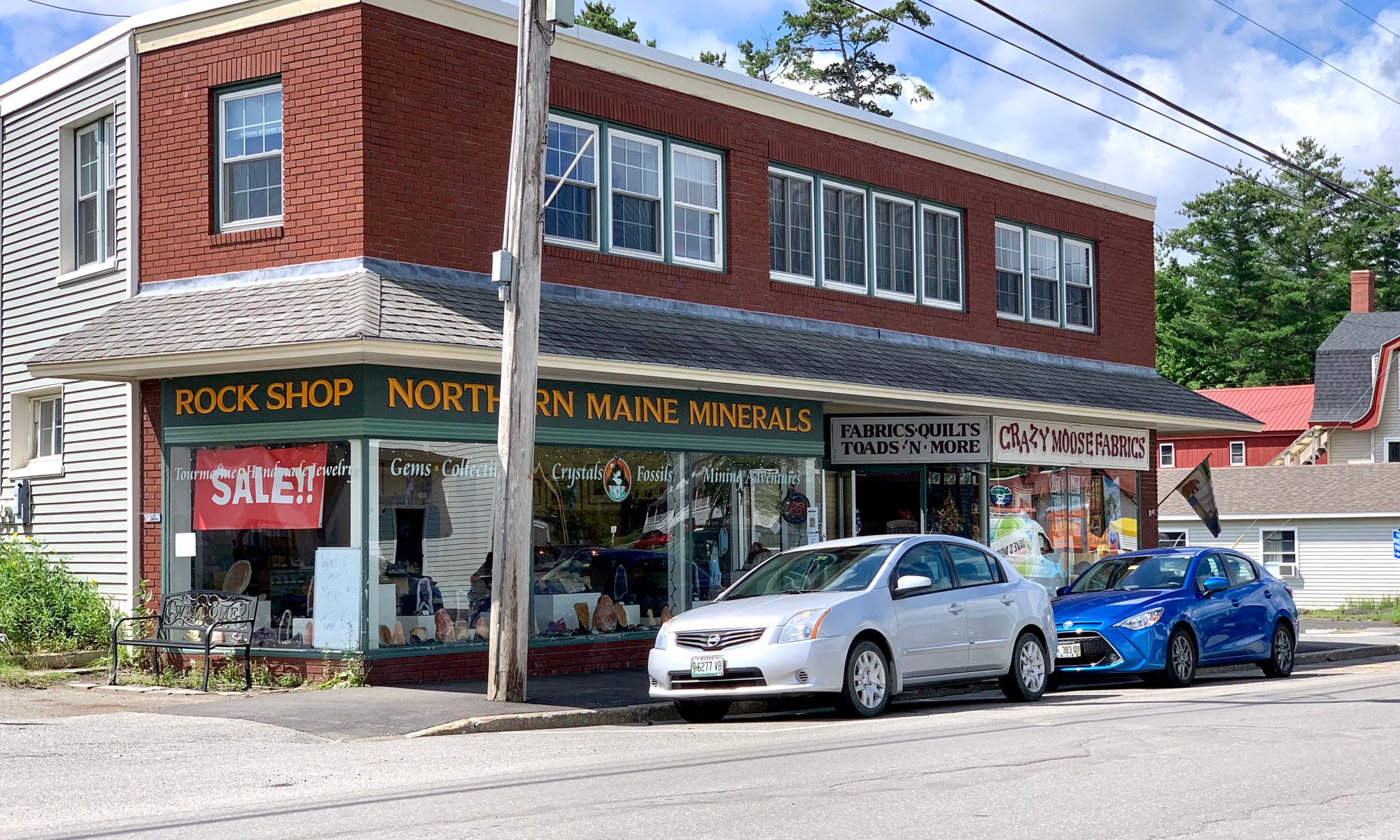
Crerating the center could be a signal to everyone that Greenville is alive and well.
Essex, Connecticut
There are some very impressive qualities in Essex, with an historic inn, a small park leading down to the water, and a terrific museum at the end of the Connecticut River, but the main drawback is a wide road with barely walkable sidewalks.


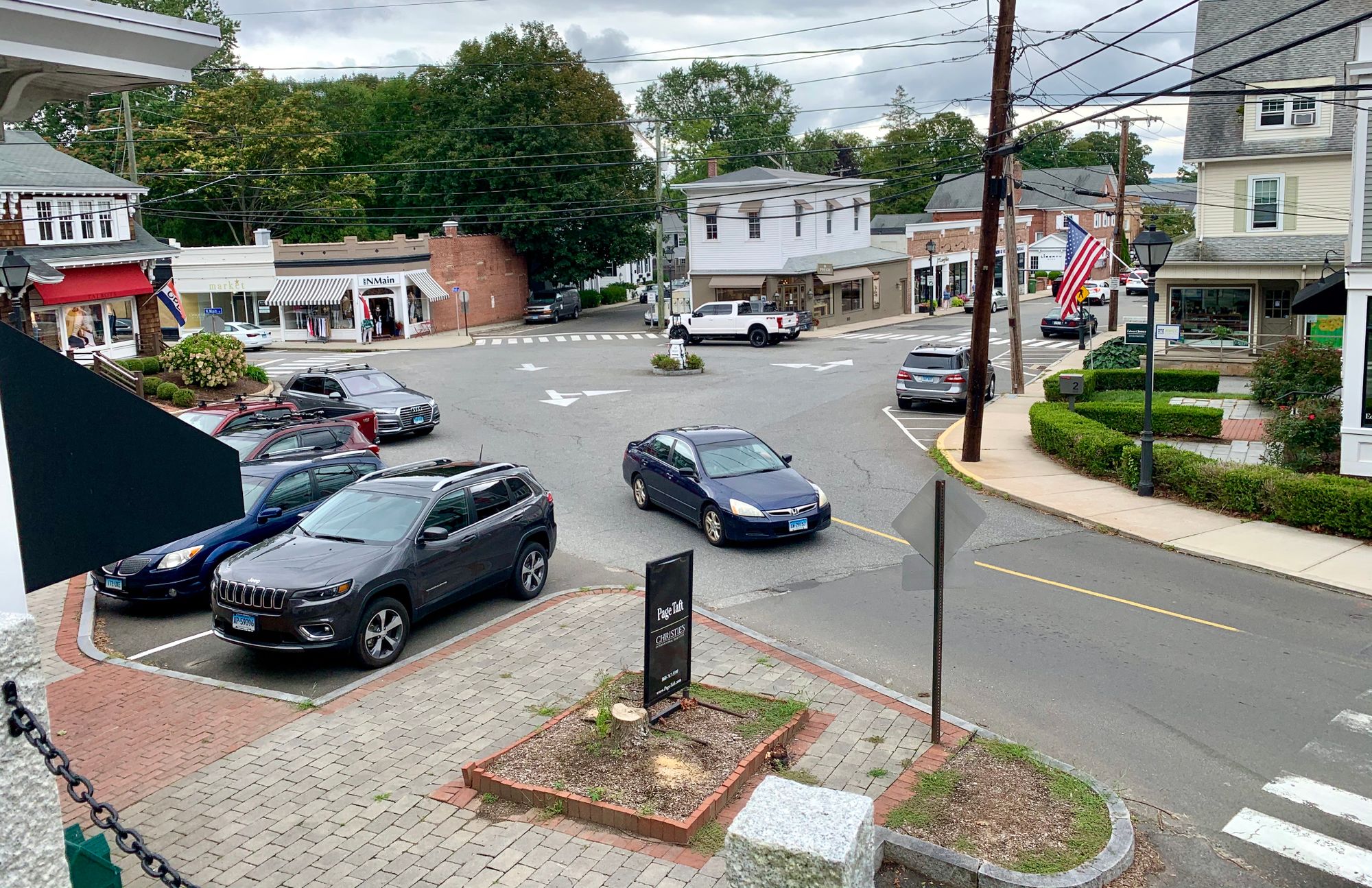



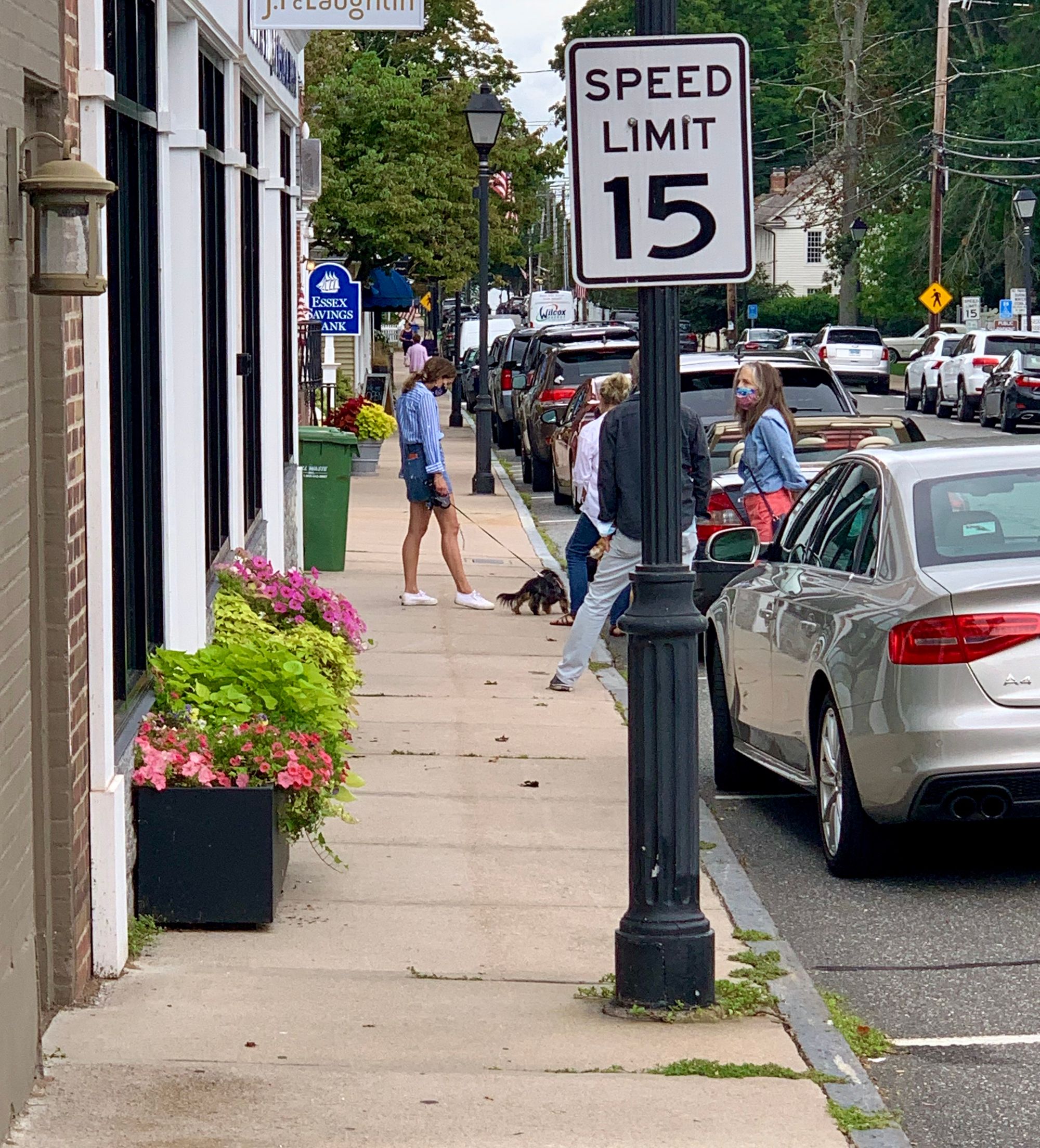

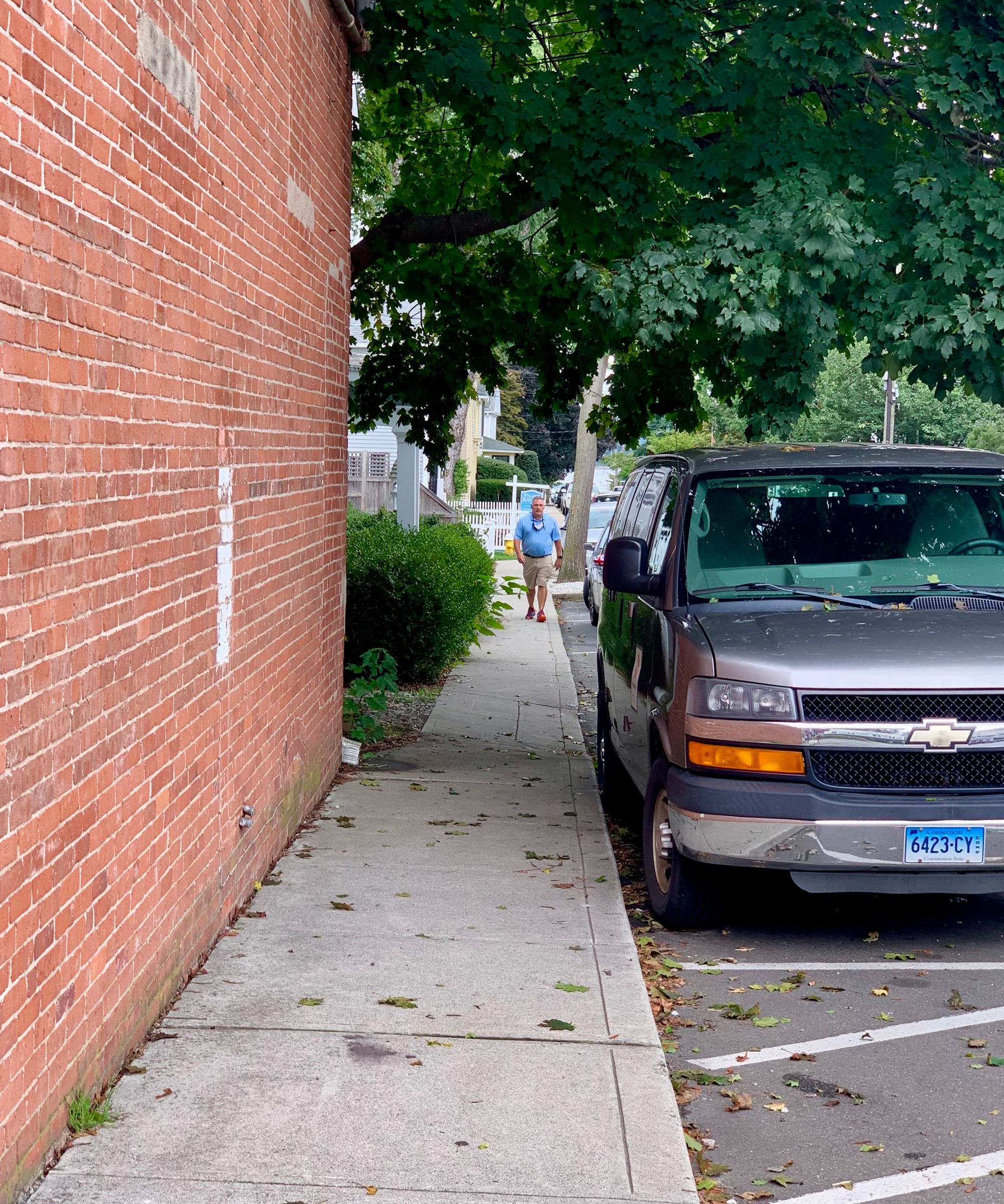
The entranceway to Essex's Downtown is an enormous roundabout with very little going on to attract anyone except a few parking spaces and a few stores, one of which is nearly made invisible by too much planting.

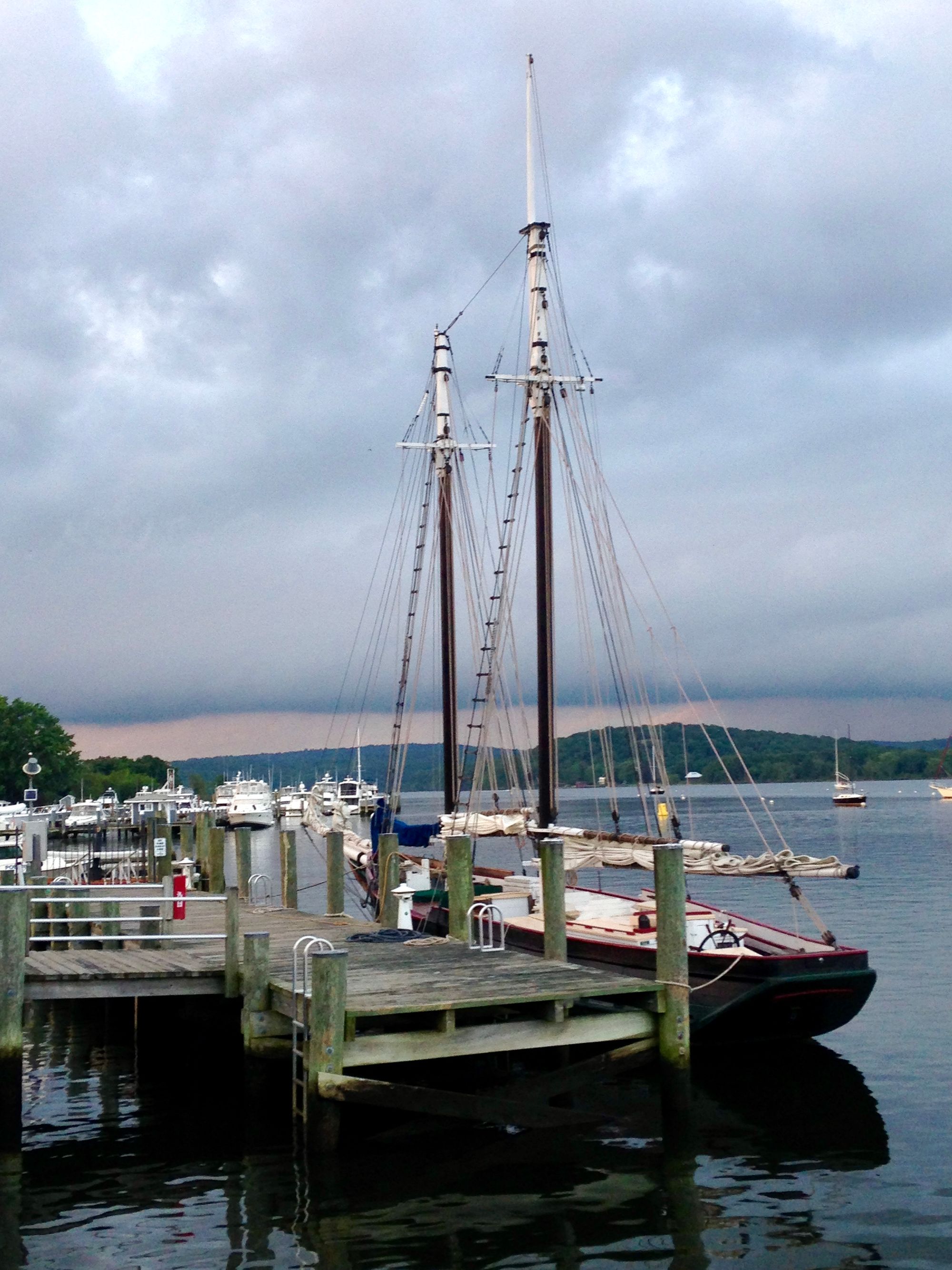




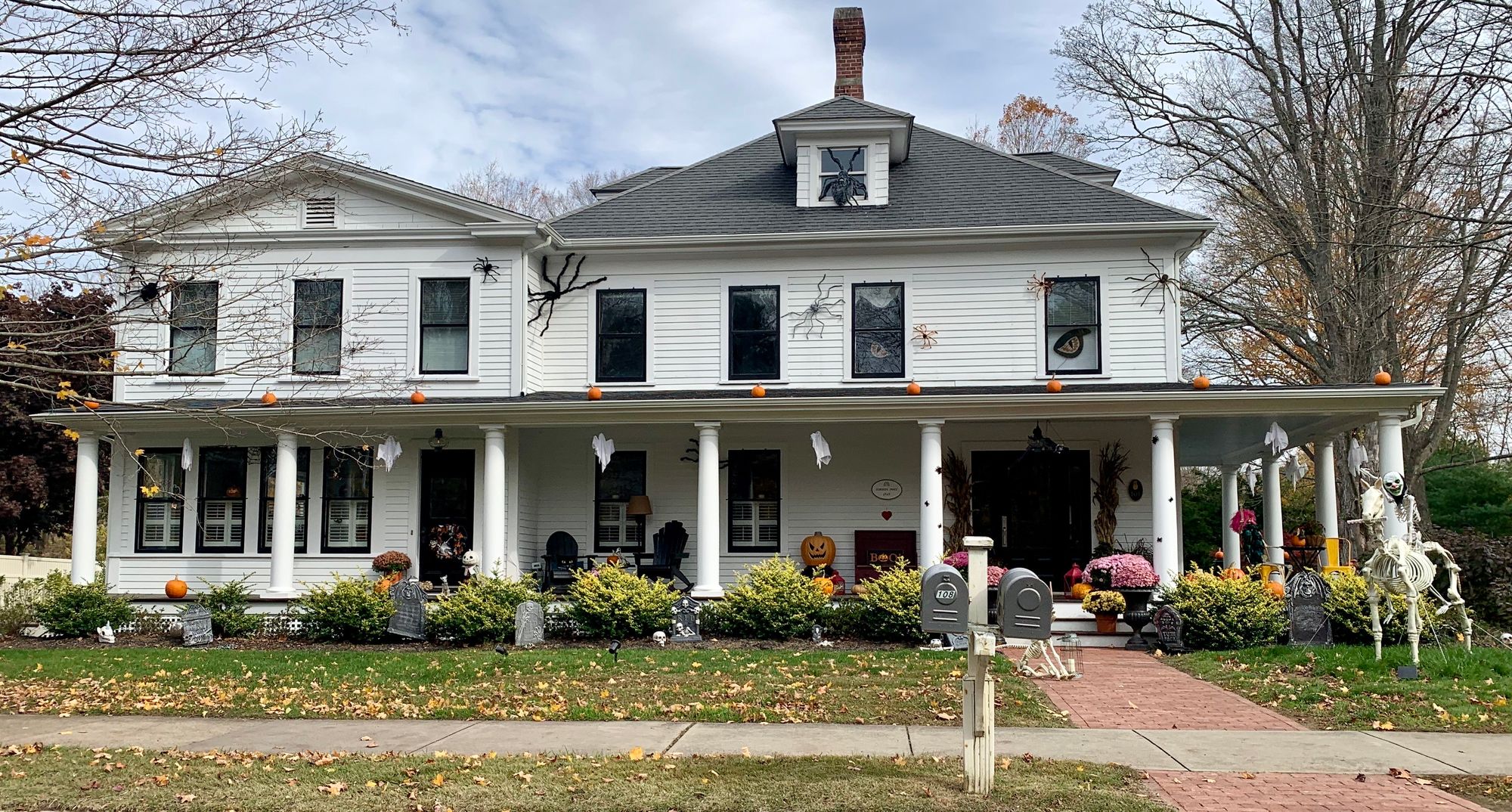


Opportunities: The entrance to Essex could, with a bit of work, become the gateway plaza or square of the town. The sidewalks are some of the most narrow of any small town we have visited and the attractions along Main Street, including most storefronts, are internally focused. Widening the sidewalks could do wonders, and bringing restaurants to have expanded outdoor presence (or creating cafés) could add the social life that the downtown area of this community needs.
Madison, Connecticut
This is a very beautiful and well-visited town along the Connecticut coastline. But it is also a prime example of a place where traffic engineering profession has done real damage: Widening Route 1 has created some of the largest intersections we saw during our tour. The Main Street is also one of the widest in Connecticut. The result is that the short stretch is just a small part of what could be considered the downtown.
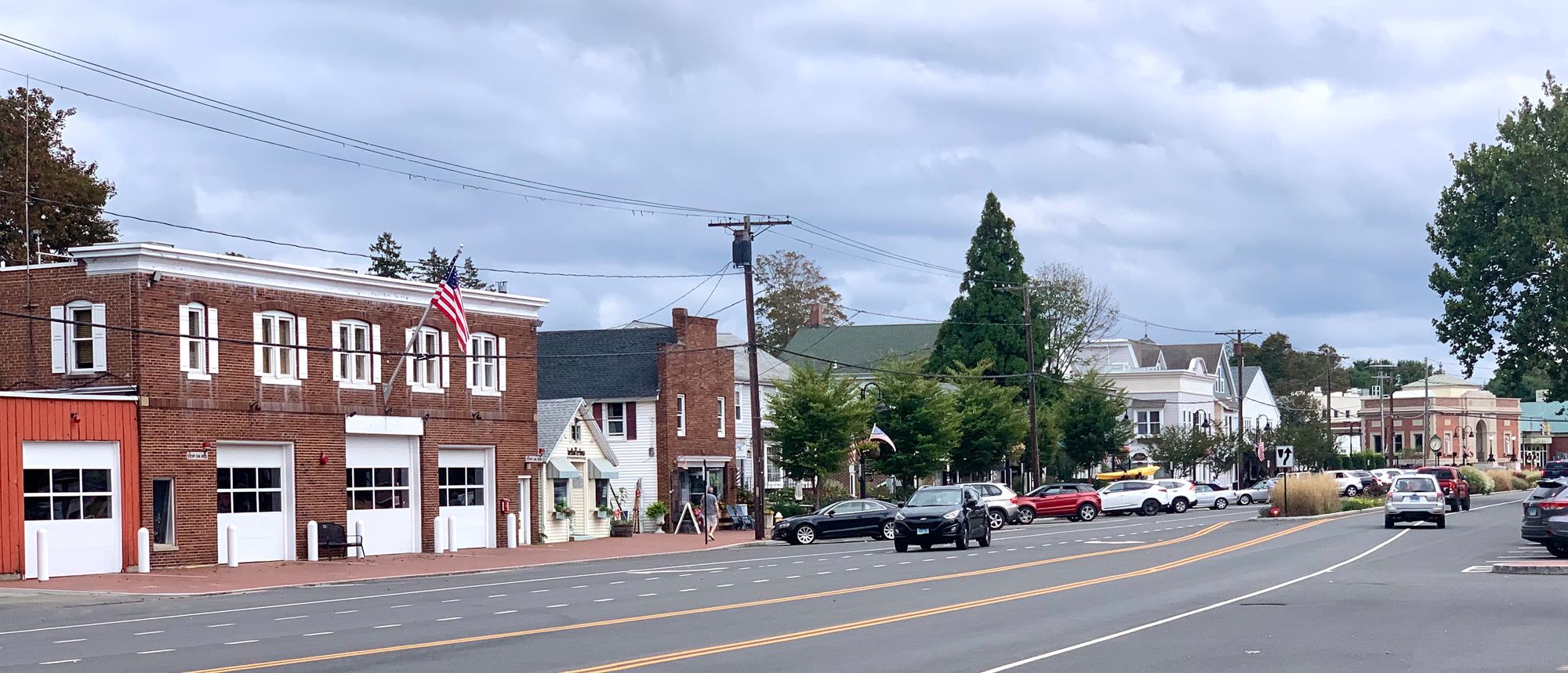

The small core of the downtown has some special destinations, such as a popular book store, a movie theater, and a number of restaurants. But all of these destinations are struggling with the fact that this area is a small island in a sea of roads.

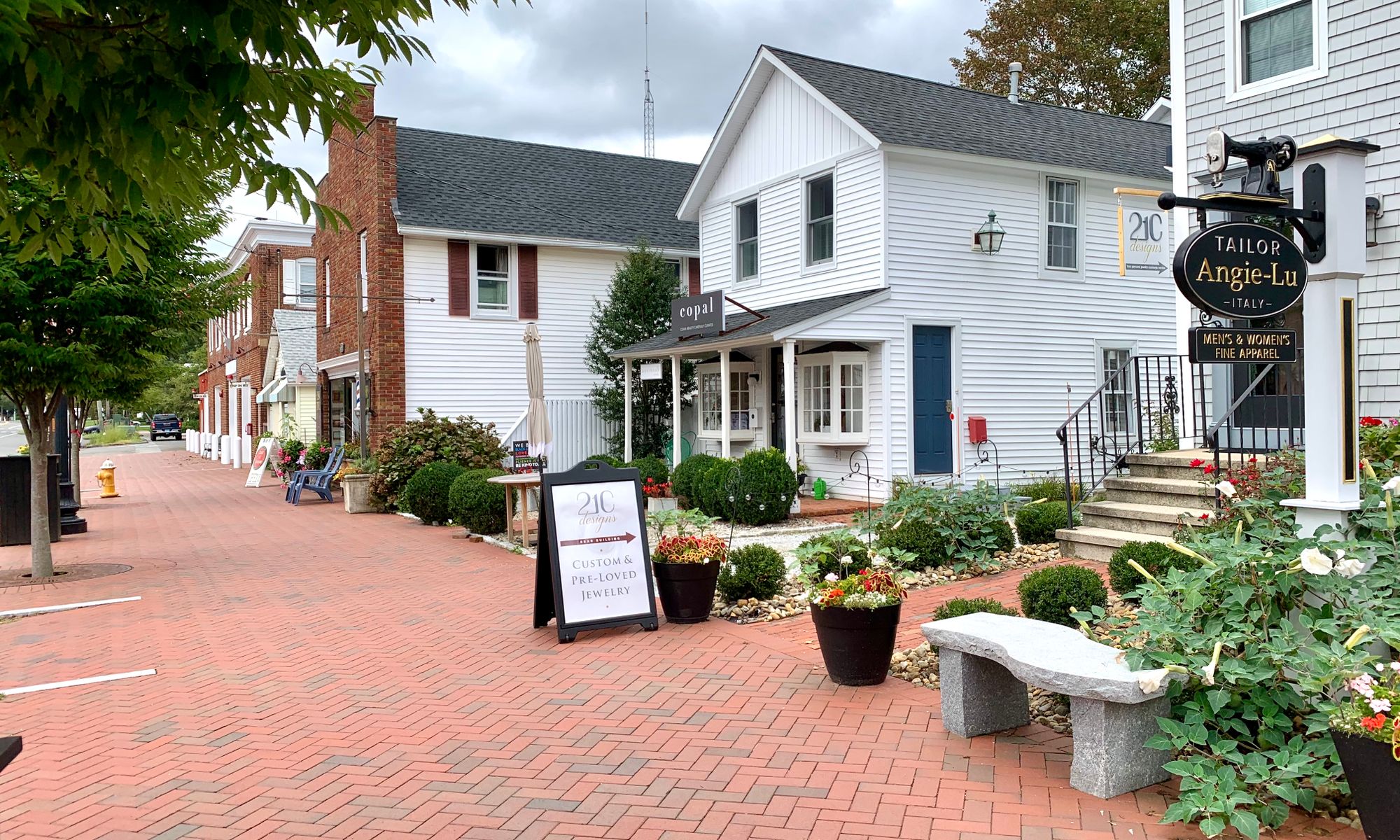





The Green is a long distance from the center and the overwhelming intersections send the message that the area is for vehicles only... and that no children or elderly people are welcome.

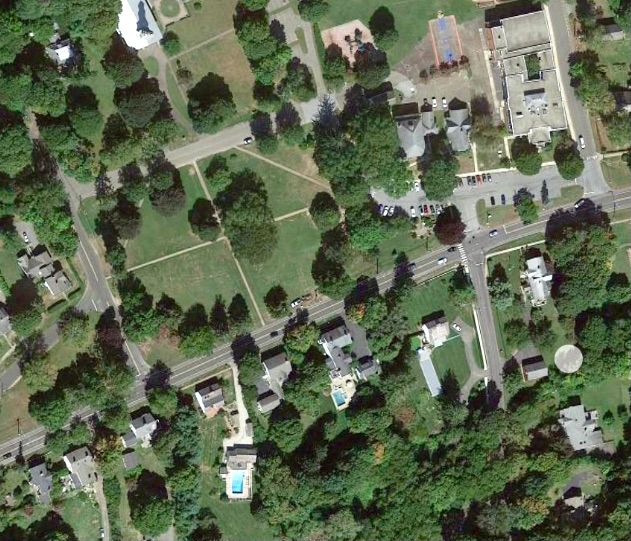

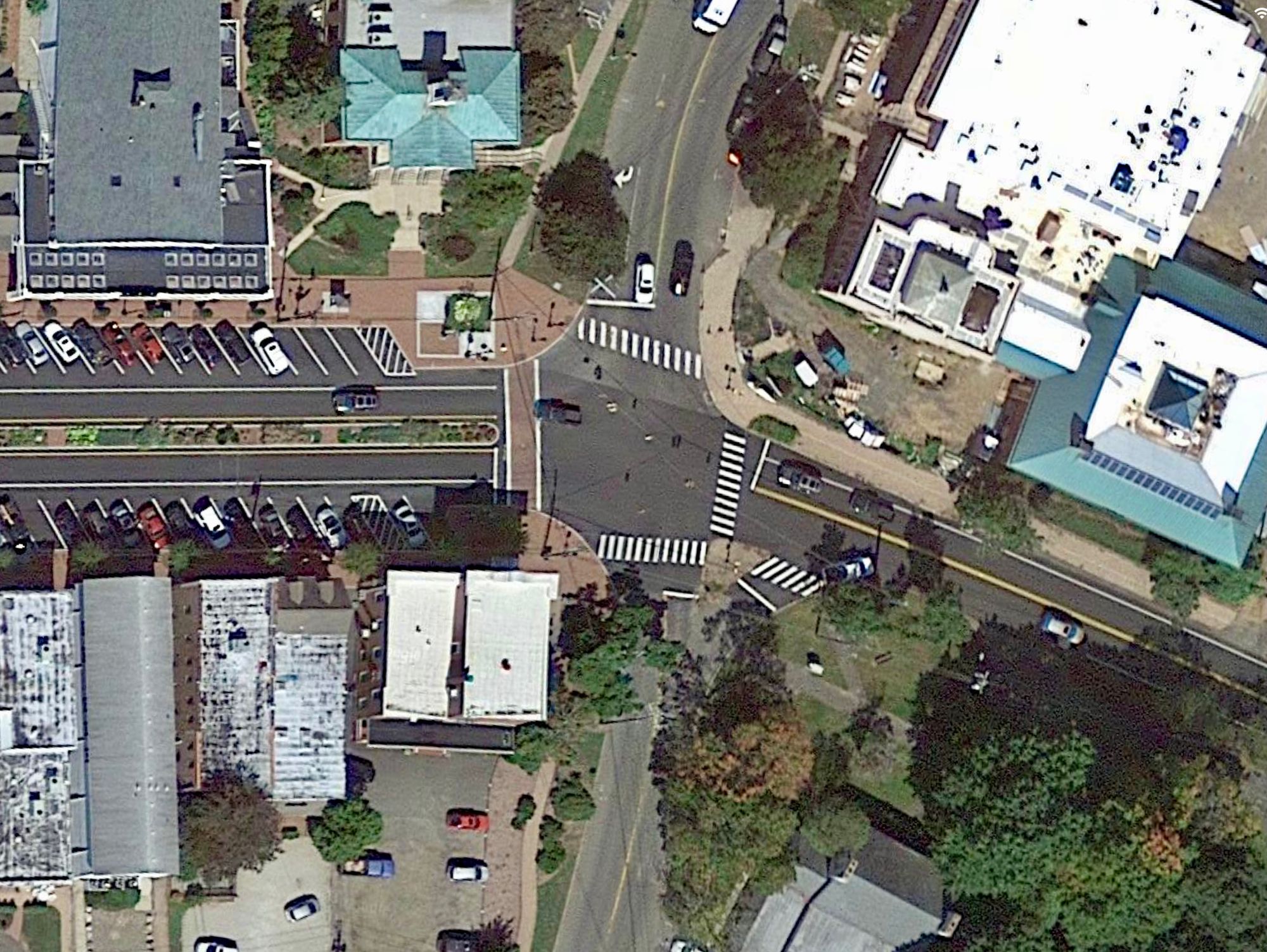

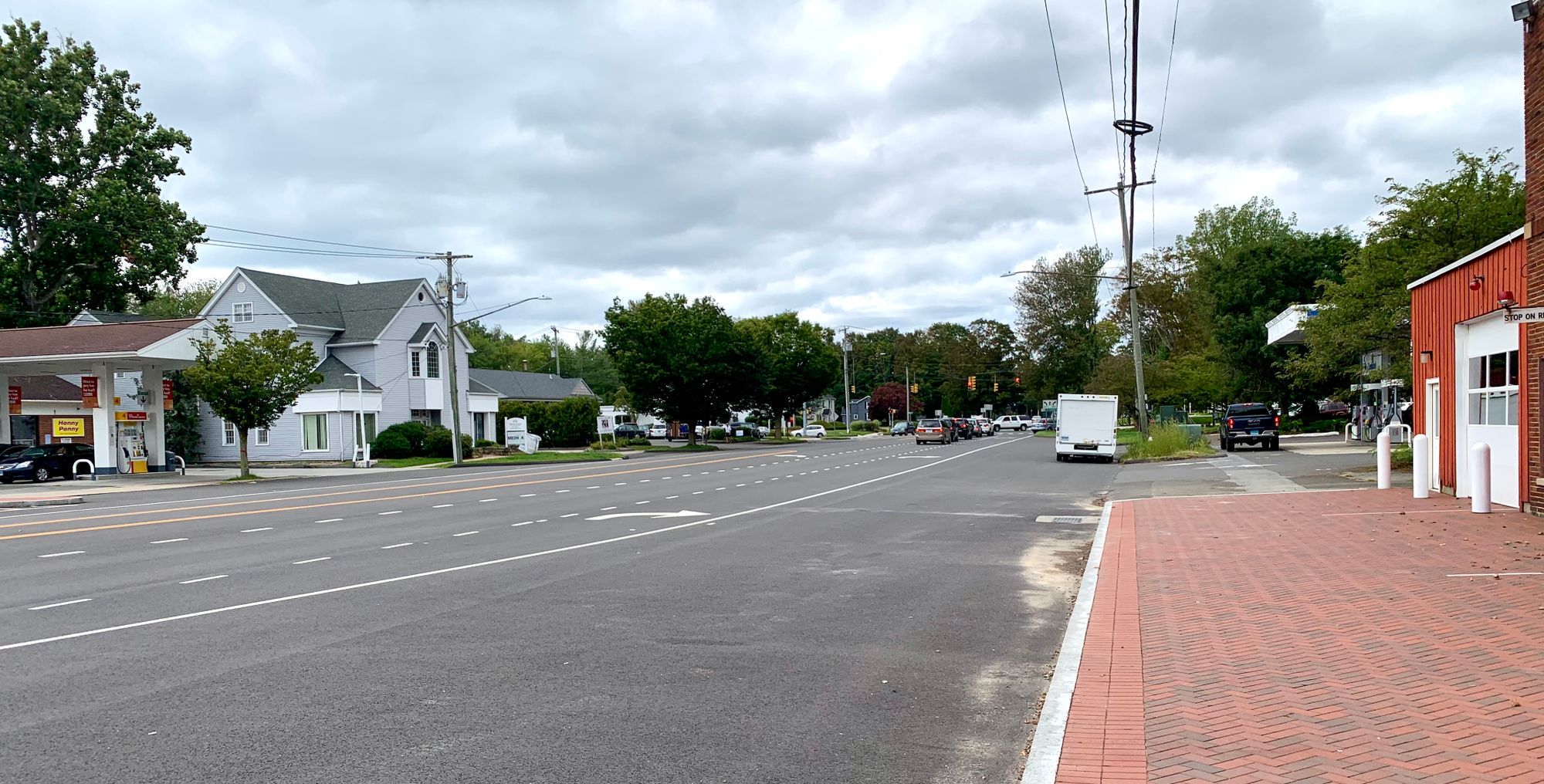


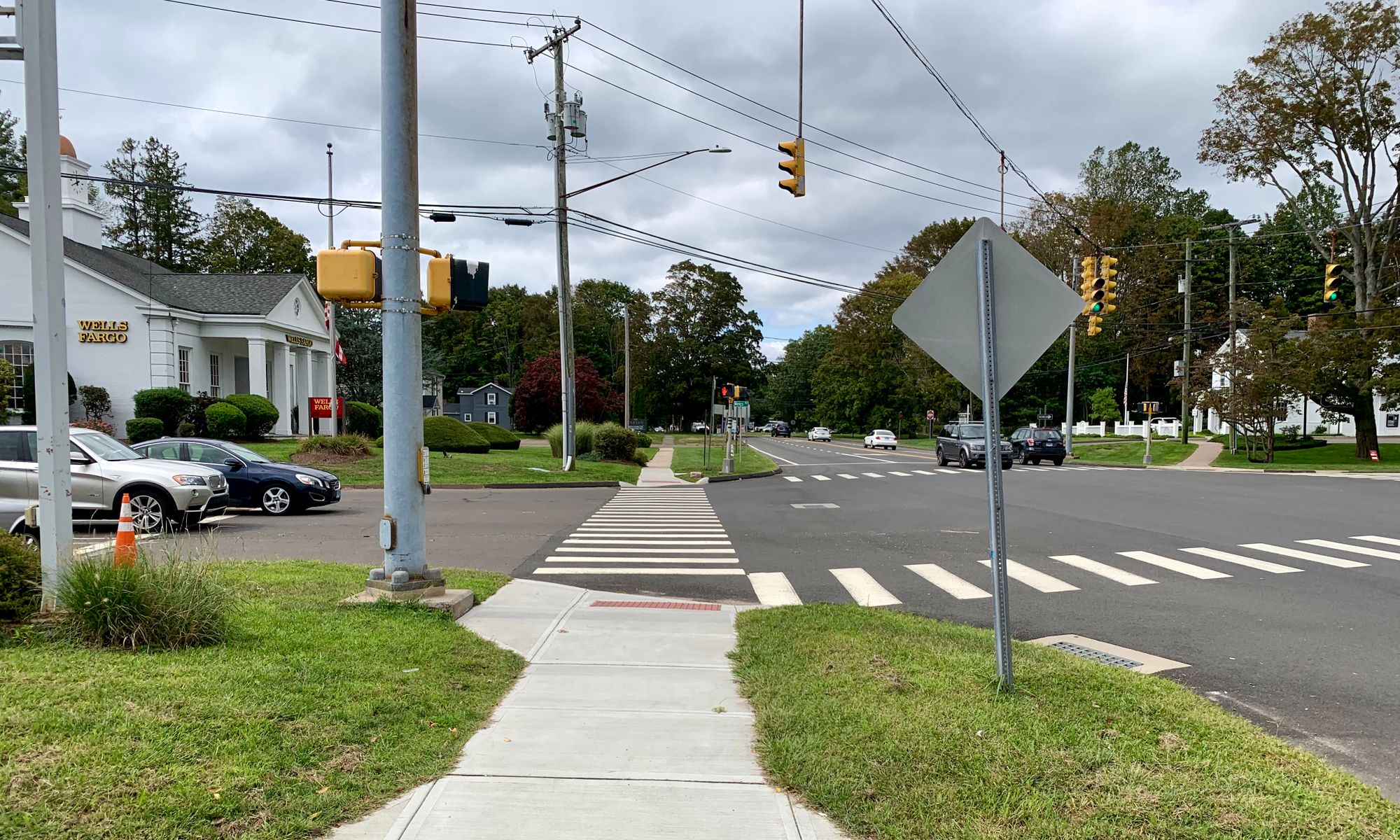

Opportunities: More than any other we visited, this town is dominated by an oversized Main Street, along with a massive intersection and prioritization of landscaping over social activity outside of major institutions. The latter is also in part because the main entranceways are accessible only from the parking lots in the rear of the buildings. So what to do next? Turn the insides of those buildings out, creating plazas in front, narrow the intersections of local roads to provide gathering spaces and a perceived entranceway into the town. This may even create an opportunity to have a promenade from the Village Green to the Library, shopping along the way.
Takeaways: Restoring Social Life to Small Towns Starts with Sidewalks and Public Spaces
The social life of communities happens most frequently and joyfully in business districts, squares, and other welcoming spots that are connected to create a whole. And crucial to small towns reviving their social life is the acknowledgment that the best gathering places "triangulate" a number of activities—strolling, shopping, people watching, finding food or dessert, or just hanging out. These things happening together in one spot is powerful, creating a space where everybody wants to be.
Getting Past the Focus on Cars
We must move past the trend of auto-dominated and widened streets. This inordinate focus on car traffic crowds out opportunities for social life: Just think of all the space we can reclaim for sidewalks and for activities that are fun and lively!

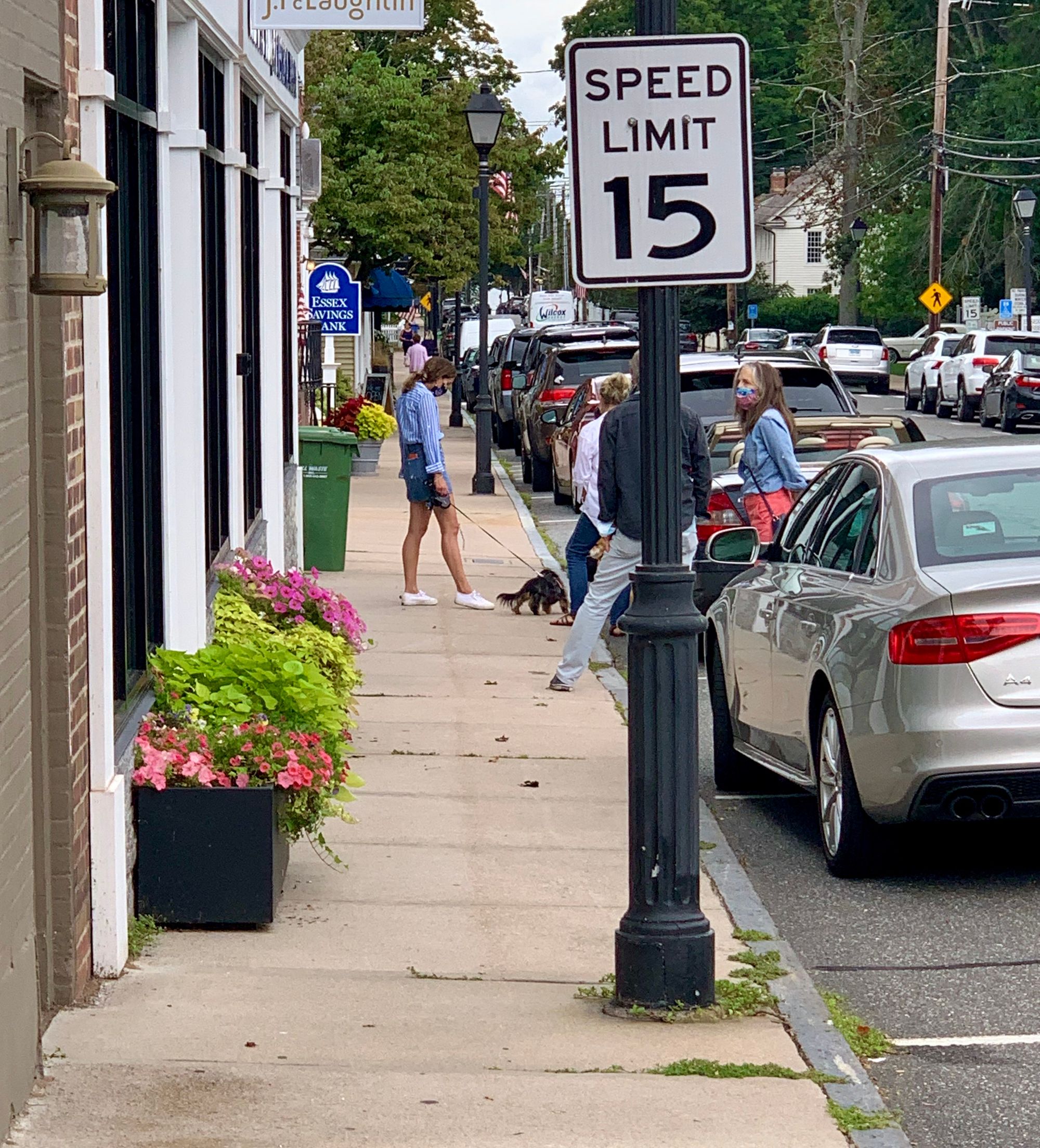
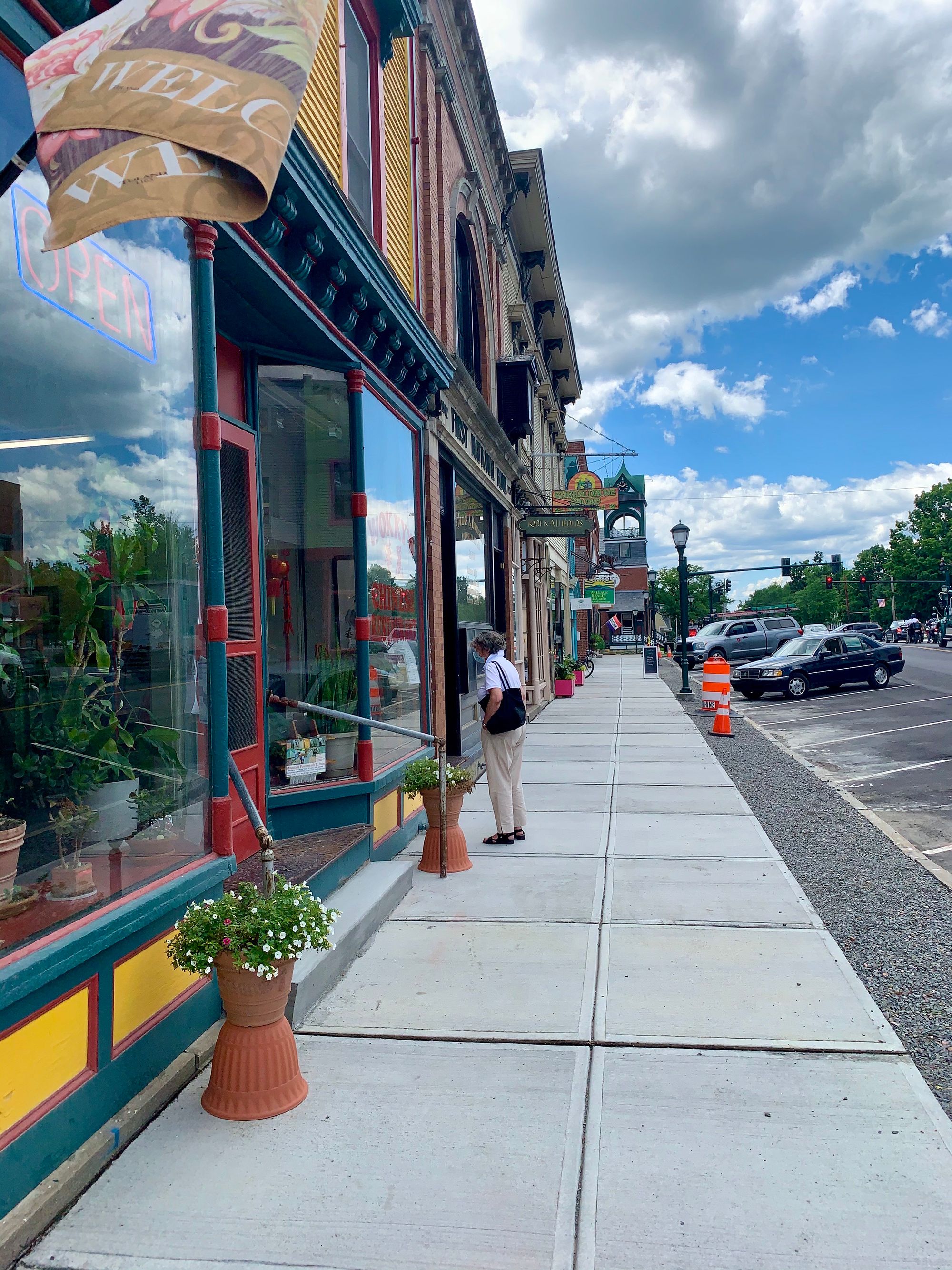
Narrow sidewalks in Belfast, Maine, Guilford, Connecticut, and Bristol, Vermont

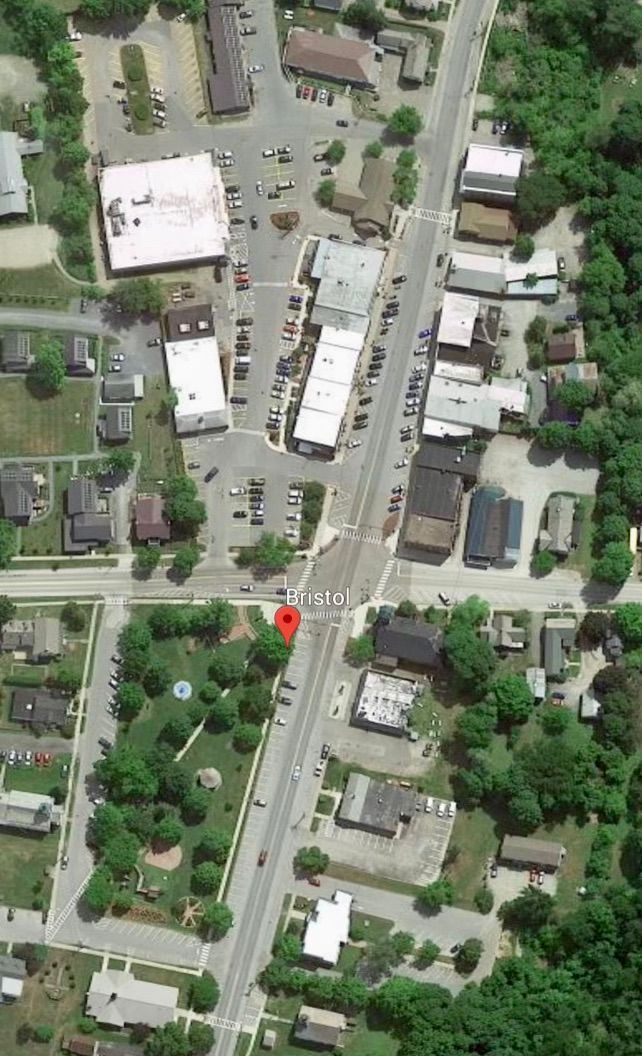
Dominating intersections in Madison, Connecticut and Bristol, Vermont
If a town prioritizes transportation as the chief function of a commercial street, you won't get anywhere (at least in terms of cultivating social activity). Cars should be allowed on main streets as guests, but not as the special guest of honor, and certainly main streets cannot and should not operate as high-capacity roads.
As we have long said: If you plan your communities around cars and traffic, you get more cars and traffic. If you plan your community around people and places, you get more people and places.

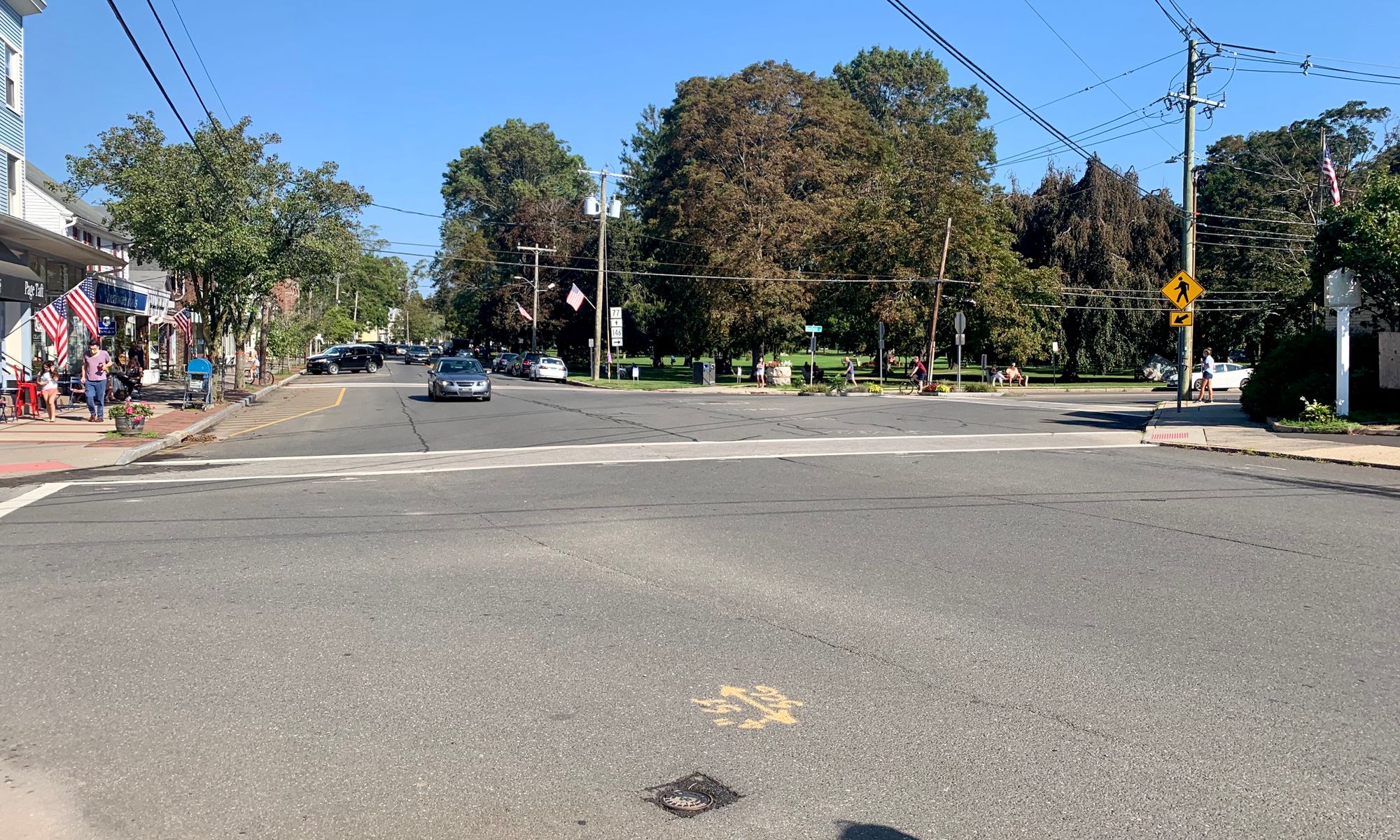

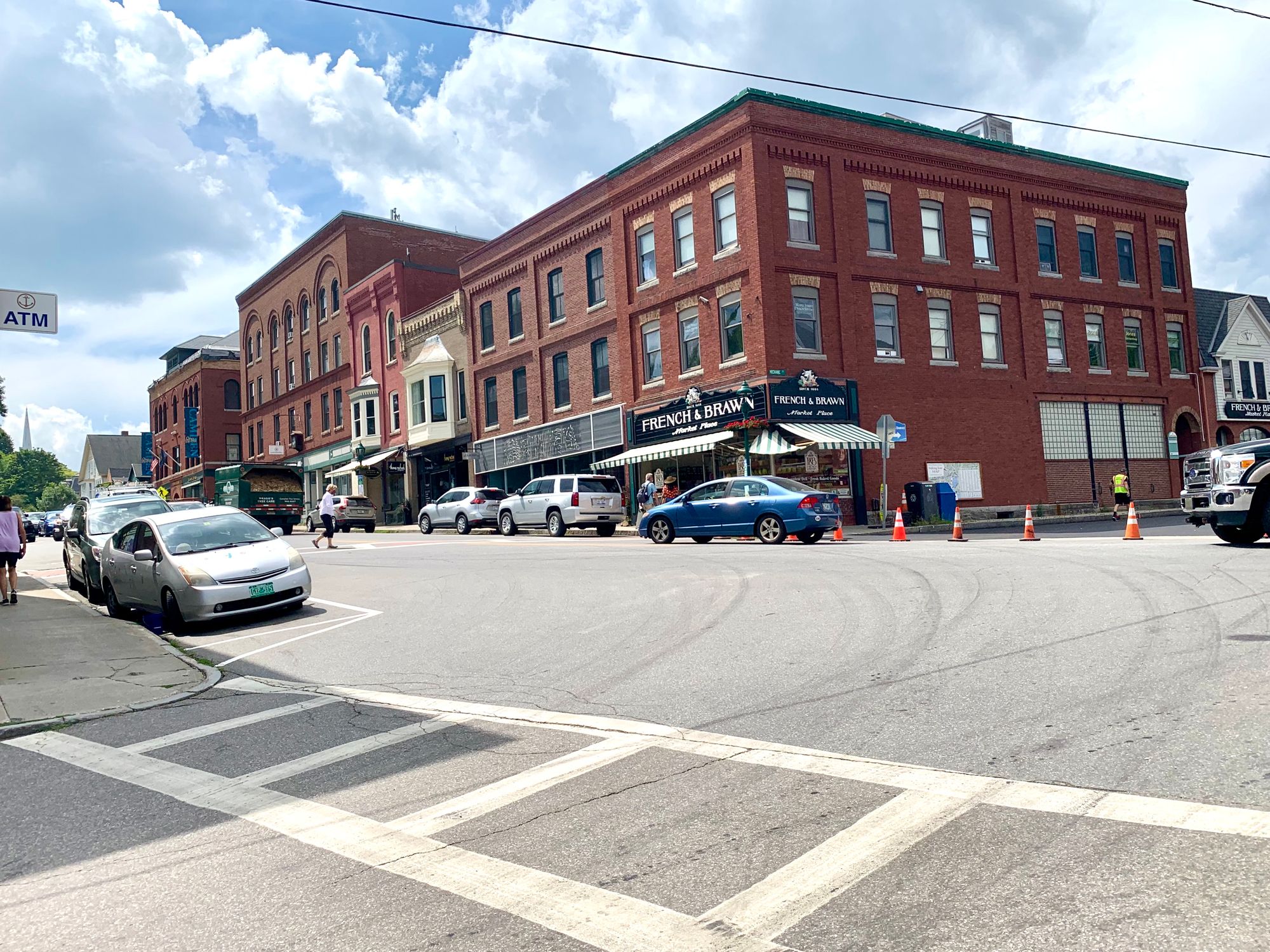
Woodstock, Vermont; Guilford, CT; Litchfield, CT; and Camden, Maine
Making Public Buildings Destinations
Most libraries, churches, schools and museums use landscaping to present their building, and don't make their outdoor areas engaging. Public buildings need to create the equivalent of a front porch to engage people and draw them inside, and use their outdoor areas for programming.
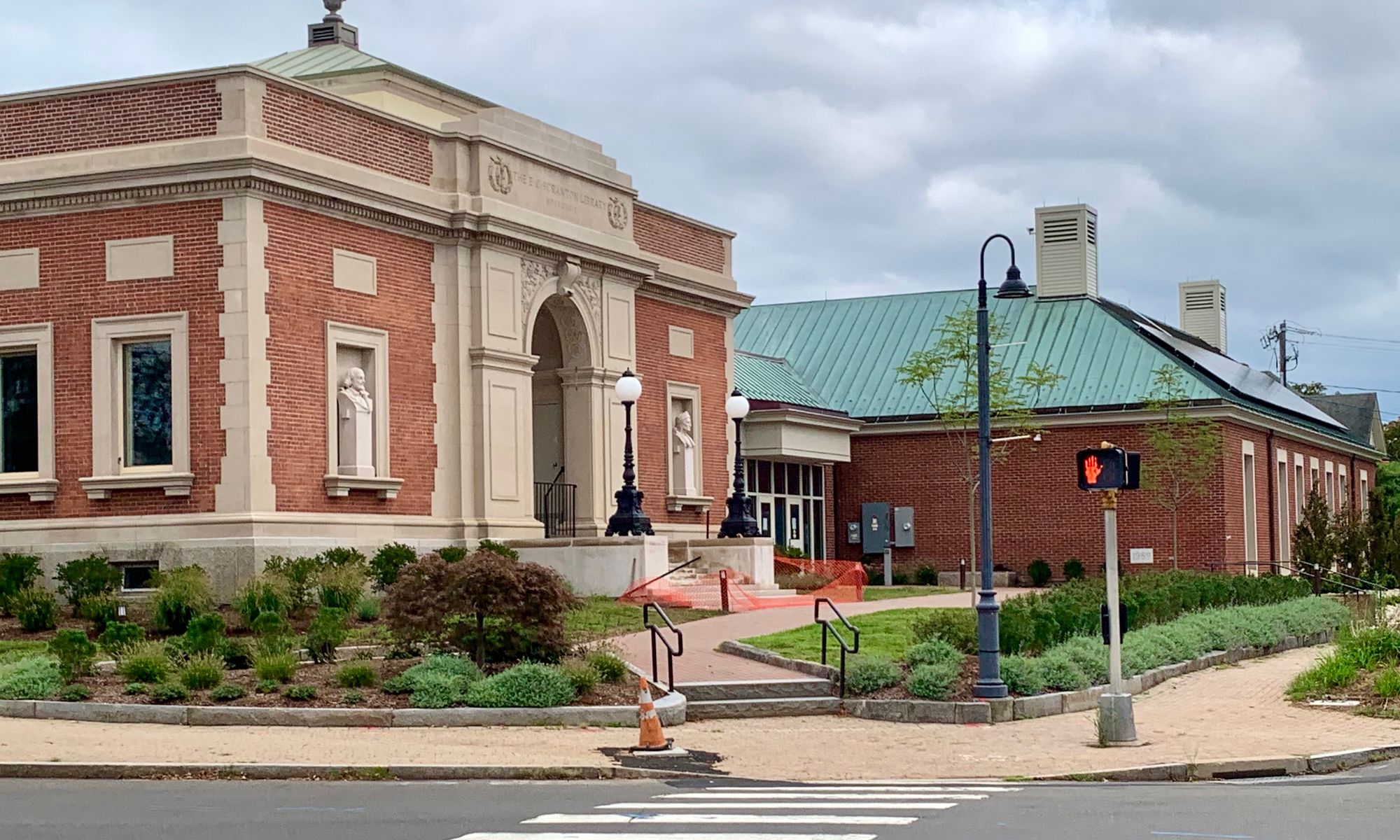

Madison, CT. Library and Post office at Main Corner and entrance to the main Street. Litchfield, Connecticut is an office building with a parking lot. Both have landscaping but no amenities.
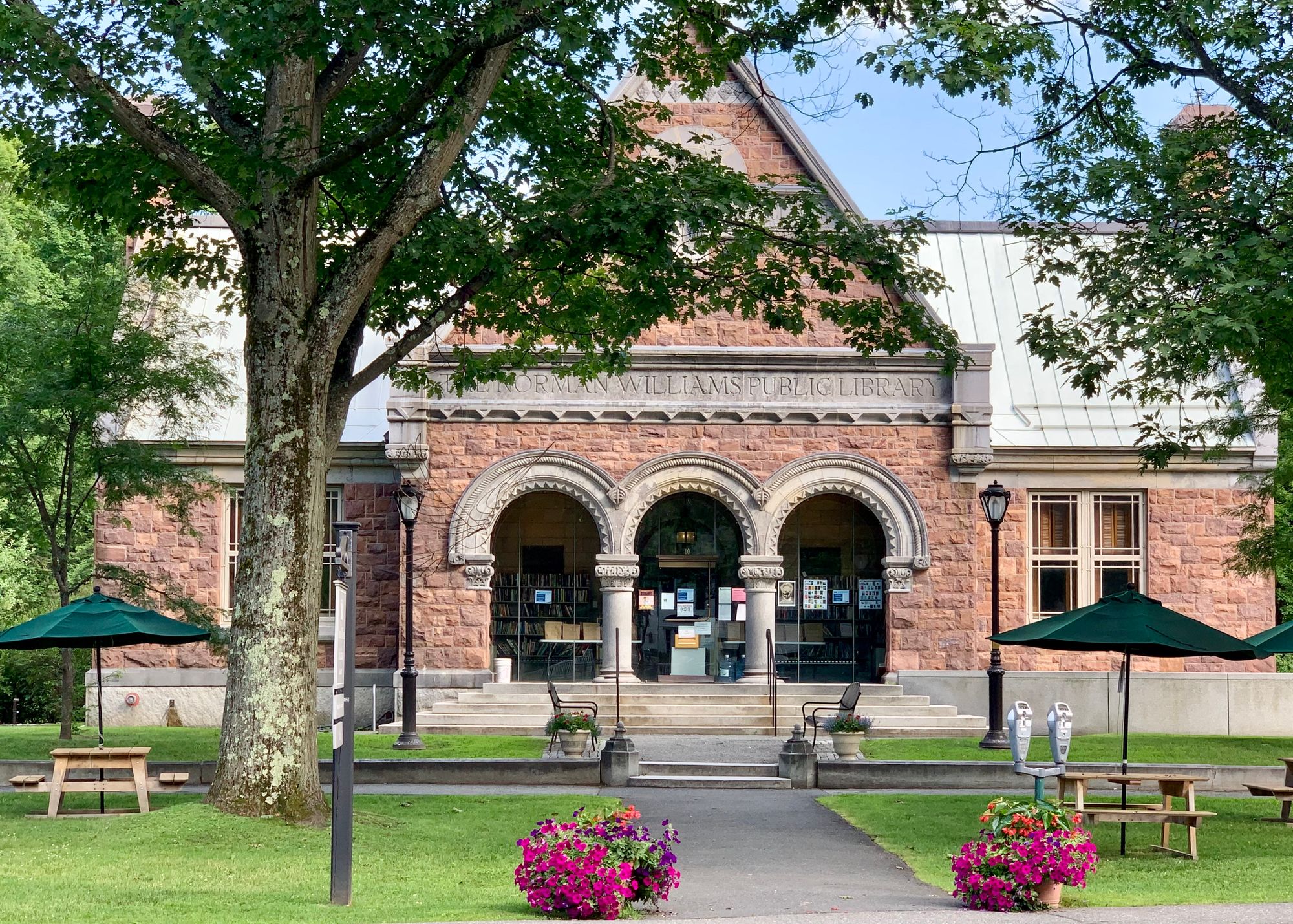


Libraries in Woodstock and Bristol, Vermont are grand buildings on Main Street with multiple uses inside. Bristol's library is in a smaller neighborhood.
Bring Back Multi-use Gathering Places
The idea of a passive town or village green hearkens back to the United Kingdom, where they were primarily used for grazing sheep. Most of the towns we visited didn't have that. More multi-use places are needed to reflect the multitudinous interests of the people living in each of these communities.


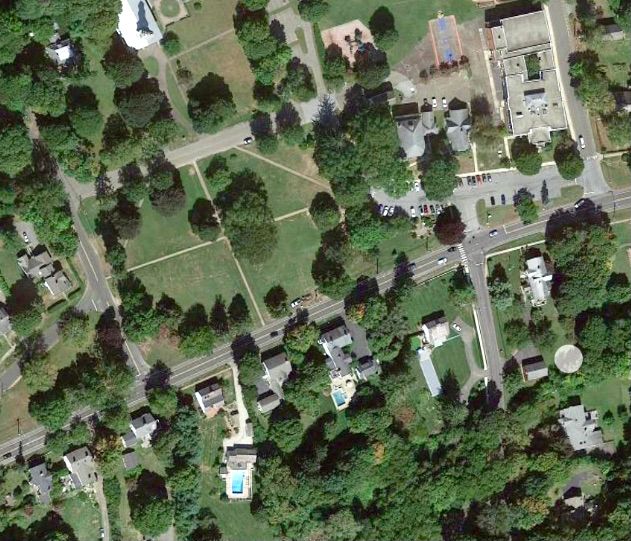
There is not much difference between any of these "greens". Rochester, Vermont, New Haven Green,
Find the Missing Town Squares
A town square or town green can, at its best, be an all-purpose place: the one to which a community defaults whenever it has something to celebrate or share. If we find our way back to this missing piece of small towns, or revive the ones that we already have, it will be a symbolic and important first step for this renewal of all that is unique and wonderful about small towns.
More on Small Towns
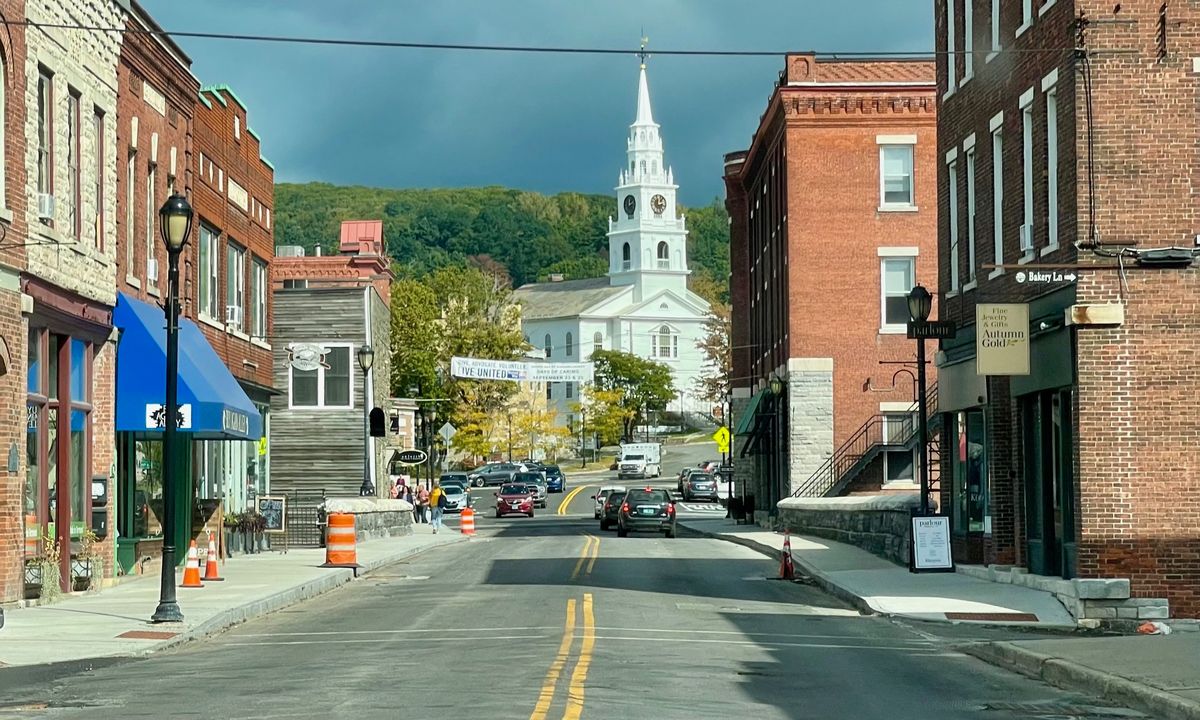



Related Articles
Porch Life: Building Social Neighborhoods
To Save the Planet, Start With the Social Life of Sidewalks
Who Owns the Intersection Defines the Social Life of Neighborhoods
Our Global Catastrophes will be Solved by Local Communities
Where the City Starts: The Social Life Of Sidewalks
La Rambla: Barcelona's Promenade-to-the-Sea is One of the World's Great Streets
Passeggiata: An Exuberant Italian Custom We Should All Adopt
Share with others, comment, and add to the discussion. This post will continue to evolve. You can contact us at hello@placemakingfund.org And for the next steps of the global placemaking movement, see the article below.







